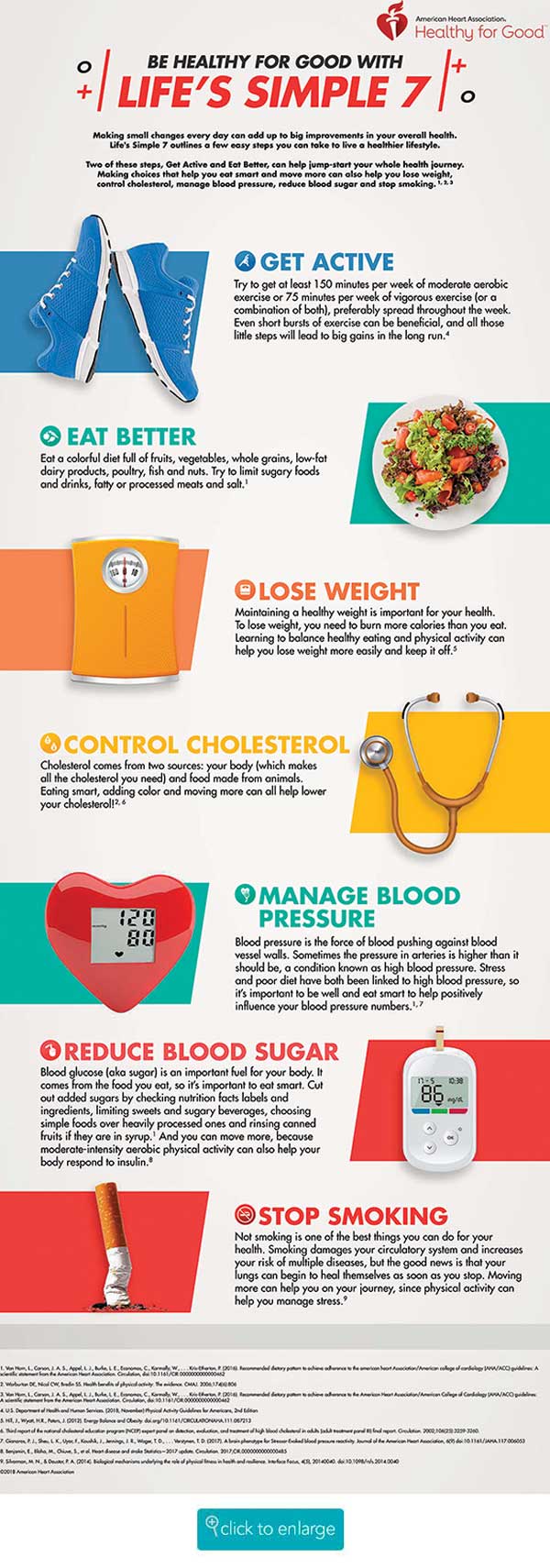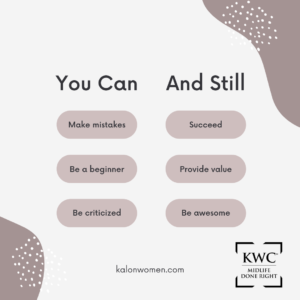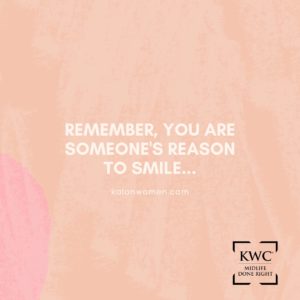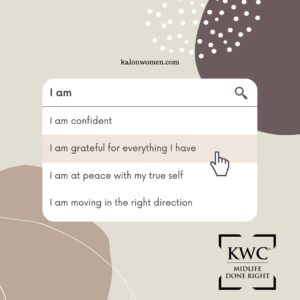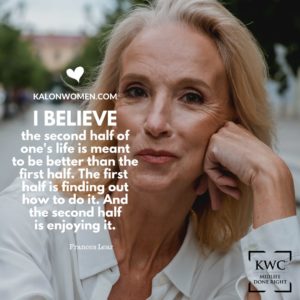Self Care Is a Hot Topic Right Now 15 Apr 2022 7:17 AM (3 years ago)
Self-care is a hot topic that often relates to activities like exploring a hobby or heading to the spa. But what happens when to-do’s hijack your day and life is so busy that you can’t even manage a basic self-care routine such as getting a full night’s rest or pausing to sit down for a nutritious meal?
If you feel so overwhelmed that self-care of any kind seems impossible, you’re not alone. Many people in the United States are suffering from what experts call a wellness deficit disorder.
“America is a land of riches, yet our wellness levels are on the decline. Life might look great from the outside, but many people are not living life from a place of wellness. They’re just going through the motions. This is what wellness deficit disorder is all about,” said Saundra Jain, adjunct clinical affiliate, School of Nursing, University of Texas at Austin.
Radical self-care is a concept receiving ample attention because it is different from the traditional self-care you often hear about. Jain explained that radical self-care centers on self-compassion.
“Radical self-care is about making progress, not about perfection. It doesn’t have to be something complicated, time consuming or expensive. For example, it could be learning to set healthy boundaries and saying no more often. Because when you can say no, it enriches when you say yes,” she said.
Jain recently spoke at the NEXUS trauma summit about radical self-care and how to begin a meaningful routine no matter where you are on your wellness journey. She suggests a daily check-in with yourself to see how your body feels and where your head is at. Taking one day at a time is essential, providing yourself compassion for what you are able to accomplish as well as not accomplish.
Radical self-care can seem challenging, but it doesn’t have to be. In addition to daily check-ins with yourself, Jain shares the following steps to help anyone succeed.
Radical self-care made easy
Breathe: Take a break and breathe in deeply through your nose and then exhale slowly through your mouth. A few deep breaths offer a space to relax and reconsider rather than reacting to a stressful and overwhelming situation. This is a simple yet powerful way to reset.
Stretch: Stand tall, lift your arms above your head and reach upward. Allow your arms to slowly drift down and rest next to your body. Shrug your shoulders up and down. Repeat until you feel tension evaporate.
Close your eyes: Close your eyes and imagine a place that fills you with a sense of calmness. Slowly breathe in and out as you visualize this place of peacefulness. Think about how it impacts your senses. Allow your body to relax into this special place.
If you’d like to learn more about mental health and radical self-care visit NexusMentalHealth.com.
“Wellness is a basic human right,” said Jain. “Radical self-care is a path to wellness. It is made up of practices we rely on no matter what’s happening in our life. Something as simple as mindful breathing is a wonderful reset. Radical self-care practices allow us to be at our very best.”
The post Self Care Is a Hot Topic Right Now appeared first on Kalon Women Collective.
How to break old habits and create new ones with meditation 15 Apr 2022 7:14 AM (3 years ago)
Trying to lose weight, exercise more or start on a difficult project? As Lao Tzu says, “A journey of a thousand miles begins with a single step.” Sometimes that first step doesn’t even require standing up.
Studies show that even 11 minutes a day of Kundalini meditation can boost mental health, promote mindfulness and increase gratitude.
MRI imaging has demonstrated that meditation changes your brain; specifically, the regions involved in learning and memory processes, emotion regulation, self-referential processing and perspective taking.
This simple daily practice, when repeated for 40 days, may be exactly what you need to reach all your goals.
Why 40 days? Because it takes 20 days to break old habits, and 20 days to start new ones. There’s a reason Christians fast for 40 days during Lent, and Judaism teaches that those seeking answers to prayers should pray for 40 days in a row. Did you know that your skin cells renew, on average, every 40 days?
Meditation is easy. It’s quick. It works. And guess what? You can do it with your eyes closed.
Where to start? 3HO, an organization dedicated to sharing Kundalini Yoga around the world, offers dozens of meditations. Give this one a try.
1) Posture: Sit in a comfortable cross-legged position, with a straight spine and your hands gently resting on your knees. Allow your shoulders to relax and picture a string lifting your sternum. Close your eyes and let your breath slow and deepen. Tuck your chin slightly into your chest so the back of your neck stays long and does not round. You’ll feel a slight pressure in your throat.
2) Hands: Make a fist with your hands and extend your thumbs. Then place your thumbs on your temples and find the niche where the thumbs just fit. Now lock your back molars together so that your lips close. Keep your teeth gently pressed together throughout this exercise.
3) Eyes: Keep your eyes closed and focus them on the center of your forehead between your eyebrows (sometimes called the “third eye”). This takes a little practice, and you will feel a tension in the ocular nerve.
4) Mantra: Silently repeat the following mantra — Sa Ta Na Ma — while focusing on your third eye.
5) Time: Continue for anywhere from 3-31 minutes. It’s a powerful practice, and even three minutes is enough to see results.
If you can, practice this meditation every day for 40 days.
You’ve got this.
For more information on Kundalini Yoga and meditation and how it can benefit your health and wellness, visit 3HO.org.
The post How to break old habits and create new ones with meditation appeared first on Kalon Women Collective.
The Intersection Between Loneliness and Social Isolation 15 Apr 2022 6:52 AM (3 years ago)
These past couple of years have been challenging in lots of ways and many people, particularly older adults, have felt the weight and impact of loneliness and social isolation.
This has been especially true when staying home and sheltering in place has been recommended to increase safety. With less contact with others, it may be difficult for older adults to maintain the relationships that are so important to mental, as well as physical, well-being. In fact, loneliness has been found to lead to health risks, such as:
- Depression
- Poor sleep
- Anxiety
- Hypertension
- Cognitive decline
- Heart disease and stroke
In addition, social isolation may lead to:
- Increased risk of dementia
- Cardiovascular disease
- Inflammation
- Reduced quality of life
It becomes incredibly important to understand these effects and impacts of loneliness and social isolation. You might think the two concepts are very similar, if not identical, but they have important distinctions. Loneliness is the feeling of being alone and social isolation is the lack of social contacts. A person can feel alone, even if they have a wide social circle and, on the flip side, it’s possible for someone to not have many social connections yet not feel alone.
A state of loneliness or social isolation can have a major effect on one’s sense of wellness and overall health. But what is the impact when both are present?
Researchers from UnitedHealthcare and OptumLabs, in conjunction with AARP Services Inc., conducted and published a study in 2021 to discover how the combination affected late-life health outcomes. With a random sampling of AARP® Medicare Supplement Insurance Plan from UnitedHealthcare members, researchers, including Dr. Timothy Barnes, Ph.D., senior outcomes researcher with OptumLabs, collected survey data measuring groups who were lonely only, socially isolated only, both lonely and socially isolated or neither.
Those who were both lonely and socially isolated were more likely to be older, with a lower quality of life and greater medical needs and costs. They also had significantly higher rates of ER and inpatient admissions.
“These two constructs have been looked at separately. Moving forward you should make the connection to look at them together,” Barnes said.
Keeping interventions in mind for both conditions could have a big impact on seniors’ overall health. For social isolation it might be things like volunteerism, physical activity and engaging in a community, while for loneliness it might make sense to focus on personal strengths such as defining one’s purpose and building social awareness skills. AARP and the Global Council on Brain Health recently published a guide, “Boosters for Joy: A Guide on Ways to Connect,” that offers a wide range of helpful resources for boosting social connections.
“The pandemic has brought issues of loneliness and social isolation to the fore and should spark a national conversation,” said Dr. Erica Schwartz, M.D., president of Insurance Solutions at UnitedHealthcare. “The need to feel connected and to be connected is even more critical as we face continued disruption and disconnectedness in our daily lives. Research is needed to help further understand the impact of loneliness and social isolation on health and to find strategies to improve resilience.”
For Barnes, it was clear that staying connected to each other is not just a nice-to-have but an urgent priority key to higher quality of life for older adults.
“With social isolation versus loneliness, there are things that you can quantify versus things that you feel,” he said. “Resilience, having a feeling of purpose in life, and optimism are also important.”
To learn more about the study from UnitedHealthcare, OptumLabs and AARP Services Inc., visit https://www.tandfonline.com/doi/full/10.1080/13607863.2021.1940096. For more information on how to help get connected if you’re feeling socially isolated, visit connect2affect.org.
The post The Intersection Between Loneliness and Social Isolation appeared first on Kalon Women Collective.
Put a Spring in Your Step With These Energy-Boosting Tips 15 Apr 2022 6:49 AM (3 years ago)
Days are getting longer, temps are warming up, and you have lots of plans — but do you lack the energy to make them happen? After spending winter mostly indoors, it can be tough to transition to the change in seasons. Fortunately, simple meal and snack swaps, plus new approaches to your exercise routine, can help get you moving again.
Here are easy tips to follow to help you feel ready for just about anything this season.
Choose energy-boosting foods
“You can find more effective — and longer-lasting — energy boosters than reaching for additional cups of coffee or a sugary snack,” says Colette Heimowitz, vice president of Nutrition and Education at Simply Good Foods Company. “You’ll notice a big difference in your mood and energy levels just from swapping out high-glycemic carbs with added sugars and refined grains for higher quality, energy-boosting choices like colorful vegetables, low-glycemic fruits and high-fiber whole grains.”
For better long-term energy and nutrition, try:
- Apples — Apples provide filling fiber, vitamin C and antioxidants. Pair an apple with peanut butter or cheese to lessen the glycemic impact.
- Avocados — These are a great source of heart-friendly monounsaturated fat, plus oleic acid, folate and vitamin E. Have half an avocado as a snack on toasted sprouted bread, or add slices to tossed salad or scrambled eggs. An avocado a day combined with a healthy diet may lower LDL cholesterol.
- Nuts — Most nuts combine protein, healthy fats and fiber that help you feel full, so you’re less likely to experience energy dips. Aim for up to two one-ounce nut snacks per day, such as topping a serving of full-fat Greek yogurt in the morning or for an afternoon snack.
- Leafy green vegetables — Spinach is one example, full of nutrients like fiber, iron, calcium, magnesium, potassium, vitamins A, C, E and K — plus energy-boosting iron. Add spinach to any egg dish, soup or salad.
- Fatty fish — Salmon is popular for good reason, as it’s flavorful plus full of protein and heart-healthy omega-3 fatty acids to fill you up and minimize blood sugar swings.
- Atkins Iced Chai Protein Shake — For a quick pick-me-up, this ready-to-drink creamy shake is made with real tea and spiced chai flavor. It contains as much caffeine as a cup of tea while delivering protein and fiber, offering a non-coffee alternative for those seeking more protein and energy.
Try this recipe for a protein boost:
Ingredients
2 tablespoons quick cooking oats, raw
2 tablespoons hemp hearts
2 tablespoons chia seeds
2 tablespoons coconut, unsweetened, shredded
1 Atkins Iced Chai Protein Shake
1 tablespoon pine nuts, roasted
1 teaspoon coconut, unsweetened, shredded
2 pinches ground cinnamon
Directions
In each of 2 6-ounce jars with lids, mix 1 tablespoon oats, 1 tablespoon chia seeds, 1 tablespoon hemp hearts and 1 tablespoon coconut shreds until evenly combined. Add half the shake (5.5 fluid ounces) to each jar and mix until very well combined. Cover with lids and refrigerate at least 4 hours, or overnight.
Before serving, lightly toast pine nuts in a 400-degree oven for 3 minutes, shaking once halfway through. Top each jar with 1/2 tablespoon roasted pine nuts, 1/2 teaspoon coconut shreds and a pinch cinnamon. Makes 2 servings.
Visit Atkins.com for more low-carb nutrition ideas.
Springtime is the best time to get moving
Spring weather is perfect for getting outside and enjoying a dose of immune-boosting vitamin D, whether walking with friends, running or biking. Exercise helps:
- Preserve and build lean body mass
- Improve mood and decrease depression
- Maintain weight loss or lose weight
- Prevent heart disease, diabetes, metabolic syndrome and more
- Improve sleep
- Boost energy
Level up your usual routine or try something new
Even if you exercise regularly, your body gets used to your current level of exercise and may no longer feel challenged. You may need a refresh. Do you enjoy walking on a treadmill or biking indoors? Take it outside or increase your pace. Plateaued in your strength routine? Add more reps or weight.
Challenge your body with a new activity. Ever try pickleball or badminton? How about salsa or line dancing? Or stream new workouts, from yoga to jump roping. Find something that adds excitement to your routine, that you look forward to doing.
Following these tips, you’ll find yourself bursting with energy as you welcome the longer, warmer spring days.
The post Put a Spring in Your Step With These Energy-Boosting Tips appeared first on Kalon Women Collective.
Top Garden Trends and Expert Tips for Success 15 Apr 2022 6:42 AM (3 years ago)
Interest in gardening continues to blossom as more people decide to exercise their green thumb and make the most of their outdoor spaces. Whether it’s a quaint balcony, large backyard garden or front yard landscaping, gardening opportunities are bountiful.
With a little creativity and some expert insight, anyone can be a successful gardener. The team at Ball Horticultural Company shares simple tips and the top trends for 2022 to inspire every type of gardener.
Low maintenance, high impact
Do you want a magazine-worthy landscape but don’t want to spend every day tending to plants? The trick is to strategically select eye-catching flowers that are easy to care for.
There are many plants that offer beautiful blooms with surprisingly little work. Beacon Impatiens are the ideal plant for flowerbeds with partial sun, rewarding you with ample, long-lasting color for the shade. Add Megawatt Begonias in pots and transition spaces — this bigger-than-life hybrid provides rich color and glossy foliage with little care. For sunny spots, you can’t go wrong with low-maintenance E3 Easy Wave Petunias. This spreading petunia comes in a variety of hues, adding sweeping color that will be the envy of the neighborhood.
Fun and flavorful foods
As the sustainability movement continues, more people are interested in growing their own food. Whether it’s a small herb garden or a large vegetable plot, having homegrown food at your fingertips can help you eat healthier and fresher.
Many vegetables and herbs do as well in containers as they do in the ground, so if you’re short on space, you can still succeed with growing vegetables as long as you can give your plants a sunny spot and adequate water. An insider tip is to skip seeds and buy garden-ready plants that are already established, such as Burpee vegetables and herbs. This helps support successful growing and faster harvests.
Tomatoes are a must for any vegetable grower. But what if you don’t have an outdoor growing space? No garden, no problem with the Kitchen Minis collection of indoor potted vegetables. Look for Siam Tomato, which gives you several weeks of cherry-sized fruit for your fresh eating and recipes. Enjoy it on a sunny windowsill indoors or next to your other easy-access countertop herbs.
Pollinator gardens
Pollination is essential for plants to flourish, and according to the U.S. Forest Service, pollinators are responsible for assisting over 80% of the world’s flowering plants to reproduce. This includes hard-working insects like butterflies, bees and birds. Because of their essential work, everyone can enjoy plants that delight the eyes and tasty foods that tantalize the taste buds.
Some pollinator populations are diminishing, so people are taking action by planting pollinator-friendly gardens. For example, if you want butterfly bliss in your garden, choose Chrysalis Buddleia. Known as Butterfly Bush, this plant has an abundance of flowers but grows in a manageable size — perfect for a small hanging basket. Add in a few Shamrock Lantana, whose blooms are an attractive, soft landing pad, and you’ll be creating a pollinator paradise.
First impressions
After spending the last few years close to home, people are taking exceptional pride in their property by prioritizing curb appeal. Friendly yellows and vivid purples are on trend and broadly appealing, making your home stand out on the block.
For a sunny show all season long, plant Bee’s Knees Petunias. The intense yellow color of each big bloom adds brightness to your landscaping. Juxtapose the yellow with Jolt Purple Dianthus, adding a vivid magenta shade that instantly adds personality.
Curb appeal can come from more than just flowering plants, of course. For visual interest in a fruiting plant, check out Pepper Candy Cane Chocolate Cherry. With variegated foliage and uniquely striped fruit that changes from green to chocolate and cherry red, this is a treat for the eyes and the stomach.
No matter the size of your garden space or the time you can put into your plants, there’s something for everyone in the top gardening trends of the year.
The post Top Garden Trends and Expert Tips for Success appeared first on Kalon Women Collective.
How Wellness Is Driving All Things Home Improvement 15 Apr 2022 6:40 AM (3 years ago)
When you think about your health, eating well, exercising regularly and getting adequate sleep likely come to mind. What you may not realize is the dramatic influence your spaces have on your overall well-being, mentally and physically. This means for good health, you need to take a closer look at your home.
With most people spending more time at home than ever before, this becomes that much more important. This realization has inspired homeowners to make thoughtful updates that not only enhance their home, but also support the wellness of the body and mind of everyone who lives there.
“Our health and happiness are the most precious things that we can take care of. You couple that with your biggest investment outside of yourself, which is your home, and those two are intrinsically linked,” said Erin Lilly, manager, Design Studio, Kohler.
Three big ideas are driving wellness home design:
1. Spaces have a profound impact on health. The lighting, air quality, materials, layout and countless other factors influence people on physical, mental and emotional levels. These considerations should drive a project from concept to completion.
2. Expectations for home and work have changed dramatically, thanks to the increase in remote work and hybrid schedules. Homes need to become workplaces, and now, workplaces need to become more like home.
3. Designing for well-being isn’t just about the now. It’s increasingly about understanding long-term needs. With more homeowners looking to age in place, homes need to stay beautiful and usable for evolving needs.
If these points resonate with you, consider how wellness design can be incorporated into your home. Wondering where to start? The kitchen and the bathroom are two primary spaces that provide ample opportunity for making improvements that not only provide an updated aesthetic, but also support overall well-being through functionality and health-focused enhancements.
For example, a simple shower can be transformed into a multisensory space that helps you rejuvenate or relax, depending on your needs. The DTV+ digital showering system brings water, sound, steam and light together for a sensory experience you’ll look forward to each day. Every element of your shower is customizable and controlled by a touch-screen interface, making it easy to set your experience for your exact needs.
Another important wellness aspect of the bathroom may not be quite as glamorous as the shower, but it is equally important when it comes to your health: the toilet. You can easily enhance your existing toilet with a new bidet seat that helps keep you clean when it really counts.
For example, every aspect of the Purewash bidet seat was designed with hygiene in mind, including the anti-bacterial seat, anti-bacterial wand and self-cleaning nozzles, so you can feel confident in your clean every time you use the bathroom. Plus, the quiet-close seat is a nice feature, especially for evening bathroom visits.
The kitchen is another space where wellness improvements can benefit the whole family. From stylish, ergonomic chairs to strategic lighting that features task and ambient lights, there are many improvements that can enhance your health.
One basic update that can benefit you for years to come is replacing your existing faucet with one that blends function, fashion and health. For instance, the Tone faucet has clean lines and a soft teardrop base, offering a fresh take on mid-century modern style. The touchless on/off feature limits the spread of germs, and the three-function pull-down sprayhead gives you options for any cleaning needs.
Wellness in home design is poised for growth as people prioritize their health. Visit Kohler.com/Living to explore products and perspectives that explore the meaning of well-being, look at how the built environment impacts health and offer ideas for creating spaces that support greater wellness.
The post How Wellness Is Driving All Things Home Improvement appeared first on Kalon Women Collective.
Early Inventors – Women in History 6 Jan 2022 6:31 AM (3 years ago)
We have written about women inventors before but there are always new ones whose stories we would like to share. In this month’s column, enjoy reading about women some of whose inventions we use every day.

Masters Patent for Cleaning and Curing Corn
Sybilla Masters’ husband received two patents in his name for his wife’s inventions. These patents were issued in London, as the United States of America did not yet exist, and patents were not issued to women. These patents, given to “the Colonies” which is what the U.S. was called at the time, are believed to be the first patents so granted. In 1715, Sybilla patented a method of crushing corn at the gristmill she and her husband owned. Masters is believed to have developed the process after she watched Tuscarora Indian women beat corn with a pestle in large bowls. Her 1715 patent was titled “Cleansing Curing and Refining of Indian Corn Growing in the Plantations”. Masters was also an entrepreneur and sold her “Tuscarora Rice” in Philadelphia, where she lived. The second patent issued to Thomas Masters was for “Working and Weaving in a New Method, Palmetta Chip and Straw for Hats and Bonnets and other Improvements of that Ware.” This was a new way of working and staining straw and palmetto leaf to produce women’s bonnets using materials found in the New World. Masters marketed her patented hats “against Catherine Street in the Strand (London).”

Patent for Improvement in paper-feeding machines
Itinerant inventor Margaret Knight spent years perfecting the machine that folds square bottom paper bags – the grocery bag. Defending her patent before the Commissioner of Patents against claims of a man who said it was his idea, she demonstrated knowledge and persistence and won her case – and her patent (1870). The paper-folding machine that resulted in grocery bags was her first issued patent. She conceived of the idea in 1867. She first attached her guide finger and plate-knife folder to paper-bag machines at a shop where she was employed in Springfield, Massachusetts. Satisfied with the results, she constructed a full-scale wooden model. She made the model drawings to have an iron model made by a skilled machinist and filed her patent paperwork. Knight has been described by some as a “female Edison: as she holds patents on some twenty-six items. Knight’s other patents ranged from projects domestic in nature to heavy machinery. Some of those patents included a dress and skirt shield (1883), a clasp for holding robes (1884), a spit (1885), a series of patents for shoe-cutting machines, and a series of patents for rotary engines and motors.

Martha Coston’s interest was in an area considered “highly unfeminine.” Coston was a widow with four children. She needed to support her family and she found the idea of making flares in her inventor-husband’s notebooks, after he had died. She was determined to make a signal flare. Signal flares were hard to make; they had to be both durable and simple and they had to last for a long time. In the mid-1800s, to make a flare required gunpowder, chemicals, pyrotechnics, as well as the ignition apparatus. Martha Coston’s green, red and white signal flares worked so well that the navy bought them from her for $20,000, an astounding amount of money at that time. Coston flares were used during the Civil War battle between the Monitor and the Merrimack. Martha Coston received her patent for this flare in 1871. She was inducted into the National Inventors Hall of Fame in 2006.

Inventor Mary Jane Montgomery received a patent in 1864 for improved locomotive wheels. In 1903, she is called the only professional woman inventor in the country by Scientific American. She is known to have patented a war vessel (1864), a metal punch (1866), and a bridge (1868). The war vessel, also called an amphibious fortress, was described as follows: “a war vessel that can be taken apart and put together again in different shape on land to serve as a fort. All of the pieces of the ship are corrugated, and fit into each other, being held together by bolts.” It was one of 125 women’s patent models exhibited in the Cotton States and International Exposition in Atlanta in 1895.
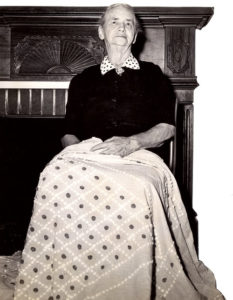
An important figure in the carpet industry, Catherine Evans Whitener, received only a fifth-grade education. Her curiosity about a tufted bedspread that was a family heirloom resulted in her resurrecting a technique called ‘candle wicking’ when she was just 15 years old. That tufted bedspread led to mats and bathrobes and eventually the Evans Manufacturing Company (1917). By 1941, the bedspread industry which was centered in Dalton, Georgia employed 10,000 people and had sales of $25 million. Today, 90% of carpet produced uses tufting. In 2001, Whitener was named a Georgia Woman of Achievement.
These inventors, as well as many other women, almost all of whom we have not heard about nor learned about in school, are profiled in our book, Her Story: A Timeline of the Women Who Changed America. Help us by continuing to tell the stories of the women who came before us, on whose shoulders we all stand. Tell young women especially so they understand that they can dream BIG, and then make their dreams a reality.
The post Early Inventors – Women in History appeared first on Kalon Women Collective.
Everything Korean Is Trending – Kimchi Is One Major Reason 6 Jan 2022 6:09 AM (3 years ago)
From BTS to Squid Game, Korean culture is seriously trending right now. And beyond K-Pop and K-Drama, much of the buzz comes from the unique flavors of Korean cuisine — with kimchi as the key. If you follow the latest cooking shows, recipes and up-and-coming restaurants, you’ll notice kimchi is everywhere, and for good reason — its refreshingly crunchy texture and spicy, tangy “umami” flavor appeals to many palates, and it’s also known to have health benefits. Kimchi’s popularity is skyrocketing at a time when Korean culture is hot and plant-based dishes are all the rage.
Just how much is kimchi trending? The Jongga brand of kimchi, which represents more than 60% of the kimchi exported from South Korea to the U.S., reports an increase in those exports of more than 20% in just the last three years.
“We’ve been amazed at the growing popularity of this traditional Korean staple,” said Brian Tompkins, vice president of sales and marketing, Daesang America, maker of Jongga kimchi. “And we’re delighted to share it with foodies and food lovers everywhere.”
Here’s a quick guide to kimchi, how you can use it — and how to try out this food phenomenon for yourself!
What’s in kimchi?
Cabbage (baechu, or napa cabbage) is the core of kimchi, but you can add other vegetables to make it your own. Vegetables often used in kimchi include:
- Radishes
- Cucumber
- Chives
- Mustard greens
- Perilla leaves
Beyond the veggies, it’s all about the seasonings, plus the fermentation process. Top seasonings used in kimchi include:
- Chili peppers, flakes and/or powder
- Onions
- Garlic
- Ginger
Most cooks also add fish sauce and/or saeujeot (fermented shrimp), which you can skip if you’re going vegan.
How is kimchi made?
Kimchi’s unique flavor comes from the process of lacto-fermentation, which is how foods like sauerkraut and dill pickles are made. Fermented foods also are having a moment right now, due to growing interest in the health benefits from probiotics (which occur as a result of fermentation) for good gut health.
To make kimchi, cabbage is heavily layered in salt for a few hours. After the cabbage is rinsed, all the other ingredients are combined and packed into a container, then allowed to ferment for a few days — or much longer — at room temperature. Kimchi also can be eaten fresh, skipping the fermentation step.
Sound complicated and time consuming? While the kimchi-making process seems daunting, there’s a much easier way: Buy kimchi already made with traditional ingredients and in a variety of great flavor combinations.
For example, Jongga offers a wide array of kimchi products, including:
- Sliced Napa Cabbage Kimchi in spicy and mild flavors. The kimchi comes in small, easy-to-use pouches. This Kimchi complements many dishes, especially meats like steak or BBQ.
- Shelf Stable Vegan Kimchi is perfect to travel with, to enjoy as a side dish or use as a topping or ingredient in other dishes.
- Kimchi Ramen combines the great flavor of kimchi with tasty ramen noodles for a quick lunch or side, and comes in a package, bowl or cup for a convenient, portable meal.
Check out these and other kimchi products at JonggaUSA.com.
Recipes using kimchi
To incorporate the unique taste of kimchi in fun new recipes, try one of these easy-to-prep dishes.
This playful twist on a fried egg sandwich is even tastier with added bacon or sausage — make it your own!
Cook time: 15 minutes; Makes 3 servings
Ingredients
1 1/2 tablespoons canola oil
1 tablespoon onions, chopped
1 cup tomatoes, chopped
Oregano to taste
Salt to taste
1/2 cup Jongga kimchi, chopped
6 eggs
1 tablespoon spring onion, chopped
6 slices toasted bread
Directions
Heat large skillet over medium-high heat with oil.
Add onions and cook 5 minutes.
Add tomato, kimchi and season with salt and oregano.
Stir well and bring to simmer, let cook 5 minutes until slightly thickened and reduced.
Crack eggs over sauce. Continue cooking 5 minutes or until eggs are cooked to your liking.
Serve with spring onion and toasted bread.
You can try also these recipes for Stuffed Baked Potato with Cheese and Kimchi or Kimchiadillas, a tasty kimchi pancake.
Find kimchi products online or near you at JonggaUSA.com.
The post Everything Korean Is Trending – Kimchi Is One Major Reason appeared first on Kalon Women Collective.
Diabetes Is the Leading Cause for Kidney Disease 6 Jan 2022 6:07 AM (3 years ago)
Today, nearly 122 million people in the United States are living with diabetes or prediabetes. This condition is the leading cause of kidney disease — where the kidneys lose function over time until they fail. In fact, one in three adults with diabetes has developed kidney disease.
Raising awareness about the link between these two chronic conditions is the first step to improving the health of people at risk of kidney failure. That’s why health care provider DaVita Kidney Care has collaborated with the American Diabetes Association® (ADA) to help increase early detection and risk reduction for kidney disease.
“Our partnership with DaVita has created a platform for the American Diabetes Association to get information to those who need it most,” said Dr. Bob Gabbay, chief scientific medical officer for the ADA. “We’re working together to build awareness about the connection between diabetes and kidney disease — and to help people with these conditions manage their health.”
Fifty percent of people with very low kidney function don’t know they have kidney disease. By the time many people discover the state of their health, their kidneys have failed and they need a transplant or dialysis treatment to live.
“We’re committed to addressing kidney failure holistically, which includes getting ahead of kidney disease to help patients receive preventative care,” said Dr. Jeff Giullian, chief medical officer for DaVita. “We’re also ensuring there are no-cost tools available to help people address and manage these conditions before they progress.”
Early detection of diabetes is proven to prevent life-altering complications like kidney failure. Testing is a simple but essential tool to detect risk for diabetes and monitor the disease’s progress. For those living with diabetes, it’s critical to get your kidneys checked regularly by a doctor through simple blood and urine tests.
Because people living with diabetes are at greater risk of developing kidney disease, the ADA is helping to get the word out about DaVita’s Kidney Smart® classes. These no-cost classes are open to anyone and led by kidney experts. They provide communities with an overview of kidney disease risks, detection information, and diet and nutrition resources.
Diet is a connecting point between diabetes and kidney disease, as a key driver of type 2 diabetes and a critical part of maintaining kidney health. Through the ADA’s Health Equity Now initiative, DaVita is working with the ADA to help provide adults with type 2 diabetes with lifestyle guidance such as maintaining a healthy weight, delivered through on-demand education. Focusing on exercise and medications along with a healthy diet are among the best early treatments for kidney disease.
It’s more important than ever to take these necessary steps towards better health and wellness for everyone.
Celebrating small wins when it comes to your health is just as essential as prevention. Small wins become big victories and little changes turn into lifelong habits. Organizations like the ADA and DaVita Kidney Care are here to help celebrate these wins. Through awareness, education, and illness management, we can all work together to lower the number of Americans with diabetes and kidney disease. We can create a better life for those living with these conditions.
The post Diabetes Is the Leading Cause for Kidney Disease appeared first on Kalon Women Collective.
Healthy Vision for a Healthier You: 5 Key Questions for Better Eye Health 6 Jan 2022 6:04 AM (3 years ago)
Active living and healthy vision go hand in hand. That’s why protecting your eyes is so important. As you make informed choices to improve your well-being in 2022, here’s some important information that can help better your eye health too.
These five frequently asked questions about a common eye disease can serve as a guide to take care of your vision in the year ahead.
1. What is glaucoma?
Glaucoma is caused by eye pressure that is too high and can damage the optic nerve. The most common form of glaucoma is open-angle glaucoma, where pressure builds slowly and often without warning. More importantly, early damage from glaucoma typically causes loss of side vision, which may not be noticeable until extensive irreversible damage has occurred. Left untreated, glaucoma can lead to worsening vision and irreversible blindness. The best way to manage glaucoma is through early detection and treatment. Step one in that process is having a regular eye exam.
2. How do I find an eye doctor?
The start of a new year is the perfect time to make annual eye exams part of your healthy lifestyle. At your appointment, an eye doctor — either an ophthalmologist or an optometrist — will perform an eye exam to look for any vision issues. To find a local eye doctor, start with research and ask your primary care doctor, family and friends for referrals. Helpful resources include the American Academy of Ophthalmology’s Find an Ophthalmologist page and the American Optometric Association’s Find a Doctor page, where you can find a list of eye doctors in your area.
3. Is glaucoma care covered by health insurance?
Receiving a diagnosis of glaucoma can be alarming. The good news is that there are a range of treatments to help you and your doctor manage your condition. Medical treatment for eye diseases, including glaucoma, is typically covered by health insurance. Check with your healthcare provider for specifics on your level of coverage. If your treatment plan includes prescription medications such as eye drops, be sure to shop around at various pharmacies to find the best price. If you are at high risk of glaucoma, you are eligible for an annual glaucoma screening through Medicare, which also may help cover glaucoma medications and treatments. If you are still working and have commercial insurance, you may be able to take advantage of savings cards provided by the manufacturers of your medicines.
4. How can I better manage my eye medications?
Properly taking prescription eye drops to manage pressure in your eye can be a fundamental part of the glaucoma treatment routine. When using eye drops, it’s important to follow your doctor’s instructions, always wash your hands, and keep your eye dropper clean. Other helpful tips include resting your hand on your face to reduce hand shaking, and placing eye drops in the inner corner of your eyelid. If you are having trouble keeping up with your dosing schedule, talk to your eye doctor about options for reducing the number of drops you take, including options for in-office laser treatment.
5. Are there other healthy living choices that can benefit eye health?
There are many lifestyle choices that can help keep your eyes healthy. These include eating a diet rich in green leafy vegetables, fish, proteins such as eggs and beans, and citrus fruits; exercising regularly; wearing sunglasses with ultraviolet (UV) light protection; and quitting smoking. Rest your eyes often to maximize your ability to use your computer, tablet and phone. Above all, always listen to your eyes. If you are experiencing a change in vision or any other eye symptoms, contact your eye doctor.
“Your eyes are an important part of your overall health. By taking steps to identify and treat eye diseases as early as possible, and staying diligent to healthy living goals, you can help keep your eyes healthy and your vision sharp,” says Andrew Iwach, M.D., executive director of the Glaucoma Center of San Francisco.
The Glaucoma Research Foundation offers a wealth of online resources to help you build a plan for better eye health, including “Understanding and Living with Glaucoma.” This free booklet, with support by Aerie Pharmaceuticals, is available in English and Spanish. It can be downloaded or ordered at www.glaucoma.org/booklet.
The post Healthy Vision for a Healthier You: 5 Key Questions for Better Eye Health appeared first on Kalon Women Collective.
3 Ways to Stay Active and Keep Your Mind in Shape 6 Jan 2022 6:03 AM (3 years ago)
Aging brings about many changes. Beyond graying hair and wrinkles, your brain is also changing as you grow older and wiser. According to McKnight Brain Research Foundation, 87% of people 65 and older experience cognitive changes associated with normal aging. The good news is that these changes don’t have to be a normal passage of aging. You may find that you can combat some cognitive decline through exercise.
Beyond staying physically fit and healthy, exercise can benefit your mental health. Physical activity improves cognitive function as people age through neuroplasticity, which allows the brain to compensate for injury and disease and adjust in response to new situations. Exercise also helps alleviate stress and depression.
Here are three ways you can stay physically active and reap the mental benefits.
Take a walk
Daily walks are incredibly beneficial and easy to incorporate into your routine. You can start small by taking a walk around your block or going to a local park for a short circuit. As you continue to build your walking stamina, you may find that you can go farther and farther.
While walking, you can also enjoy listening to an audiobook or podcast. Learning about new subjects is another excellent way to keep your mind healthy as you age. You can also listen to music or simply enjoy the ambient sounds of nature.
Walking doesn’t have to be a solitary activity. Ask a friend or family member to come along on your daily walk. Your neighborhood may have local walking groups. Joining a group allows you to stay active, provides community and allows you to make new friends.
Join a fitness class
Group exercise is a great way to stay active. Your local gym or community center is likely to have group fitness classes like SilverSneakers several days a week at various times, so you can easily find one that fits your schedule.
Whether you’re going back to a familiar activity like swimming and water aerobics or learning a new form of exercise like yoga and dance, a fitness class allows you to have a repeating, consistent physical activity in your weekly schedule.
“I encourage seniors who are new to exercise to try a class like SilverSneakers that is designed specifically for older adults,” said Richard Ashworth, president and CEO of Tivity Health, the company that delivers SilverSneakers. “We also have a wide variety of live virtual classes through SilverSneakers.com with trainers who guide participants every step of the way. These classes are a great way to get moving from the comfort of your home.”
Keeping your mind as active as your body is vital to healthy aging. SilverSneakers has added mental enrichment to the experiences available to members by joining forces with GetSetUp, a virtual learning platform designed specifically for seniors. The program offers a wide range of classes through a senior-specific video platform optimized for ease of activation, user engagement and social connection.
“Once you turn 65 or 85, it doesn’t mean you can’t keep learning, trying new things and sharing your passions with others,” said Lawrence Kosick, Co-Founder and President of GetSetUp. “The older adults who participate in GetSetUp classes are eager to explore new topics and develop or deepen hobbies. Not only is it a lot of fun, but with brain health being as important as physical health as we age, learning new skills or enjoying mentally stimulating activities with peers all can lead to healthier aging.”
These online classes allow older adults to learn new skills, combat social isolation and unlock new life experiences. The program also encourages seniors to become instructors and share their skills and knowledge with their peers.
Keep stretching
As you age, you tend to lose some muscle strength and elasticity and your joints weaken. A gentle way to incorporate movement into your life is to do daily stretches. Stretching provides several benefits, including increased circulation and blood flow, enhanced muscle strength and improved range of motion and flexibility. You may also find that stretching relieves lower back pain and stiffness associated with arthritis.
Low-intensity stretching — such as lunges, squats and shoulder circles — can also improve your mood and energy. You can incorporate these and other stretches into your routine by starting your day with some light stretches after your morning cup of coffee or doing a few dynamic yoga stretches before turning in for the night.
No matter what type of physical activity you decide to do, invest in your mind and body and get moving today.
The post 3 Ways to Stay Active and Keep Your Mind in Shape appeared first on Kalon Women Collective.
Retirement Readiness Hacks to Help You Save Smarter 6 Jan 2022 6:00 AM (3 years ago)
What are your goals for the future? If retirement planning is top of mind, you’re not alone.
According to new research from Empower and Personal Capital, 36% of Americans are making retirement planning a priority this year. That’s more than those who said losing weight (28%), buying a house (14%) or getting a new job (11%).
Whether you’re just getting started or looking to kick it up a notch, here are some of the best ways to save for retirement in 2022 and beyond:
Understand your complete financial picture
It’s important to look at your finances from where you are in the present and where you want to be in the future. Make sure you’re in a good spot now, so you can stay on track to accomplish future financial goals.
One simple way to start is understanding where your money is going and any barriers that are holding you back from meeting your goals. Utilize online tools that can help provide a holistic snapshot of your financial life and commit to making changes where necessary. For example, determine areas you can decrease spending and put more money toward saving.
Maximize retirement savings plan perks
Don’t leave “free” money on the table. If you have an employer-sponsored 401(k) plan (or 403b, 457 or other), enroll and meet your match. This is the money your employer provides to match what you set aside for retirement, so you can save more than if you did it individually.
Additionally, check out the IRS 401(k) limits and consider maxing out your contribution. For 2022 the IRS allows individual contributions of $20,500 per person and $27,000 (including catch-up contributions) for people age 50 and older. If that’s not possible, consider increasing your contribution a bit every year.
Remember to explore all options of your employer’s retirement plan to create a savings approach that is right for you. For example, some employers offer a Roth 401(k), which is funded with taxed dollars. There are no income limits on a Roth 401(k) and withdrawals are tax-free at age 59½ as long as your initial account contribution was made five or more years prior to the withdrawal.
Contribute to an IRA
IRAs are another retirement tool to consider directing savings into. IRAs are great options for self-employed workers, small businesses, teens with their first job and those who are maxing out their employer retirement plan. Even if a spouse isn’t working, they may be eligible to fund a spousal IRA. Remember, you can save in both a 401(k) and an IRA.
Which type of IRA is right for you? A traditional IRA gets a tax break upfront because it is funded with pretax dollars and a Roth IRA is funded with post-tax dollars, so you can pull that money out in retirement and not have to pay additional taxes on the contributions and earnings. If flexibility is important, a Roth IRA might be a good choice because you can withdraw your contributions without penalties at any time if needed.
Contribute to a Health Savings Account
Health savings accounts (HSAs) are a convenient way to set aside money for expenses related to your health, but they are also a smart financial tool. HSA contributions reduce your taxable income so you benefit come tax time. HSA earnings growth and qualified withdrawals are also tax free, rounding out HSAs’ triple tax advantage. In 2022, an individual with coverage under a qualifying high-deductible health plan can contribute up to $3,650, according to the IRS.
What’s more, there’s also no “use it or lose it” requirement, and many programs allow you to invest your HSA money once you hit a certain threshold. This means it’s a great way to save for health expenses now as well as during retirement.
Get help from a pro
Financial planning can be confusing and complex, so don’t be afraid to ask for help. A financial advisor can help you determine exactly what your financial goals are, walk you through your options, and provide a personalized plan. Getting trustworthy advice can have a big impact on how confident you feel about your prospects going forward.
No matter what stage of life you’re in, it’s never too early to start saving for retirement. There are plenty of paths you can take, and the earlier you start, the better off you’ll be.
The post Retirement Readiness Hacks to Help You Save Smarter appeared first on Kalon Women Collective.
Social Reform Advocates – Women in History 4 Jan 2022 8:56 AM (3 years ago)
Women have been at the forefront of many social reform movements during the history of our country. The movements to which we are referring include civil rights, suffrage, the elimination of child labor, disability rights, assistance to survivors of sexual assault, women’s rights, and others. Let’s discover more about some of these social reform advocates.
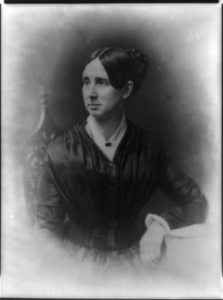
Humanitarian Dorothea Dix exposed the harsh treatment of the mentally ill when her report documenting an eighteen-month survey of facilities throughout the state was presented to the Massachusetts legislature. The report spoke of horrible conditions including filth, cruelty and disease. Dix presented reports in other states, and her careful research and public speaking led to the construction of the New Jersey State Lunatic Asylum in Trenton in 1848, which she dubbed her “firstborn child.” The institution became a model for the humane care of the mentally ill. In 1843, there were 13 mental hospitals in the United States. By 1880, due to Dix’s efforts, and those of her colleagues, there were 123. Her efforts also helped provide the foundation for enhancements to diagnosis and treatment of mental illness. Dix has been inducted into the National Women’s Hall of Fame, a U.S. postage stamp has been issued to honor her, a crater on Venus has been named for her, and a U.S. Navy transport ship during World War II was named for her.

Helen Keller became blind and deaf when she was 19 months old. Unable to effectively communicate with those around her, when she was seven years old, her life changed and her intelligence and capabilities grew when she learned to communicate with sign language through the help of her teacher and later life-long companion, Anne Sullivan (Macy). With Sullivan’s assistance, Keller was able to attend specialized as well as mainstream schools in preparation for attending college. A graduate of Radcliffe College (Phi Beta Kappa), Keller became the first blind and deaf person to earn a Bachelor of Arts degree. As an advocate for individuals with disabilities, Keller served as an inspiration to disabled people the world over. She learned to speak and gave lectures all over the world to encourage support for those with disabilities. Her autobiography was titled The Story of My Life. It was popularized through the play and movie The Miracle Worker. One of the founders of the American Civil Liberties Union, Keller was also an advocate for women’s rights and birth control. She has been inducted into the National Women’s Hall of Fame, been featured with Anne Sullivan Macy on a U.S. postage stamp, and her statue is one of the two representing the state of Alabama in National Statuary Hall in the U.S. Capitol.

Social reformer Edith Abbott began working at Hull House, a settlement house in Chicago for new immigrants, in 1908. An educator, Abbott became the first female dean in the U.S. when she assumed that position in 1924 at the University of Chicago. Determined to reflect humanitarianism in education, Abbott, whose Ph.D. was in economics, believed in establishing programs to reduce or eliminate poverty. Living at Hull House afforded her the opportunity to advocate for women’s and children’s rights, as well as immigration and public assistance. She helped write the 1935 Social Security Act and served at one point on the California Supreme Court. Abbott also transformed the field of social work emphasizing the importance of formal education accompanied by field work. She wrote more than one hundred books and articles about public welfare and social injustices.
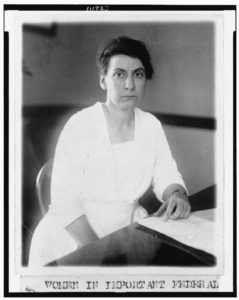
Social worker Grace Abbott improved the rights of immigrants and worked to eradicate child labor. After completing her undergraduate and graduate degrees, she lived at Hull House in Chicago, with her older sister Edith. In Chicago, she was a stalwart supporter of the rights of immigrants, testifying before Congress on this topic. She also worked on women’s rights. Abbott was employed at the Children’s Bureau from 1917 to 1919, working to ensure child labor protection. Later, she was a professor at the School of Social Service Administration at the University of Chicago and is credited with being a primary force behind the passage of the Social Security Act of 1935.

Incest survivor Marilyn Van Derbur Atler has given hope to many, through her recovery from years of abuse. The 1958 Miss America, representing Colorado, Atler, who had spent years as one of the country’s top motivational speakers, revealed in 1991 that she was a survivor. She established the Survivor United Network to help others with emotional help and support to start their recovery process. After her story appeared on the cover of People magazine, she thought her worst nightmare had occurred. Yet, she now considers it among her greatest blessings. Atler has spoken in more than five hundred cities and been in touch with more adult survivors of rape/sexual assault than anyone in the country. Her book Miss America by Day received Writer’s Digest Most Inspirational Book Award. Atler has been inducted into the Colorado Women’s Hall of Fame, and the Colorado Authors’ Hall of Fame. An earlier version of the 2019 documentary, An Incest Survivor’s Odyssey, won the 2018 Los Angeles Film Festival Most Inspiring Woman in Film Award.
These social reform advocates, as well as many other women, almost all of whom we have not heard about nor learned about in school, are profiled in our book, Her Story: A Timeline of the Women Who Changed America. Help us by continuing to tell the stories of the women who came before us, on whose shoulders we all stand. Tell young women especially so they understand that they can dream BIG, and then make their dreams a reality.
The post Social Reform Advocates – Women in History appeared first on Kalon Women Collective.
The Small Thyroid Gland in Your Neck Has Huge Impact on Wellness 30 Nov 2021 12:32 PM (3 years ago)
When discussing health and wellness, the thyroid gland isn’t likely a hot topic between friends and family. This tiny gland is frequently overlooked, yet deserves attention because it plays such a large role in the health of the body, impacting how you look and feel every day.
Small yet mighty, the thyroid is a butterfly-shaped gland located in the base of the neck. It produces critical hormones that serve as chemical messengers that help regulate the brain, heart, kidneys, liver, skin, metabolism, growth and even some functions of the nervous system.
“Ensuring the thyroid gland is healthy and functioning properly is vitally important to the body’s overall well-being,” said Dr. Felice Caldarella, president of the American Association of Clinical Endocrinology. “However, thyroid disease affects as many as 30 million Americans, and more than half remain undiagnosed because symptoms are often similar to the signs of other medical conditions.”
Common thyroid conditions and symptoms:
When your thyroid doesn’t produce enough thyroid hormone, your system slows down. When it produces too much hormone, your system goes into overdrive. Several disorders can arise if the thyroid produces too much hormone (hyperthyroidism) or not enough (hypothyroidism). There are also thyroid diseases with long-term impact, such as Hashimoto’s thyroiditis, Graves’ disease and thyroid eye disease.
Hashimoto’s thyroiditis: Also called Hashimoto’s disease, is the most common thyroid disease in the United States. This inherited condition affects over 10 million Americans and is about seven times more common in women. Hashimoto’s disease involves the production of immune cells and autoantibodies by the body’s immune system that can damage thyroid cells and compromise their ability to make thyroid hormone. Hashimoto’s disease may result in hypothyroidism in some patients, but not all, who have autoantibodies.
Graves’ disease: Graves’ disease is caused by the immune system mistakenly attacking the thyroid, which causes it to become overactive. It’s unknown why this happens. Graves’ disease is the most common cause of hyperthyroidism in the United States and is seven times more likely to affect women.
Thyroid eye disease: Thyroid eye disease is an autoimmune disorder that causes your immune system to mistakenly attack the tissues behind your eyes. Up to half of the people who have Graves’ disease may develop thyroid eye disease over time.
If the thyroid does not function correctly, it can affect every aspect of a person’s life. Some common signs of thyroid disease include:
* Unexplained changes in weight
* Depression, anxiety or feelings of irritability
* Changes in memory or ability to concentrate
* Joint or muscle pain or weakness
* Fatigue or trouble sleeping
* Fast or irregular heartbeat
* Irregular menstrual periods
* Changes in bowel habits, such as constipation
* Feeling unusually hot or cold
How to check your thyroid at home
A simple, quick at-home thyroid neck check can help you detect lumps or enlargements that may be a thyroid condition. All you need is a handheld mirror and glass of water.
Start by holding the mirror in your hand, focusing on the lower front area of your neck, just above the collarbones. Your thyroid gland is located in this area of your neck.
Then, while focusing on this area in the mirror, tip your head back. Take a drink of water and swallow. As you swallow, look at your neck to check for any protrusions in this area when you swallow. Reminder, don’t confuse the Adam’s apple with the thyroid gland. The thyroid gland is located further down on your neck, closer to the collarbone.
If you see any lumps, swelling or protrusions in this area, or have ongoing symptoms of concern, see your health care professional or an endocrinologist. An endocrinologist is a doctor that specializes in hormone-related diseases and conditions, including all those related to the thyroid gland. Remember, although thyroid disease is often a life-long condition, it can be managed.
Visit AACE.com/Thyroid to learn more about thyroid health and find endocrine care near you. You can also visit AACE’s YouTube channel to view a series of thyroid educational videos.
The post The Small Thyroid Gland in Your Neck Has Huge Impact on Wellness appeared first on Kalon Women Collective.
5 Dermatologist Recommendations to Help Care For Your Skin 30 Nov 2021 12:29 PM (3 years ago)
Now that it’s the winter holiday season again, schedules and to-do lists are fuller than ever. Between work, family and getting ready for all the celebrations, it’s easy to forget to take care of yourself. Remember to take a deep breath and carve out some time to focus on self-care, including that all-important part of you — your body’s skin. After a few moments for yourself, you’ll be ready to conquer the holidays (and dry winter skin) like a boss.
“Winter can be rough on the skin,” says board-certified dermatologist Dr. Elyse Love, “and during the busy holiday season, it’s easy to lose track of your body care routine. The good news is that giving your body’s skin the attention it needs is pretty simple.”
Follow these dermatologist-recommended steps to keep your skin hydrated and healthy-looking so that you can take on the holiday season feeling fearless in your skin.
1. Protect yourself from the elements
Even if you’re spending short amounts of time outside, protect your skin from the cold, dry air. In the winter, the air outside can have less moisture than other times of the year. That means, any exposed skin will lose moisture faster than normal. Grab that coat, add a pair of gloves to protect the delicate skin on your hands, and use a scarf to cover your face and neck.
And don’t forget the sunscreen. The American Academy of Dermatology recommends using sunscreen with SPF 30 or higher that provides broad-spectrum protection (against both UVA and UVB rays) for any exposed skin — even on cloudy or overcast days.
“Make sure to re-apply your sunscreen every two hours so you’ll continue to be protected,” says Love.
2. Start moisturizing in the shower
While a long, hot shower may feel fantastic after a chilly day, it can be damaging to your skin. Did you know that hot water actually strips away the skin’s natural oils and disrupts surface lipids and proteins? To combat dryness, decrease shower length and use tepid water instead of hot. Also, use a moisturizing body wash formulated with petrolatum (the number 1 dermatologist-recommended moisturizer) to help hydrate while you’re in the shower.
3. Pamper your skin with nourishing, hydrating ingredients
Hydrated skin is healthy skin, and your skin craves moisture even more in the winter. Olay’s new Body Lotion collection combines niacinamide in a proprietary Vitamin B3 Complex with prestige skincare ingredients — collagen, hyaluronic acid and vitamin C — and hydrates to rejuvenate skin’s surface cells for visibly firmer, more radiant skin over time. Crafted by Olay Skin Experts, these hydrating formulas leave you with skin that is moisturized so it feels softer and looks smoother and healthier.
“Vitamin B3, also known as niacinamide, supports the skin barrier allowing the skin to better hold onto and retain moisture,” adds Love. “Olay’s body lotions feel really great on your skin, and in my experience, they hydrate better than more expensive body lotions.”
Olay’s new Body Lotion collection has three options to choose from to include in your body care routine. Each one will help you keep your skin moisturized over the harsh winter months:
- Firming Hand and Body Lotion with Collagen hydrates your skin with plumping moisture to tighten skin and diminish fine lines, for visible transformation.
- Nourishing Hand and Body Lotion with Hyaluronic Acid visibly replenishes your skin, delivering deep moisture and locking in nourishment for all-day hydration.
- Revitalizing Hand and Body Lotion with Vitamin C brightens dull skin with a boost of rejuvenating hydration for visible radiance.
4. Don’t get dried out
The cold, dry air outside and the overheated air inside can both cause your skin to lose moisture. In addition to moisturizing your skin with lotions like the ones in Olay’s new collection, help your skin stay hydrated by using humidifiers in your home or office so the indoor air doesn’t get too dry. Portable humidifiers are easy to move from room to room. To keep your skin supple and hydrated from within, make sure to drink plenty of water throughout the day.
5. Pucker up
Remember to also care for your lips during the colder months. The skin on your lips is thinner than other parts of the body, so they are even more prone to moisture loss. Keeping a nourishing lip balm handy is a must while balancing cold, dry air outside and indoor heaters.
To learn more, visit Olay.com.
The post 5 Dermatologist Recommendations to Help Care For Your Skin appeared first on Kalon Women Collective.
Unique Ways to Use Fine Wine to Enhance the Holidays 30 Nov 2021 12:28 PM (3 years ago)
No matter if you’re celebrating a holiday or another seasonal occasion, a glass of fine wine is the traditional way to toast all the good things in life. With more than 4.25 billion bottles purchased by Americans just last year — followed closely by 3.6 billion by France and 3 billion by Italy — wine is broadly appealing and provides endless ways to enhance affairs big and small.
“The holiday season is an exceptional time of year marked by heartfelt memories and hope for the future, and wine has been a part of celebrations around the world for thousands of years,” said Jamie Ritchie, head of Sotheby’s global wine business. “Today, wine can be used in many unique ways to craft events and spark joy.”
If you want guidance for incorporating fine wine into your celebratory season, Ritchie recommends using The New Sotheby’s Wine Encyclopedia as your guide. Fully updated and revised, this comprehensive book will become a resource you can access over and over again, not to mention the stunning photography makes it a beautiful addition to any coffee table or book shelf.
“Beautifully illustrated with more than 400 stunning images and 100 brand-new National Geographic maps, this stunning new edition is appreciated by amateurs and enophiles alike,” said Ritchie. “You can learn about more than 14,000 red, white and rose wine recommendations hand-picked from more than 100 wine-growing regions.”
With comprehensive information on a variety of topics, from historical insights and wine making to tasting tips and pairing suggestions, you’ll be able to customize any type of celebration. Ritchie shares some favorite ideas inspired by the book:
Explore pairings
A crimson red, a crisp white or a beautiful rose — explore new varieties and enjoy experiencing new flavors. Whether you want to elevate an elegant multi-course meal or enhance appetizers or even holiday desserts, consider wine parings to complement the foods being served. In general, the more delicate the food flavors, the more delicate the wine should be. Similarly, rich foods with deep flavor pairs well with richer wines.
For example, Champagne is a naturally festive drink for myriad celebrations, pairing nicely with many foods, including seafood, salads, fish, roast, ham and caviar. For rich, meaty main dishes, consider the layered flavors. Lamb pairs well with pinot noir and beef with cabernet sauvignon, for example. Even that amazing creme brulee you’re serving for dessert is made more divine with the right wine, such as an Australian Liqueur Muscat.
Celebratory themes
Selecting a theme can define an event and make a gathering distinctive. Let fine wine help direct the theme so you can create a memorable occasion enjoyed by all. For example, choose a time period and select related food, wine and decorations. Maybe the roaring ’20s or rockin’ ’60s would be a fun way to celebrate with friends and family? If you’d like people to dress the part, you can even request period-inspired attire.
You can also let wine from different countries or regions influence your theme. If you have a French heritage, you could create an elegant event featuring French cuisine, pastries and wine. Or, create a German holiday gathering that gives a nod to the old country, decking your space in traditional decor and toasting using German wine.
Gifts and experiences
Making the holidays special often includes a blend of memorable moments and thoughtful gifts, and wine can support both. When hosting guests, consider creating a staycation feeling by selecting wines from certain locales. If you prefer to get out and about, consider a day trip to a local winery with loved ones. Wineries are often decorated beautifully during the holiday season for a magical mini escape.
Gifting is also made simpler with wine. Personalize to the individual’s tastes or select a variety of bottles to help them build their collection. You could also add in wine accessories such as decanters, carafes, electric aerators or wine preservation tools. Of course, a set of fine wine glasses alongside a bottle is a classic gift. Add in The New Sotheby’s Wine Encyclopedia and you have a gift guaranteed to bring good cheer.
The post Unique Ways to Use Fine Wine to Enhance the Holidays appeared first on Kalon Women Collective.
A Checklist for Good Senior Health and Wellness 30 Nov 2021 12:26 PM (3 years ago)
As you age, your health needs change. Staying on top of senior wellness activities is important, but it can sometimes feel overwhelming. Creating a list of health and wellness to-do’s can help you stay organized, so you look and feel your best.
“Aging well is living well and it all starts with a combination of activities that can improve our mental and physical well-being,” says Dr. Scott Kaiser, chief executive officer of Determined Health, member of the Tivity Health Healthy Aging Coalition and a physician specializing in geriatric medicine. “Although health and wellness may seem to get increasingly complicated with age, it doesn’t have to be a struggle. A few simple — and fun — steps can keep us on the healthy aging path. By taking a proactive approach and prioritizing health, seniors can live their best life.”
Dr. Kaiser shares a simple senior-health checklist to help keep you or a loved one focused on wellness:
Annual physical: Everyone’s health is different. Even if you see specialists for certain conditions, it’s typically recommended to get an annual physical with your primary physician. This is an opportunity for important health screenings that may include tests to evaluate blood pressure, cholesterol, diabetes, bone density and more. It’s also a good time for you to ask any questions and discuss concerns.
Vaccinations: Staying current on recommended vaccinations can help you stay healthy and limit the spread of disease. Cold and flu season has arrived, so now is the time to ask your doctor about getting an influenza vaccine if you haven’t already.
Physical activity: The Medicare Advantage Annual Election Period (AEP) is now through Dec. 7, 2021. All seniors eligible for Medicare benefits through a Medicare Advantage, Medicare Supplement or group retiree plan may be eligible to join SilverSneakers at no additional cost and have access to live and on-demand virtual workouts, including nearly 2,000 activities and classes per week in a variety of lengths and formats. Check eligibility at SilverSneakers.com.
Social connection: Maintaining friendships and connecting with others is an important component to supporting physical, mental and emotional wellness. Set up coffee with friends. Join community groups. Check out social engagement opportunities through programs like SilverSneakers where working out with a group of peers can build friendships and community.
Mental health: Although prioritizing mental health is now more widely accepted, it still can be a challenge for older adults to admit they need help. Talk with your doctor about how you feel and mental health concerns you may have. There are many ways to help with a variety of mental health concerns, including learning mindfulness techniques to reduce anxiety, seeing a therapist and medication.
Mental enrichment: Cognitive decline can occur as you age, so it’s important to be proactive to help support brain health through mental stimulation. Read books. Join a weekly game group. Check out GetSetUp, new for SilverSneakers members in participating health plans. This program provides an online learning platform designed specifically for seniors with a wide range of live video classes — over 2,000 hours per week on more than 1,800 topics — to support mental enrichment.
Nutrition: What you eat fuels your body and mind, so it’s important to pack your pantry and refrigerator with wholesome foods. Stock up on fruits, vegetables, lean meats, whole grains, beans and low-fat dairy. Then explore recipes you can try to experience new flavors and keep mealtime exciting. If you need help or have strict dietary concerns, consider working with a nutritionist for additional guidance.
Doesn’t it feel good to check a few things off your list? For more ideas on how seniors can stay active and connected, visit SilverSneakers.com.
The post A Checklist for Good Senior Health and Wellness appeared first on Kalon Women Collective.
Hearty, Wholesome Winter Meals 30 Nov 2021 12:07 PM (3 years ago)
(Family Features) Seeking comfort from the cold in the form of a wholesome meal is a perfect way to cap off a day with loved ones. During the winter months when brisk temperatures chill you to the bone, warming up with hearty dishes at the family table can bring everyone together.
- Full of seasonal flavors with top-notch taste, Pecan-Crusted Pork Tenderloin offers a delicious main course you don’t have to feel guilty about. This easy yet elegant entree puts a unique spin on a dinnertime staple thanks to a crunchy pecan crust.
- With cheddar and ricotta cheeses, sour cream and cavatappi noodles, this Mac and Cheese with Pecan Breadcrumbs is an extra creamy, creative twist on the kid-friendly classic. Pair this family favorite with the pork tenderloin for an easy weeknight combination that little ones can help with in the kitchen by stirring together the cheesy goodness.
This family dinner is made possible with tasty pecans, which are among the lowest in carbs and highest in fiber compared to other tree nuts, helping you stay fuller longer. As a nutrient-dense powerhouse, they have 3 grams of plant-based protein and 3 grams of fiber per 1-ounce serving with 12 grams of “good” monounsaturated fat and only 2 grams of saturated fat. Essential nutrients like thiamin, zinc, copper and manganese – a mineral that’s essential for metabolism and bone health – mean you can feel good about serving pecan-infused dishes to your loved ones.
Visit americanpecan.com to find more winter weeknight recipe inspiration.

Pecan-Crusted Pork Tenderloin
Total time: 35 minutes
Servings: 6
- 1 pork tenderloin (about 1 1/2 pounds)
- salt, to taste
- pepper, to taste
- 1/2 cup brown sugar, divided
- 2 tablespoons soy sauce, divided
- 2 teaspoons minced garlic
- 1/2 cup pecan pieces
- 1/4 cup pineapple juice
- 2 tablespoons Dijon mustard
- Preheat oven to 400 F and lightly grease large baking dish. Season pork tenderloin with salt and pepper, to taste; set aside.
- In small bowl, stir 1/4 cup brown sugar, 1 tablespoon soy sauce and minced garlic. Spread mixture over pork.
- Press pecan pieces into brown sugar mixture on pork. Bake, uncovered, 20 minutes.
- In medium saucepan over medium-high heat, combine remaining brown sugar, remaining soy sauce, pineapple juice and Dijon mustard. Bring mixture to boil; reduce to simmer 3-5 minutes then remove from heat.
- Slice pork, spoon sauce over top and serve.
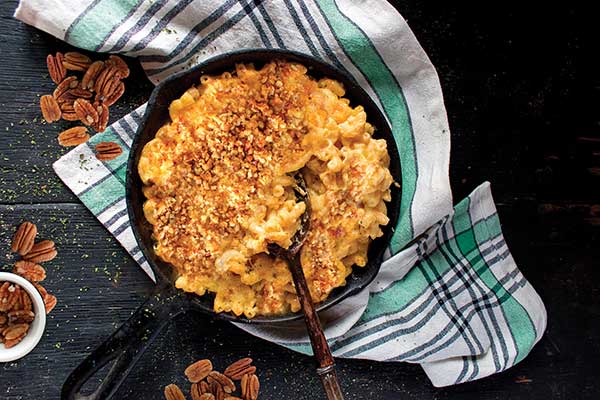
Mac and Cheese with Pecan Breadcrumbs
Total time: 50 minutes
Servings: 6
- 8 ounces cavatappi pasta
- 1 tablespoon butter
- 1 block (8 ounces) cheddar cheese
- 1/2 cup raw pecan pieces
- 15 ounces part-skim ricotta cheese
- 4 tablespoons sour cream
- 1 teaspoon salt
- 1/4 teaspoon ground pepper
- 1 large egg, lightly beaten
- Preheat oven to 375 F.
- In salted boiling water, cook pasta according to package instructions. Drain, reserving 1/2 cup pasta cooking water. Return pasta to pot and stir in butter.
- Using box grater, shred cheddar cheese.
- Using food processor, process 1/4 cup shredded cheese with pecans to coarse breadcrumb consistency.
- Add remaining cheddar cheese, ricotta, sour cream, salt and pepper to warm pasta. Stir until thoroughly combined. Add egg; stir. Add reserved pasta water to loosen mixture; stir until smooth.
- Pour into buttered 9-inch square or round casserole dish and top evenly with pecan topping.
- Bake 30 minutes.
SOURCE:
American Pecan Council
The post Hearty, Wholesome Winter Meals appeared first on Kalon Women Collective.
A Hall of Fame Feast for Homegating Fans 30 Nov 2021 12:01 PM (3 years ago)
(Family Features) Gathering your team to plan for a truly memorable game day at home starts with almost everyone’s favorite part of the festivities: the food. From meaty meals and zesty appetizers to sweet, long-lasting snacks, fuel your crowd with recipes that keep them coming back from kickoff to overtime.
One superstar of the menu at many homegating parties is salsa, whether it’s used as a finishing touch in recipes or as a standalone snack to enjoy with chips, veggies or other pairings. In fact, according to the Game Day Eats Report from Fresh Cravings, 22% of guests would insist on running out to pick up salsa if it wasn’t available for the feast; 18% would even be devastated and consider leaving.
Chef Anthony Serrano recommends these all-American recipes he makes for his family on game day. Pulled Beef and Slaw Sliders are perfect for piling high with delicious toppings before hitting the couch just in time for kickoff. Snacking throughout the action is a preferred approach for many fans, making Cast-Iron Smoked Queso Dip and Hummus Deviled Eggs go-to options for armchair quarterbacks.
These crowd-pleasers make game day worth celebrating, especially if you use a salsa with high-quality ingredients like vine-ripened tomatoes, crisp vegetables, zesty peppers and spices found in Fresh Cravings Salsas. Their flavor-packed, vibrant recipe offers a homemade-tasting alternative to the softer, duller blends of jarred salsa.
To find more championship-level game day recipe inspiration, visit FreshCravings.com.
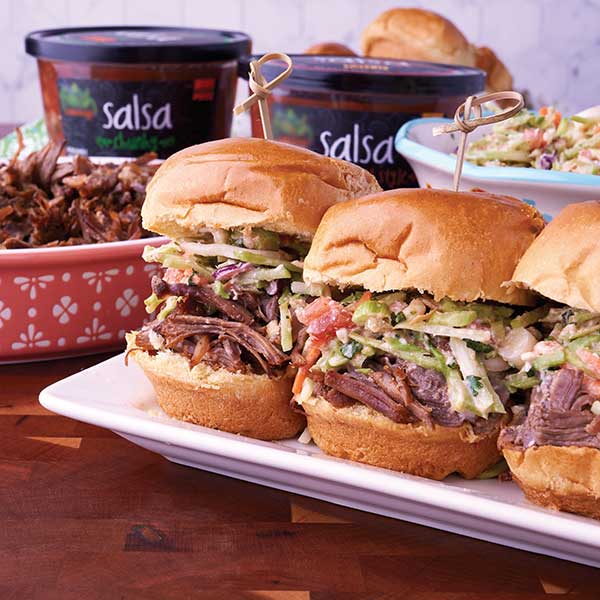
Pulled Beef and Slaw Sliders
Recipe courtesy of chef Anthony Serrano
Pulled Beef:
- 2 pieces (about 3 pounds each) beef chuck roast
- 2 tablespoons taco seasoning or barbecue rub
- 1 cup beef bone broth
- 16 ounces Fresh Cravings Chunky Mild Salsa
Salsa and Queso Slaw:
- 16 ounces Fresh Cravings Chunky Mild Salsa
- 16 ounces broccoli slaw blend
- 1/4 cup green onions, sliced
- 1 teaspoon salt
- 1 cup crumbled queso fresco
- 1 tablespoon Dijon mustard
- 1/2 cup mayo
- 2 tablespoons apple cider vinegar
- 2 tablespoons cilantro (optional)
- slider buns
- Fresh Cravings Salsa
- barbecue sauce
- pickles
- jalapenos
- sliced cheese
- roasted peppers
- onions
- To make pulled beef: Season both sides of beef with taco seasoning. Wrap with plastic wrap and place in fridge 2-12 hours before cooking.
- Place meat, beef bone broth and salsa in pressure cooker; seal according to pressure cooker directions. Cook on high 60 minutes. Once pressure cooker is safe to open according to instructions, open and let meat rest in liquid 15 minutes.
- Remove meat from liquid and place in large bowl. Carefully shred meat. Pour liquid, up to half, over meat while shredding to keep it juicy.
- To make salsa and queso slaw: In large bowl, mix salsa, slaw blend, green onions, salt, queso fresco, Dijon mustard, mayo, apple cider vinegar and cilantro, if desired. Cover with plastic wrap and refrigerate until needed.
- To assemble sliders, place pulled beef and salsa and queso slaw on buns. Top with salsa, barbecue sauce, pickles, jalapenos, sliced cheese, roasted peppers and onions.

Cast-Iron Smoked Queso Dip
Recipe courtesy of chef Anthony Serrano
- 2 cups cheddar cheese
- 1 cup Monterey Jack cheese
- 1 teaspoon almond flour
- 1 cup heavy cream
- 1 cup Fresh Cravings Restaurant Style Salsa
- 1 teaspoon paprika
- 1 teaspoon sea salt
- 1/4 cup cooked chorizo
- 1 teaspoon liquid smoke
- cilantro, for garnish
- diced bell pepper, for garnish
- In cast-iron pan, mix cheddar cheese, Monterey Jack cheese and almond flour. Pour in heavy cream and salsa; bring to gentle simmer. Whisk while simmering 5-7 minutes, or until queso dip begins to thicken. Add paprika, salt, chorizo and liquid smoke; adjust seasoning as necessary.
- Garnish with cilantro and bell pepper.
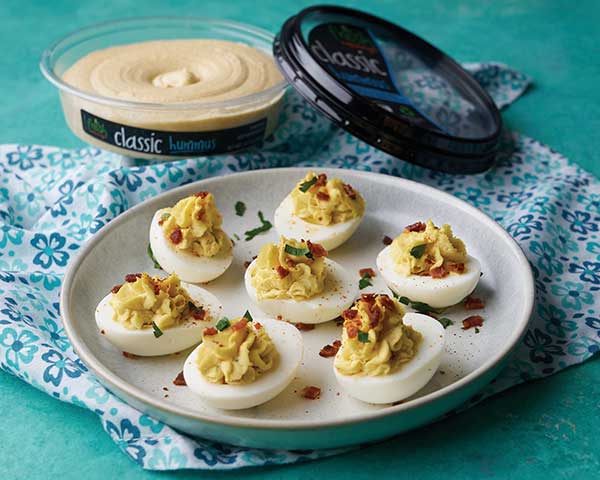
Hummus Deviled Eggs
Recipe courtesy of chef Anthony Serrano
- 6 hard-boiled eggs, peeled
- 1/4 cup Fresh Cravings Classic Hummus
- 1/4 cup smoked cheddar cheese
- 2 tablespoons bacon, cooked and crumbled
- 1 teaspoon yellow mustard
- 1 teaspoon salt
- smoked Spanish paprika, for garnish
- parsley, for garnish
- Cut hard-boiled eggs in half lengthwise. Remove yolks and place in bowl. Using fork, mash yolks into fine crumble.
- Add hummus, cheese, bacon, mustard and salt; mix well.
- Evenly disperse teaspoons of yolk mixture into egg whites. Sprinkle with any remaining bacon, paprika and parsley.
SOURCE:
Fresh Cravings
The post A Hall of Fame Feast for Homegating Fans appeared first on Kalon Women Collective.
Steps to Reclaim Your Health 30 Nov 2021 11:57 AM (3 years ago)
Take charge of risk factors affecting your heart health
(Family Features) Cholesterol – a waxy substance created by the liver or consumed from meat, poultry and dairy products – isn’t inherently “bad” for you. In fact, your body needs it to build cells and make vitamins and other hormones. However, too much “bad” LDL cholesterol, or not enough “good” HDL cholesterol, can pose problems.
High cholesterol is one of the major controllable risk factors for heart disease and stroke. Because it typically has no symptoms, you may not know you have high cholesterol until it’s already causing problems.
Knowing key health numbers like your blood sugar, blood pressure and cholesterol, and working closely with your doctor to manage them, are keys to preventing heart disease and stroke.
Those who have already experienced a heart attack or stroke or have family history of cardiovascular disease, chronic inflammatory disease or kidney disease may need to have their cholesterol and other risk factors checked more often and may need medication to manage their conditions to prevent another event. According to the American Heart Association, as many as 1 in 4 survivors will have another heart attack or stroke.
Along with taking your medication as prescribed, some lifestyle habits can help manage your risk and help you live a longer, healthier life like watching what you eat, getting more exercise and managing stress.
A healthy eating plan is a well-rounded diet with plenty of fruits and vegetables (at least 4-5 servings each day). In fact, researchers at the University of Columbia found each daily serving of fruits or vegetables was associated with a 4% lower risk of coronary heart disease and a 5% lower risk of stroke.
Other smart choices for your menu include nuts and seeds, whole grains, lean proteins and fish. Limit sweets, sugar-sweetened beverages, saturated fat, trans fat, sodium and fatty or processed meats.
Get Moving
You likely know exercise is good for you, but an Oxford University study revealed simply swapping 30 minutes of sitting with low-intensity physical activity can reduce your risk of death by 17%. Mortality aside, in its Physical Activity Guidelines for Americans, the U.S. Department of Health and Human Services noted physical activity offers numerous benefits to improve health, including a lower risk of diseases, stronger bones and muscles, improved mental health and cognitive function and lower risk of depression.
The greatest impacts come from getting the recommended amount of activity: at least 150 minutes of moderate activity, 75 minutes of vigorous activity or a combination of those activities per week. Be sure to discuss with your doctor which activities may be best for you.
If you’re having trouble getting motivated, small steps like walking your dog can lead to big changes over time. A scientific statement from the American Heart Association on pets and heart-health showed dog parents are more likely to reach their fitness goals than those without canine companions.
Reduce Stress
Constant or chronic stress can have real consequences on both emotional and physical health. In fact, research shows chronic stressors like long work hours, financial stress and work-life conflict may be as risky for health as secondhand smoke, according to a report by the Behavior Science and Policy Association.
Aside from the direct toll on your body – including elevated risk for heart disease and stroke from high blood pressure, depression or anxiety – stress can lead to unhealthy habits like overeating, physical inactivity and smoking.
Exercise is an effective way to keep your body healthy and release stress. You might also consider incorporating meditation and mindfulness practices into your day to allow yourself a few minutes to distance yourself from daily stress.
Research compiled by the American Heart Association suggests meditation can reduce blood pressure, improve sleep, support the immune system and increase your ability to process information.
Another powerful tool to fight depression, anxiety and poor sleep, according to researchers at the University of California-San Diego, is practicing gratitude or thankfulness. Start by simply writing down three things you’re grateful for each day.
Learn more about managing your cholesterol and habits to protect your heart health at heart.org/cholesterol.
How a Major Health Event Can Reveal Unknown Risks
Before his stroke, Lee Stroy, a father of five, considered himself to be a healthy person.
“My gauge of being ‘healthy’ was my ability to wake up in the morning, get to work, take care of my family and live another day to do it again,” Stroy said. “That is, until I couldn’t.”
In December 2014, Stroy woke up disoriented and scared after suffering a stroke at just 38 years old. He quickly discovered he had undiagnosed hypertension, diabetes and high cholesterol.
“It surprised me to learn there are often no visible symptoms for high cholesterol until a heart or stroke event,” Stroy said. “Unfortunately, I was not diligent about my annual check-ups, so my health setbacks provided me with a huge wake-up call.”
Stroy decided to take control of his health and this marked the beginning of a major lifestyle transformation.
The first change was quitting smoking. Next, he began incorporating exercise into his daily routine, initially with simple exercises from occupational therapy. Eventually he worked up to walking several miles a day. Stroy also gradually made changes to his diet and went from being a meat eater to vegan. He also attends regular doctor’s visits to keep tabs on his progress.
“While it was no easy feat to make such drastic lifestyle changes, they are now second nature,” Stroy said. “Don’t put off or be afraid to go to the doctor. You could catch something early and be able to make changes that save your life.”
Photo courtesy of Getty Images
SOURCE:
American Heart Association
The post Steps to Reclaim Your Health appeared first on Kalon Women Collective.
Special Centerpieces for Holiday Celebrations 10 Nov 2021 11:29 AM (3 years ago)
(Family Features) Few things bring family and friends together quite like the holidays, and serving up an elegant, seasonal meal centered around a mouthwatering main dish is a recipe for creating lasting memories with the ones you love.
Forging a fabulous holiday experience for the special people in your life starts with choosing a flavorful, tender cut of meat to serve as the centerpiece of the meal. Hand-cut by expert butchers, options like Spiral-Sliced Ham, Boneless Heart of Prime Rib Roast and Butcher’s Cut Filet Mignons from Omaha Steaks can serve as the focal point of a memorable holiday dinner. Flash frozen to capture freshness and flavor, you can select a standout cut of meat from the comfort of your home and have it delivered directly to your door in time to put together a tender, juicy main course.
Find more holiday recipe inspiration at OmahaSteaks.com/blog/recipes.

Rum and Cola Holiday Ham
Recipe courtesy of Omaha Steaks Executive Chef David Rose
Prep time: 30 minutes
Cook time: 80 minutes
Servings: 10-12
Ham:
- 1 Omaha Steaks Spiral-Sliced Ham (8 pounds)
Glaze:
- 1 cup cherry fruit spread
- 3/4 cup dark spiced rum
- 3/4 cup cola
- 2 teaspoons Worcestershire sauce
- 1 tablespoon Dijon mustard
- 1/4 teaspoon kosher salt
- To make ham: Thaw frozen ham in refrigerator 24-48 hours.
- Remove from refrigerator and let ham come to room temperature, about 30-45 minutes.
- Preheat oven to 325 F. Remove ham from foil and film. Return ham to foil wrapping and place in oven-safe roasting pan. Roll foil down leaving 2 inches of foil around bottom of ham.
- Place roasting pan with ham in oven on lower rack and heat uncovered 60-75 minutes, until ham starts to brown. While ham cooks, make glaze.
- To make glaze: In medium saucepot, whisk fruit spread, rum, cola, Worcestershire sauce, Dijon mustard and salt until well incorporated. Bring to boil then reduce heat to medium. Simmer over medium heat 10 minutes then remove from heat. Cool to room temperature.
- During last 15 minutes of cooking, glaze ham every 5 minutes.

Dijon-Herb Prime Rib Roast with Garlic Butter Mushrooms
Recipe courtesy of Omaha Steaks Executive Chef David Rose
Prep time: 15 minutes
Cook time: 3 hours
Servings: 4-6
Dijon-Herb Rub:
- 1/4 cup minced fresh Italian parsley
- 1/4 cup minced fresh oregano
- 1/4 cup minced fresh thyme leaves
- 1/4 cup minced fresh rosemary leaves
- 3 fresh garlic cloves, minced
- 1 tablespoon Dijon mustard
- 1/2 cup canola oil
- 1 teaspoon kosher salt
- 1/2 teaspoon ground black pepper
- 1/4 teaspoon smoked paprika
Prime Rib Roast:
- 1 Omaha Steaks Boneless Heart of Prime Rib Roast (4 pounds), thawed
- kosher salt, to taste
- ground black pepper, to taste
- 1/4 cup canola oil
Garlic Butter Mushrooms:
- 6 tablespoons olive oil
- 1/2 cup small diced yellow onion
- 4 fresh garlic cloves, minced
- 1 pound button mushrooms, cleaned and quartered
- 1 pinch kosher salt, plus additional, to taste, divided
- 1 pinch ground black pepper, plus additional, to taste, divided
- 1/2 cup chicken stock
- 2 tablespoons unsalted butter
- 1/4 cup finely chopped Italian parsley
- To make rub: In medium bowl, whisk parsley, oregano, thyme, rosemary, garlic, Dijon mustard, oil, salt, black pepper and paprika until well incorporated.
- To make prime rib roast: Pat prime rib roast dry on all sides with paper towels. Season generously with salt and pepper, to taste. Allow roast to come to room temperature about 30 minutes.
- Rub Dijon herb rub all over prime rib roast and allow to stand 10 minutes.
- Preheat oven to 250 F.
- In large cast-iron pan, warm oil over medium-high heat.
- Sear roast on all sides until golden brown, 2-3 minutes per side.
- Place seared prime rib on wire rack-lined sheet pan and place in oven.
- Cook until internal temperature is 10 F below desired cooking doneness.
- Rest 15-20 minutes before slicing.
- To make mushrooms: In large pan, warm olive oil over medium-high heat. Add diced onions and saute about 1 minute.
- Add minced garlic and lightly saute until fragrant, about 20 seconds.
- Add mushrooms and pinch of salt and ground pepper to pan. Saute 3-4 minutes, or until mushrooms are tender.
- Add chicken stock and reduce to one-third in volume, 3-4 minutes.
- Add butter and parsley to pan and saute until butter is melted and incorporated. Immediately remove from heat and season, to taste, with salt and pepper.
- Serve mushrooms with prime rib roast.

Suya-Dusted Filet Mignon with “Red Rice” Risotto
Recipe courtesy of Omaha Steaks Executive Chef David Rose
Prep time: 15 minutes
Cook time: 1 hour
Servings: 4
Suya Dust:
- 2 cups roasted cashews
- 1 tablespoon chicken bouillon
- 1 tablespoon, plus 1 teaspoon, smoked paprika
- 1/4 teaspoon cayenne pepper
- 1 teaspoon ground black pepper
- 2 teaspoons. ground ginger
- 2 teaspoons garlic powder
- 2 teaspoons onion powder
“Red Rice” Risotto:
- 3 tablespoons canola oil
- 1/2 cup diced yellow onion
- 3 fresh garlic cloves, smashed
- 1/2 cup diced red bell pepper
- 1 tablespoon tomato paste
- 1 large beefsteak tomato (about 1/2 pound), chopped
- 1 tablespoon Worcestershire sauce
- 1/4 teaspoon smoked paprika
- 1 teaspoon kosher salt, plus additional, to taste, divided (optional)
- 1/2 teaspoon ground black pepper, plus additional, to taste, divided (optional)
- 2 tablespoons olive oil
- 2 tablespoons unsalted butter
- 1 1/2 cups Arborio rice
- 4 cups warmed chicken stock, divided
- 1/2 cup finely chopped Italian parsley
- 1 cup freshly shredded Parmesan cheese
Filet Mignon:
- 4 Omaha Steaks Butcher’s Cut Filet Mignons (6 ounces each)
- kosher salt
- ground black pepper
- 4 tablespoons canola oil
- 2 tablespoons unsalted butter
- 1 clove garlic
- 1 thyme sprig
- To make suya dust: In food processor, blend cashews, chicken bouillon, paprika, cayenne pepper, bell pepper, black pepper, ginger, garlic powder and onion powder into fine powder.
- To make “red rice” risotto: In medium saucepan, warm canola oil over medium-high heat. Add onions, garlic and red bell pepper, sauteing until lightly caramelized, about 1 minute.
- Add tomato paste to pan and saute until fragrant, about 1 minute. Add chopped tomato, Worcestershire sauce, paprika, 1 teaspoon kosher salt and 1/2 teaspoon ground black pepper; continue sauteing until tomato starts to break down and soften, 3-4 minutes. Reduce heat to simmer and cook 3-4 minutes.
- Remove from heat and finely blend in food processor. Set aside.
- In separate medium saucepan, warm olive oil and butter over medium-high heat.
- Add Arborio rice and stir until slightly nutty and translucent, about 1 minute.
- Add pureed tomato-pepper mixture and 1 cup chicken stock; bring to boil then reduce heat to medium.
- Add 1 cup stock each time Arborio rice absorbs almost all broth. Continuously stir risotto each time stock is added to rice. Keep adding stock until risotto is al dente and still viscous then stir in parsley and Parmesan cheese. Season, to taste, with salt and pepper, if desired.
- To make filet mignon: Pat steaks dry with paper towels and liberally season with salt and ground black pepper on both sides.
- In large cast-iron skillet, warm canola oil over medium-high heat.
- Place filets in skillet and sear 3 minutes.
- Flip steaks and add butter, garlic clove and thyme. Baste steaks with butter and allow filets to finish cooking, 3-4 minutes for medium-rare doneness.
- Rest filets 7-8 minutes. Serve over “red rice” risotto and sprinkle suya dust over filets.
SOURCE:
Omaha Steaks
The post Special Centerpieces for Holiday Celebrations appeared first on Kalon Women Collective.
Women Anthropologists in History 10 Nov 2021 11:22 AM (3 years ago)
Anthropologists study human relationships, the norms and values of societies, languages, human economic behavior, the biological development of humans, and the impacts of disease on humans and society over time. Just as in most fields of endeavor, women have made significant contributions to the field of anthropology as well. Let’s discover some groundbreaking female anthropologists.

Ruth Fulton Benedict was America’s first woman anthropologist and for many years, the country’s leading specialist in the field. She helped to popularize anthropology for wider audiences. Moreover, Benedict’s work helped people to understand that women had views that expanded the world of science. In a field dominated by men until the early 20th century, Benedict left an indelible impact on her successors. She left behind a body of work that is still widely read and studied by anthropologists as well as the general public.
Benedict’s seminal work, Patterns of Culture, was published in 1934. It reflected her findings that each culture fosters one dominant type of personality. She identified these differences in Native American cultures and noted that societies sometimes revere persons who are considered outcasts in other cultures. Controversial in the anthropological community and in society as a whole, the book was translated into 14 languages; it was still used as the standard introduction to anthropology 25 years after it was published. In addition, her research led her to combat racism in the 1940s. Her book, Race: Science and Politics (1940) and her 1943 pamphlet “The Races of Mankind” both spoke out heavily against racism. Importantly, Benedict served as a mentor to the renowned anthropologist Margaret Mead. Benedict has been inducted into the National Women’s Hall of Fame.
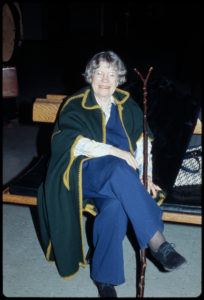
Cultural anthropologist Margaret Mead’s seminal 1928 work, Coming of Age in Samoa, made her famous at age 27. Her famous quotation, “Never doubt that a small group of thoughtful, committed citizens can change the world. Indeed, it is the only thing that ever has,” serves as the opener for the Introduction to our book Her Story: A Timeline of the Women Who Changed America. She began her field work on tribal indigenous societies in the South Pacific in 1923. Her research focused on child rearing, personality and culture.
Elected a Fellow of the American Academy of Arts and Sciences, Mead was affiliated for many years with the American Museum of Natural History and founded the department of anthropology at Fordham University’s Lincoln Center. Credited with having co-founded the field of visual anthropology, Mead was inducted into the National Women’s Hall of Fame and is featured on a U.S. postage stamp.
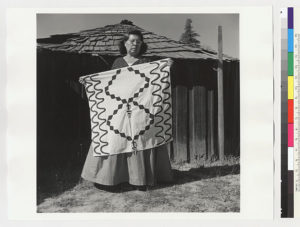
Essie Parrish guided her people, the Kashaya Pomo, a California Native American tribe, from 1941-1979. At the age of six, Parrish was acknowledged as a “dreamer” or “visionary” of her people. She had the ability to both prophesize and interpret dreams. Parris was committed to developing a record of the Pomo people. In 1956, she began collaborating with a social scientist at the University of California, Berkeley to develop a written language – including an alphabet – and a dictionary of the Kashaya Pomo.
Parrish also worked with social scientists to make more than twenty anthropological films documenting Pomo culture and ceremonies including a film on acorn processing which she narrated, Chish Kahle – The Beautiful Tree., It won the best documentary award at the 1969 Cannes Film Festival. She was dedicated to educating tribal youth on their language, culture, customs, and laws. A very skilled basket weaver, Parrish’s baskets are at the Smithsonian Institution and the Phoebe A. Hearst Museum of Anthropology at Berkeley, California.
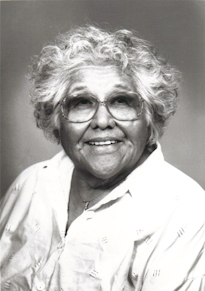
One of the last fluent speakers of her tribe’s language, Katherine Siva Saubel of the Cahuilla tribe in California, worked to preserve her people’s language and customs. She memorized sacred songs traditionally performed by the men. She also learned about native plants from her mother, a traditional healer, and she recorded the information in a journal. She worked with prominent linguists and anthropologists, co-produced a Cahuilla dictionary and a grammar book, authored a book on plant usage, and wrote her memoir.
The dominant interpreter of her tribe’s culture and history, Saubel also served as tribal chair on the Los Coyotes Reservation in San Diego County. She served as President of the Malki Museum from 1965 until her death. This museum, which she co-founded, has as its mission promoting scholarship and cultural awareness and preserving the culture of Southern California Indian cultures. Named “Elder of the Year” by the California State Indian Museum, Saubel received an honorary doctorate from La Sierra University in California. In 1994, she was the first recipient of the Smithsonian Institution National Museum of the American Indian’s Art and Culture Award. Saubel was inducted into the National Women’s Hall of Fame.
Dancer, choreographer and anthropologist
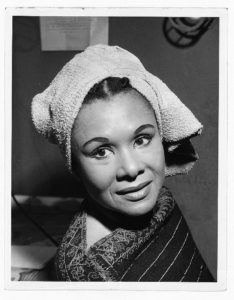
earned her bachelors, masters and Ph.D. degrees in anthropology at the University of Chicago. One of the first African American women to attend this institution, Dunham intended to become a teacher. Dance was her calling though and shortly after her graduation, she formed the Negro Dance Group. She studied dance in the Caribbean, and she wrote articles about her trips that she sold to magazines. In the 1930s she was one of the founders of the anthropological dance movement; she used folk and ethnic composition in her choreography. Dunham started a new academic discipline in Caribbean and Brazilian dance anthropology. She also created the Dunham Technique which changed the world of dance. The “Matriarch of Black Dance” developed pedagogy for teaching dance around the world.
After appearing in a number of films, Dunham choreographed Aida for the Metropolitan Opera, becoming the first African American to choreograph for the Met. Dunham wrote books, recorded songs, and worked actively for racial equality, especially awareness of the issues of poverty and racism. Her many honors include the Presidential Medal of Arts, the Kennedy Center Honors, and an honorary degree in fine arts from Harvard University.
These anthropologists, as well as many other women, almost all of whom we have not heard about nor learned about in school, are profiled in our book, Her Story: A Timeline of the Women Who Changed America. Help us by continuing to tell the stories of the women who came before us, on whose shoulders we all stand. Tell young women especially so they understand that they can dream BIG, and then make their dreams a reality.
The post Women Anthropologists in History appeared first on Kalon Women Collective.
Freshen Up Your Indoor Spaces This Winter 10 Nov 2021 11:08 AM (3 years ago)
(Family Features) When cold winter days keep you inside, you may find yourself bored with your surroundings. Waiting for the sun to make its next appearance can provide the perfect opportunity to give your indoor spaces a fresh and appealing mini makeover.

Even if your budget is tight, you can still make small changes to transform a room. Consider these ideas:
- Bring stylish flair to your space with a new color scheme. Rather than replacing all the furniture, which can be costly, focus on smaller accessory pieces such as pillows and decorative items. Create variety by using multiple hues of the same color or mixing two or more complementary colors.
- Introduce new accent furniture. Smaller and less cost-prohibitive than centerpieces like a couch, for example, accent pieces such as end tables or a coffee table can provide subtle changes to the look of a room. You could also opt to refinish a piece of furniture you have on-hand to create a look that’s all your own.
- Morph your room by simply rearranging what you already own. Adjusting the orientation of your furniture and decor can let you see your favorite room from a whole new perspective.
- Whether it’s a flea market find, such as an old window frame that you paint and add a display shelf to the base, or a series of photos from your favorite vacation destination, adding some DIY art can not only update your room, but make it more personal, too.
A new look for your favorite room can go a long way toward chasing away those winter blahs, so find ways to update your space for a cozy retreat that you can enjoy despite the cold weather raging outdoors. Find more ideas at eLivingtoday.com.
Photo courtesy of Pexels
SOURCE:
Family Features
The post Freshen Up Your Indoor Spaces This Winter appeared first on Kalon Women Collective.
3 Things to Know About Stroke 10 Nov 2021 11:03 AM (3 years ago)
(Family Features) Strokes, the second-leading cause of death globally, affect millions of people each year. A stroke can cause lasting disability and unimaginable pain for those impacted and their loved ones.
This year, 14.5 million people globally will have a stroke and 5.5 million people will die as a result, according to the World Stroke Organization. This World Stroke Day, learn how to reduce your risk for stroke, how to identify the signs and symptoms and why timely response and treatment are critical.
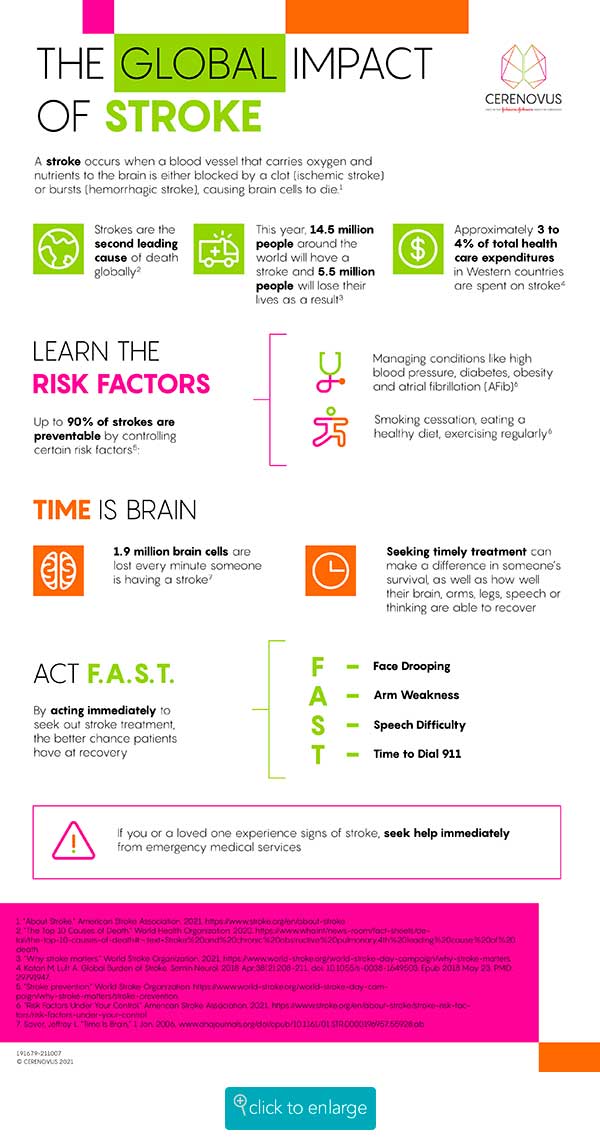 1. Talk to your doctor about ways to prevent stroke
1. Talk to your doctor about ways to prevent stroke
A stroke occurs when a blood vessel that carries oxygen and nutrients to the brain is either blocked by a clot (ischemic stroke) or bursts (hemorrhagic stroke). When this happens, part of the brain cannot get the blood and oxygen it needs, causing brain cells to die.
While strokes can be devastating and deadly, up to 90% are preventable and many risk factors can be controlled before they cause a stroke. By managing conditions like high blood pressure, diabetes, obesity and atrial fibrillation (AFib); ceasing smoking; eating a healthy diet; getting regular exercise; and taking all prescribed medications, you can decrease your risk. Treating AFib, an irregular heart rhythm disorder, is particularly important as it is associated with a five-fold increased risk of ischemic stroke.
2. Recognize signs and symptoms of stroke
When a stroke occurs, acting F.A.S.T. can help you get timely treatment needed to survive. If you recognize the signs and symptoms of a stroke – face weakness, arm weakness and speech slurring – it’s time to call for help.
While F.A.S.T. is a commonly used acronym to identify the signs of stroke, it is important to understand the relationship between a stroke and the time it takes to receive care. When brain cells die, brain function is lost. In fact, 1.9 million brain cells are lost every minute someone is having a stroke. Quickly identifying signs of a stroke and seeking immediate treatment can save your life or reduce long-term disability. Reducing the amount of time between the onset of stroke and treatment can make a difference in how well your brain, arms, legs, speech and thinking are able to recover.
“Stroke can be a deadly and devastating neurological event,” said Mark Dickinson, worldwide president, CERENOVUS, a company committed to changing the trajectory of stroke and offering a broad portfolio of devices used in the endovascular treatment of stroke. “Yet when care and treatment is sought in a timely way, the chances of survival and recovery can increase significantly. This World Stroke Day – and every day – we must continue to raise awareness of the signs and symptoms of stroke and the need to seek timely medical care. With stroke, every second and every minute counts.”
3. Know your treatment options for stroke
Seeking treatment for stroke immediately means you have more treatment options available to you, such as being eligible to receive tissue plasminogen activator or mechanical thrombectomy (MT) for ischemic stroke, the most common type of stroke. MT, a minimally invasive blood clot retrieval procedure, helps improve the chances you’ll survive an ischemic stroke and make a full recovery. Treatment options for hemorrhagic stroke include surgery to remove, repair or clip a ruptured aneurysm.
If you or a loved one experience signs of stroke, seek help immediately from emergency medical services. To learn more about stroke, or find a doctor near you, visit bit.ly/3BpCWQW.
Photo courtesy of Adobe Stock
SOURCE:
CERENOVUS
The post 3 Things to Know About Stroke appeared first on Kalon Women Collective.
Healthy Holiday Baking Swaps 10 Nov 2021 8:59 AM (3 years ago)
(Family Features) Many holiday hosts tend to pull out their most treasured family recipes when entertaining loved ones. After all, taste is the most important aspect of most holiday spreads, particularly when it comes to favorite baked goods and desserts.
Put a better-for-you twist on your baked classics this holiday season by swapping out less healthy cooking fats like butter, canola oil and vegetable oil with an option like Pompeian Light Taste Olive Oil. Ideal for baking desserts like this Lemon Cake or Sugar Cookies with Orange Glaze, as well as frying, this light tasting olive oil provides a healthier take on your holiday recipes without impacting the taste you and your guests love. This olive oil is high-quality and authentic, backed by a brand that has been perfecting the craft of olive oil since 1906.
Find more better-for-you holiday recipe inspiration at Pompeian.com/recipes.

Lemon Cake
Prep time: 10 minutes
Cook time: 1 hour, 15 minutes
Servings: 30
- 1 1/3 cups Pompeian Light Taste Olive Oil, plus additional for oiling pan
- 2 cups all-purpose flour
- 1 cup sugar
- 3/4 cup brown sugar
- 1 1/2 teaspoons kosher salt
- 1/2 teaspoon baking soda
- 1/2 teaspoon baking powder
- 1 1/4 cups whole milk
- 3 large eggs
- 1 1/2 tablespoons grated lemon zest, plus additional for garnish (optional)
- 1/4 cup fresh lemon juice
- 1/4 cup limoncello
- powdered sugar, for garnish (optional)
- dried sweetened lemon rings, for garnish (optional)
- Heat oven to 350 F. Oil 8-by-12-by-2-inch pan with olive oil and line bottom with parchment paper.
- In bowl, whisk flour, sugars, salt, baking soda and powder. In another bowl, whisk 1 1/3 cups olive oil, milk, eggs, lemon zest, juice and limoncello. Add dry ingredients; whisk until just combined.
- Pour batter into prepared pan and bake 60-75 minutes until top is golden and cake tester comes out clean. Transfer cake to rack and let cool 30 minutes.
- Run knife around edge of pan, invert cake onto rack and let cool completely, 2 hours.
- Sprinkle with powdered sugar, lemon zest and lemon rings right before serving, if desired.

Sugar Cookies with Orange Glaze
Prep time: 15 minutes
Cook time: 10 minutes
Servings: 36
Cookies:
- 2 cups all-purpose flour
- 1 cup cake sugar
- 1 teaspoon baking powder
- 1/2 teaspoon baking soda
- 1/2 teaspoon salt
- 1/2 cup Pompeian Light Taste Olive Oil
- 2 teaspoons vanilla extract
- 1/2 teaspoon almond extract
- 2-3 tablespoons unsweetened milk of choice
Glaze:
- 1 cup powdered sugar, plus additional if needed, for thickening
- 2-3 tablespoons fresh orange juice
- 1/8 teaspoon salt
- orange slices or blood orange slices, for topping
- sugar, for topping
- To make cookies: Preheat oven to 350 F. Lightly grease baking sheet.
- In large bowl, stir flour, sugar, baking powder, baking soda and salt to combine.
- Add olive oil, vanilla extract and almond extract. Stir until crumbly dough forms.
- Add 2 tablespoons milk; stir until soft dough ball forms, adding more milk if needed.
- Place dough ball on lightly floured surface. Roll out dough until 1/4-inch thick. Using jar lid or other circular object, cut out cookies; place on baking sheet. Repeat until all dough is used.
- Bake 8-10 minutes; do not overbake. Set aside to cool.
- To make glaze: In small bowl, stir powdered sugar, 2 tablespoons orange juice and salt until thick glaze forms. Add more juice, if needed, to thin out glaze or add more powdered sugar to thicken.
- When cookies are cooled, glaze them. Top with orange slices or blood orange slices and pinch of sugar.
SOURCE:
Pompeian Oils & Vinegars
The post Healthy Holiday Baking Swaps appeared first on Kalon Women Collective.
Keeping People and Pets Together 10 Nov 2021 8:56 AM (3 years ago)
(Family Features) The bond between people and their pets has never been stronger. Eighty-one percent of pet parents said the increased time together during the pandemic made their four-legged friends feel even more like family, according to the Mars Petcare “Keeping People and Pets Together” Report, which examined the relationships pet parents developed with their pets in 2021 as well as their hopes and concerns for the year ahead. It also highlights findings from the first-ever State of Pet Homelessness Index, which measured the scale of pet homelessness to help find ways to solve the problem. Learn more at BetterCitiesforPets.com.

SOURCE:
Mars Petcare
The post Keeping People and Pets Together appeared first on Kalon Women Collective.
A Sweet Sauce to Savor 10 Nov 2021 8:52 AM (3 years ago)
(Culinary.net) There are few things better than festive holiday celebrations. Everyone is gathered around the table, ready to eat and enjoy the company. The atmosphere is joyful, the decorations are beautiful and the food is absolute perfection.
From warm casseroles to hearty proteins, most spreads are made of an array of colors with mouthwatering sides and desserts. However, there are some dishes the holidays just can’t happen without. One is a classic, traditional Sweet Cranberry Sauce. It’s popping with color and texture. Plus, it makes everything it tops taste just a little bit better.
This sauce is perfect for nearly any holiday celebration but is also a sweet treat that can be served over vanilla ice cream for dessert. It’s fruity with a hint of citrus and flavorful with a dash of ground cinnamon and a bit of ginger.
This recipe is perfect for Thanksgiving or Friendsgiving and works well into the holiday season for all the other celebrations that likely dot your calendar. It’s a timeless dish but with a fresh and tangy twist that’s perfect for both gatherings with many guests or simple nights at home with those leftovers you just can’t resist.
Find more recipes perfect for celebrating the holidays at Culinary.net.
If you made this recipe at home, use #MyCulinaryConnection on your favorite social network to share your work.
Watch video to see how to make this recipe!

Sweet Cranberry Sauce
Prep time: 2 minutes
Cook time: 10 minutes
Servings: 8
- 12 ounces cranberries
- 1 cup granulated sugar
- 1/4 cup orange juice
- 1/2 cup water
- 1 1/2 tablespoons ginger paste
- 1/8 tablespoon salt
- 1/4 teaspoon ground cinnamon
- 2 tablespoons orange zest
- vanilla ice cream (optional)
- In large skillet over medium heat, combine cranberries, sugar, orange juice, water, ginger paste, salt, ground cinnamon and orange zest.
- Bring to simmer. Stir until thickened to desired consistency, 15 minutes.
- Cool 30 minutes. Transfer to bowl. Cover and refrigerate 30 minutes. Serve alone or over vanilla ice cream, if desired.
SOURCE:
culinary.net
The post A Sweet Sauce to Savor appeared first on Kalon Women Collective.
5 Shopping Tips to Make Your Holidays Easier 11 Oct 2021 12:23 PM (3 years ago)
The holidays are right around the corner, which means it’s time to start planning how you’ll be celebrating this season – from how you’ll decorate your home to what you’ll serve on your table to what gifts you’ll give your loved ones. No matter what you’re preparing this season, one thing is for sure: you’ll have to do some shopping to get everything you need.
No matter when or where you plan to do your holiday shopping, here are five shopping tips to help you stay on budget and find the perfect gift for everyone on your list so you can have the happiest holiday season.
1. Plan ahead
Like most things in life, before you can truly get started you need a plan. Map out your who, what, when, where, and how. Take time to compile who you’re shopping for (don’t forget to include yourself!), what items you need on hand for hosting and attending holiday festivities, when you need to purchase things, where you can get everything on your list, and how you plan to afford it. Staying organized in the beginning will save you time and money in the end.
2. Shop early and save
Take advantage of early holiday deals so you can stress less later in the season and spend more time enjoying your favorite holiday traditions. There is no need to wait until Black Friday to start your holiday shopping and score the best deals, especially when retailers are offering deals already. In fact, Amazon kicked off its holiday season earlier than ever with Black Friday-worthy deals that you can shop now, with incredible holiday savings across every category. Customers can start scoring deals today at amazon.com/epicdeals.
3. Enlist a guide
If you need a little extra inspiration this season, checking out holiday gift guides is a great way to find the perfect present for everyone on your list. To help make holiday shopping easier, Amazon unveiled its biggest-ever selection of holiday gift guides including the popular Holiday Toy List, Stocking Stuffer Picks, Customers’ Most-Loved Gifts, among others, as well as its new Holiday Prep Shop, which has everything to help you prepare for the holidays.
4. Unlock membership savings and perks
Signing up for a store’s loyalty or membership program is a great way to unlock extra savings and perks during the holiday season. Membership programs like Amazon Prime offer customers extra ways to save and enjoy the holidays. With Prime, members can get the best of shopping, savings, and entertainment to make the holiday season more fun and convenient. Perks like fast, free delivery, 30-minute Prime Early Access to Lightning Deals on Amazon.com, unlimited access to award-winning movies and TV episodes with Prime Video, and more make Prime a great resource during the holidays.
5. Make it easy for others to shop for you and your family
New this year, Amazon unveiled its all-new Holiday Gift List which helps gift-givers and gift recipients to focus on the joy of the holiday season by taking the guesswork out of gift-giving. With Holiday Gift List, you can easily create and share one list of gift ideas for everyone in your household, conveniently organized by recipient at amazon.com/registries/holiday.
With these tips in hand, you’ll be more than ready for an epic holiday season. Once your shopping is all wrapped up, you can sit back, relax, and truly enjoy everything the holiday season has to offer.
The post 5 Shopping Tips to Make Your Holidays Easier appeared first on Kalon Women Collective.
Women Contribute to the Country’s Infrastructure 11 Oct 2021 12:19 PM (3 years ago)
The U.S. Congress has spent much of 2021 working on a bill to fund improvements and repairs to our country’s infrastructure – the underpinning of our standard of living and quality of life. The American Society of Civil Engineers’ 2021 infrastructure report card graded 18 categories including aviation, bridges, broadband, dams, drinking water, energy, hazardous waste, inland waterways, levees, public parks, ports, rail, roads, schools, solid waste, stormwater, transit and wastewater to describe the many issues that need upgrades. Let’s see how women have helped with some of these critical issues.
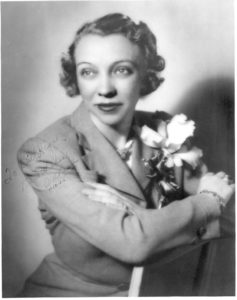
Aviation: Displaying business and financial acumen from a young age, Olive Ann Mellor joined the Travel Air Company in Wichita, Kansas as a secretary and the only woman out of the company’s 12 employees in 1924. She and Walter H. Beech, the founder of Travel Air married in 1930 and moved to New York City. In 1932, the Beeches returned to Wichita and established Beech Aircraft Company. She served as secretary-treasurer of their new company. In 1940, Walter Beech became ill, and Olive Ann Beech stepped into the leadership of the company. After he died in 1950, Olive Ann was elected president and chairman, at age 47, the first woman to head a major aircraft company. She guided the Beech Aircraft Company for more than 30 years. After it merged with the Raytheon Company in 1980, she served on Raytheon’s board of directors. Beech has been deemed “The First Lady of Aviation.” Her many honors include being the first person inducted into the Kansas Business Hall of Fame and induction into the National Aviation Hall of Fame and the American National Business Hall of Fame.
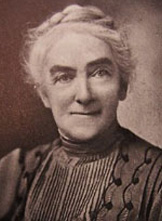
Drinking Water: Engineering News-Record called Ellen Henrietta Swallow Richards “the first female environmental engineer.” Richards produced the first water purity tables in 1887, helped establish the first systematic course in sanitary engineering at MIT, founded the science of home economics, is called the “mother of ecology” and was one of the founders of what today is called the American Association of University Women. After graduating from Vassar in 1870, Richards was accepted to MIT as a “special student” labeled the “Swallow Experiment.” In 1872, she began her work on water testing. In 1873, she was awarded a B.S. degree from MIT as well as an M.A. degree from Vassar College. Richards was later appointed as an instructor of sanitary chemistry in MIT’s newly established laboratory for the study of sanitation chemistry and engineering. She supervised a study in 1887-1889 of the quality of Massachusetts’ inland waters for the Massachusetts State Board of Health. Richards plotted the samples on a map of the state of Massachusetts. Through these efforts, she was able to detect geographic patterns in the chlorine data that served as an early warning system for inland water pollution. She also developed “Water Purity Tables”, that were the first water quality standards developed in the U.S. She said that “One of the most serious problems of civilization is maintaining clean water and clean air, not only for ourselves but for the Planet.”
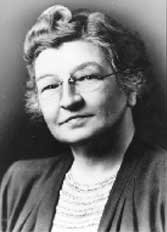
Energy: A woman engineer with many firsts to her name, Edith Clarke graduated from Vassar with an A.B. in mathematics and astronomy in 1908 (Phi Beta Kappa). She served for many years as a “computer” or overseeing computers – the women who performed the mathematical calculations for the engineers (men). After completing her master’s degree in electrical engineering at MIT in 1919 (the first woman), no one would hire her as an engineer because of her gender – they had no openings for a woman engineer! In 1922, General Electric finally offered her a job as an electrical engineer in the central station engineering department. When she accepted this job, she became the first professionally employed female electrical engineer in the U.S. Clarke’s area of specialty was electric power systems and problems related to its operation. Clarke literally wrote the textbook (in two volumes) that was used to educate all power system engineers for many years for symmetrical components: Circuit Analysis of AC Power Systems, Symmetrical and Related Components (1943) and a second volume in 1950. In 1915, she received a patent for her “graphical calculator” and, in 2015, she was posthumously inducted into the National Inventors Hall of Fame for that invention. One of the first women fellows of the Institute of Electrical and Electronics Engineers, she was one of the few women licensed as a professional engineer in New York, and later she became the first woman professor of electrical engineering in the country.
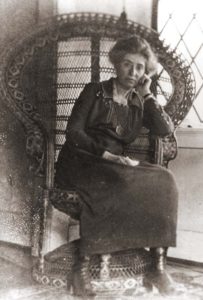
Public Parks: Mary Colter became an architect, designer and decorator for the Fred Harvey Company in 1902. The Fred Harvey Company had operated the gift shops, newsstands, restaurants, and hotels of the Atchison, Topeka, and Santa Fe Railway since 1876. Colter created those Fred Harvey hotels along the railroad and at the Grand Canyon, putting the Southwest on the map. Colter demonstrated a new style of architecture – one that grew out of the surrounding land. Her buildings pay homage to the early inhabitants of the region as she used Hopi, Navajo, Zuni and Mexican motifs. Colter also developed what is today called “National Park Service Rustic.” For these buildings she used local and natural materials. In 1925 at the La Fonda hotel in Santa Fe, New Mexico, her interior design and decorating featured local craftsmen from the pueblos; this created what is today called the Santa Fe Style. At Grand Canyon National Park, her buildings included the Hopi House (1905), Desert View Watchtower (1932), Hermit’s Rest (1914), Lookout Studio (1914), Bright Angel Lodge (1935) and Phantom Ranch (1922). The creator of Mimbreno china and flatware that was used on the trains, Colter also decorated the exteriors of the train stations in St. Louis, Chicago, and Los Angeles.

Rail: Mary Engle Pennington completed the coursework for a bachelor’s degree in chemistry, biology, and hygiene at the University of Pennsylvania, but at that time (1892), the University did not grant bachelor’s degrees to women. Instead, she received a Certificate of Proficiency in biology. She continued her studies and in 1895, received a Ph.D. in chemistry from the University of Pennsylvania. Her work in refrigeration led to her appointment as head of the Department of Agriculture’s food research laboratory. Pennington developed standards of milk and dairy inspection that were adopted by health boards throughout the country. Her methods of preventing spoilage of eggs, poultry, and fish were adopted by the food warehousing, packaging, transportation, and distribution industries. She has six patents associated with refrigeration and spoilage prevention methods. The standards she established for refrigeration railroad cars, which were informed by the time she spent riding freight trains, remained in effect for many years and gained her worldwide recognition as a perishable food expert. Pennington received the Garvan Medal from the American Chemical Society in 1940 and was the first woman elected to the American Poultry Historical Society’s Hall of Fame (1947). She has been inducted into the National Women’s Hall of Fame.
These women who contributed to infrastructure, as well as many other women, almost all of whom we have not heard about nor learned about in school, are profiled in our book, Her Story: A Timeline of the Women Who Changed America. Help us by continuing to tell the stories of the women who came before us, on whose shoulders we all stand. Tell young women especially so they understand that they can dream BIG, and then make their dreams a reality.
The post Women Contribute to the Country’s Infrastructure appeared first on Kalon Women Collective.
5 Simple Ways to Improve Your Fall Health Habits 11 Oct 2021 11:56 AM (3 years ago)
The last year and a half has been a strong reminder of the importance of good health. Statistics show that 73% of Americans consider their health habits and wellness a priority and are reevaluating their own lifestyle habits. In a recent survey of 13,000 people, (including 2,000 Americans), commissioned by Herbalife Nutrition and The Council for Responsible Nutrition (CRN), 89% of respondents globally reported they are currently taking steps to improve their health.
As a result of the changes people have made, more than half of those surveyed said they are now able to exercise longer without feeling winded, and 48% have gone down a size or notch in their belt.
Many are now choosing to take their health into their own hands with healthy lifestyle changes — and no matter what changes individuals make, the journey to better health habits almost always begins with small steps.
Wondering what you can do to make a lasting change in your overall wellness? Here are five ways you can start improving your health habits today, with insight from Dr. Kent Bradley, Chief Health and Nutrition Officer at Herbalife Nutrition:
1. Eat with nutrition in mind
We all know improving our health habits often starts in the kitchen, but maybe you need a few ideas to inspire you. Learning new recipes is easier than ever, with options just a keyword search away. There are hundreds of websites and instructional videos that offer great tutorials, and you can find recipes for virtually any ingredient to suit any taste or diet, whether it’s paleo, vegetarian or vegan, taking the work out of discovering delicious and healthy new dishes.
2. Skip the junk food
Along with eating healthy foods, it’s also important to cut down on, or remove, junk food from your diet. We often reach for that bag of chips or find ourselves in line at the drive-through when we haven’t planned a healthy, delicious, and filling meal at home. Successful meal prepping begins by making a list before you go shopping. This allows you to be thoughtful and intentional about what you purchase at the grocery store. Take a few minutes to plan out at least a few meals for the week ahead, perhaps referencing some of the ideas you saw in your search. Not only will you be more likely to eat healthier throughout the week, but you’ll save money by avoiding takeout.
3. Take vitamins or supplements
Taking a daily supplement can help ensure your nutrient intake is complete. Supplements can help fill nutritional gaps year-round and some support your immunity. Supplements can also support other areas of wellbeing, whether you’re looking for a pre-workout boost to help you reach for that next personal record, interested in getting enough protein to repair your muscles after a session of heavy lifting, or just looking to maintain overall wellness. And according to the survey results, many respondents plan to incorporate more vitamins and supplements into their diet and only 69% said they feel knowledgeable about the health benefits those can offer. However, 77% reported they would like to know more about the health benefits of different vitamins and supplements to incorporate into their health regimen.
4. Exercise more
Starting a new fitness routine can be a little daunting. Fortunately, there are apps that can support you no matter your current fitness level. Free streaming sites like HerbalifeNutritionFitness.com can provide workouts and tips to help keep your training fun and safe so you can avoid injuries and stay consistent. Consider joining a local, outdoor running or walking group. Not only will you meet new people but working out with friends or like-minded people will help keep you accountable and on track to meet your goals. Whatever you do, choose an activity you enjoy and you’ll be more likely to stick to it.
5. Prioritize sleep
Your sleep schedule plays a big role in weight maintenance and mental alertness. A lack of sleep can lead to an increase in appetite, which can quickly derail your wellness goals. On the flip side, getting the proper amount of sleep, which experts define as between 7-9 hours a night, can increase your metabolism, helping to burn off those extra calories throughout the day.
No matter where you are on your health and wellness journey, know that making improvements starts with small steps. Whether you’ve decided to make changes to your diet, exercise or meal planning routine, supplementation can benefit you by helping you meet your nutritional requirements. If you’re looking for more information on how vitamins and supplements can help you, let the experts at Herbalife Nutrition and CRN offer guidance and support.
The post 5 Simple Ways to Improve Your Fall Health Habits appeared first on Kalon Women Collective.
5 Dermatologist-Approved Ways to Change up Your Body Care Routine for Fall 11 Oct 2021 11:50 AM (3 years ago)
When life has you constantly on the run or buried under your to-do list, it’s easy to overlook self-care. Body care can be even more challenging when the seasons transition. A rushed shower or morning routine, coupled with colder temperatures and dry indoor heating, can leave your skin looking and feeling dry, dull and neglected.
While you can’t control the weather or unexpected changes to your day, you can definitely take steps to ensure your body care routine helps combat dry skin during the cold weather months. Here are some ways to give your skin the love it deserves, so you can feel confident and fearless in your skin every day.
1. Prep your skin
While a long, hot shower may feel fantastic after a chilly day, it can be damaging to your skin. Did you know that hot water actually strips away the skin’s natural oils and disrupts surface lipids and proteins? To combat dryness, decrease shower length and use tepid water instead of hot. Also, use a moisturizing body wash formulated with petrolatum (the number 1 dermatologist-recommended moisturizer) to help hydrate while you shower.
2. Treat your skin right
Find the right moisturizers to help your skin look and feel hydrated. The new Olay Firming Body Lotion with Collagen hydrates your skin with plumping moisture to tighten your skin while diminishing fine lines for a visible transformation. It’s part of a new collection that combines niacinamide — in the brand’s proprietary Vitamin B3 complex — with prestige skincare ingredients to hydrate and begin the process of increasing surface cell turnover.
“Moisturizing your skin immediately after each bath or shower, while it’s still damp, can help keep it from drying out,” said Dr. Maiysha Jones, Senior Scientist and Olay Body Care expert. “We believe in a science-first approach to body care which is why we intentionally include prestige ingredients that dermatologists tell us they trust. From collagen, hyaluronic acid and vitamin C, to our proprietary Vitamin B3 Complex, the Olay Body Lotion Collection leaves you with skin that acts younger, feels softer and looks smoother.”
Visit Olay.com for more information about the body lotion collection, which also features Nourishing with Hyaluronic Acid and Revitalizing with Vitamin C.
3. Protect your skin
Wearing sunscreen daily is equally important during the colder months as it is during the warmer months. Protect your skin by using sunscreen on any exposed areas, even on cloudy days, to help defend against damage from harmful UV rays. The American Academy of Dermatology recommends using sunscreen with SPF 30 or higher that provides broad-spectrum protection (against UVA and UVB rays) for any exposed skin.
4. Hydrate from within
When you start cranking up the heat indoors, don’t forget to hydrate your skin from within by drinking plenty of water throughout the day! This is also the perfect time to use a portable humidifier in rooms where you spend the most time. Moisturizing the air around you can further help keep your skin from drying out.
5. Dress for the weather
Think of your skin as a vital part of your wardrobe. Dress it with care. Wear comfortable fabrics to reduce the risk of irritation. Try layering light, breathable fabrics under clothing made of wool or other potentially abrasive materials and include a layer of lotion under gloves to protect your hands from wind and cold temperatures that can be drying.
Try incorporating these steps to help keep your skin looking and feeling its best from head to toe.
The post 5 Dermatologist-Approved Ways to Change up Your Body Care Routine for Fall appeared first on Kalon Women Collective.
COVID-19’s Dramatic Impact on Substance Abuse 11 Oct 2021 11:44 AM (3 years ago)
It may come as very little surprise, but the COVID-19 pandemic has spurred a dramatic increase in demand for substance abuse and mental health care. The pandemic has generated a significant impact to the collective mental health of the U.S.:
- The pandemic sparked an increase in substance use and first-time substance users.
- Thirteen percent of adults report that they have new or increased substance use due to COVID-19 stress, with an additional 11 percent of adults reporting suicidal ideation.
- The CDC’s National Vital Statistics System indicates that drug overdose deaths from Sept. 2019 through Aug. 2020 were at 88,295 predicted deaths — 19,000 more than the previous year (an increase of nearly 30 percent).
Naturally, the dramatic increase in demand for behavioral health and addiction treatment has stretched providers of such services to their brink. But NextGen Healthcare is leading the charge to address these challenges through its integrated healthcare platform and its NextGen Behavioral Health Suite, which provides effortless interoperability, and analytics-driven medical and behavioral health workflows implemented to treat those experiencing these disorders.
A Note about the Stigma of Mental Health Care
Unfortunately, the long-standing stigma associated with mental health conditions persists. The fact is it takes great strength to identify and acknowledge that we need help. Indeed, many are seeking assistance for these conditions. If you suffer from depression, anxiety or are struggling with addiction, you are not alone.
Nothing is more important than your health. Make sure to play an active role in maintaining it. Start with talking to your doctor about how you are feeling. Don’t hesitate to talk about the difficulties you are having. Your primary care physician is trained and able to assist with the issues you are experiencing. Inquire about the services your doctor’s office provides. You will find that some are set up to provide both physical care as well as mental health services and they may also offer the tools that make it easy for you to stay connected to your doctor’s practice. Through health information technology (HIT), doctors and patients are even able to stay connected virtually.
The next time you see your doctor, prepare a discussion list of topics:
- Integrated care: What services does your doctor’s office provide? Are you able to see a mental health therapist at your doctor’s office? Mental and physical well-being are deeply connected, so treating both is important.
- Online appointments: Can you schedule your own appointments online? Can you view your appointment history and/or modify existing appointments?
- Virtual visits: Does the practice offer virtual video visits (i.e., telehealth) for situations that don’t require an in-person office visit?
With the rise in substance abuse over the pandemic, it is especially important to assess your current situation and ascertain if you may need help from a healthcare or behavioral health provider. The most important thing to remember is that help is available and that having this conversation with your physician will set you on a path to better health.
Learn more at www.nextgen.com/nextgenmind.
The post COVID-19’s Dramatic Impact on Substance Abuse appeared first on Kalon Women Collective.
Do You Have the Facts About Your High Cholesterol? 11 Oct 2021 11:39 AM (3 years ago)
Research indicates that nearly 38% of US adults aged 20 years or older have high cholesterol, which puts them at a higher risk for heart attack and stroke. But high cholesterol can be “silent.” “If you have high cholesterol, you’d never know it, because it causes no symptoms,” Janet S. Wright, MD, FACC, director of CDC’s Division for Heart Disease and Stroke Prevention said. “That’s why it’s so important to get your cholesterol levels checked regularly.”
You’ve probably heard of high cholesterol. Let’s make sure you have the facts about what it is, who is at risk, and how to prevent high cholesterol.
Is all cholesterol bad?
Cholesterol is a fatty, waxy substance that is made by your liver and is also found in certain foods. Cholesterol, which travels through the blood on proteins called lipoproteins, is necessary to make hormones, protect nerves, and more. But the risk of heart attack and stroke rises when a person has high levels of the bad cholesterol, known as LDL (low-density lipoproteins), or low levels of the good cholesterol, known as HDL (high-density lipoproteins). HDL removes cholesterol from your bloodstream back to your liver and out of the body. The higher your HDL lever the lower your risk for heart attack and stroke.
Over time, high levels of LDL or low levels of HDL can cause deposits in walls of arteries throughout the body. This “plaque,” a mixture of fat, calcium, cholesterol, and more, can cause the artery to gradually narrow, limiting blood flow to the organ. The plaque can also suddenly rupture, closing the artery and causing organ damage, such as a heart attack or stroke.
So, you want to keep your total cholesterol and LDL levels low and your HDL high. A healthy total cholesterol level is below 200 mg/dL. Depending on other risk factors you have, you should aim for an LDL level of 100mg/dL or lower, and an HDL level of 40mg/dL or higher for men and 50 mg/dL or higher for women. Regular blood cholesterol checks can help you manage your levels.
What causes high cholesterol?
Certain health conditions can increase your risk for high cholesterol. They include:
- Type 2 diabetes.
- Obesity.
- Familial hypercholesterolemia (FH), a genetic condition causing a very high LDL.
Lifestyle choices can also increase your risk. These include:
- Diet high in saturated and trans fat.
- Low physical activity.
- Smoking tobacco.
Age, sex, and family history also can increase your risk.
Can you prevent high cholesterol?
Regular cholesterol checks will help you keep your levels under control. Your doctor may recommend diet and exercise and possibly medicine, to help you achieve control.
Eat a diet rich in fresh fruits, vegetables, and whole grains. The more colorful your foods, the better. Get protein from low-saturated fat sources, such as fish and chicken, beans, nuts, and seeds. Eat less of foods that are high in saturated fats, such as red meat, cheese, and butter. Choose low-fat dairy or fortified soy products.
Regular physical activity is vital to control your weight, lower triglycerides (a type of fat that is harmful if present in high levels),) and increase HDL cholesterol. The Physical Activity Guidelines for Americans recommends that adults get 150 to 300 minutes of moderate physical activity each week Also, small amounts of physical activity add up, so take brisk walks, ride a bicycle, or use the stairs to increase activity.
“Smoking harms many parts of the body, including the heart, brain, and blood vessels all over the body. Tobacco use speeds up that plaque formation in the arteries, increasing the risk for heart attack and stroke,” said Dr. Wright. “Quitting at any age can lower your risk for heart disease. My advice is simple: If you don’t smoke, don’t start. If you do smoke, quit.”
Also, limit alcohol intake, which can increase cholesterol and triglyceride levels. High triglycerides, combined with low HDL or high LDL, can increase your risk for heart attack and stroke.
Finally, your doctor may prescribe a medicine, usually a statin, to control cholesterol levels if you have heart disease, a family history of heart disease, diabetes, or have been unable to manage cholesterol with diet and exercise alone. Work with your health care team to find the best ways for you to control cholesterol.
For more information, check out CDC’s Cholesterol website.
The post Do You Have the Facts About Your High Cholesterol? appeared first on Kalon Women Collective.
Protecting the Simple Joys in Life – Like Coffee Time – From Tooth Sensitivity 11 Oct 2021 11:33 AM (3 years ago)
Americans might not agree on whether hot coffee or iced coffee is better (although a new study1 suggests that hot coffee remains superior), but they can agree on what makes them happy. Happiness can often be found in the small, simple moments that fill our everyday lives. Moments like enjoying the company of friends and family, stopping to smell your favorite fall-scented candle and savoring that first sip of coffee in the morning. Unfortunately, for so many people living with tooth sensitivity, pain often gets in the way of enjoying these small moments.
The survey of 2,000 people conducted by OnePoll on behalf of Sensodyne revealed just how important these small moments of joy really are. Fifty-four percent of respondents said they have adapted their plans or behavior due to tooth sensitivity, and 41% even said that they had to give up a favorite food or drink due to tooth sensitivity — like their morning cup of coffee. Findings also indicated 42% of respondents increased their coffee intake over the last year, likely due to the challenging year and the difficulty of finding those much-needed small, joyful moments.
This fall season, don’t suffer through these painful moments — conquer them. Your warm apple cider and hot chocolate doesn’t need to come at the price of your joy. Even if you’re still sipping on iced coffee as the months get colder, those jarring and painful twinges of tooth sensitivity don’t have to stay, too.
Where does that twinge come from?
The source of pain you may sometimes feel when trying to enjoy your hot cup of java (or something cold, like iced coffee or tea) may be due to tooth sensitivity. If you have sensitive teeth, everyday foods and drinks can bring an unexpected twinge. The twinge you feel is typically characterized as a short and sharp pain in your teeth.
When tooth enamel wears away, it exposes the soft, inner layer of tooth called dentin, which houses thousands of microscopic channels that run toward the center of the tooth — where the nerves live. Certain triggers — like hot coffee and drinks — can travel through these channels and stimulate the nerve, causing tooth sensitivity, ruining a joyful moment instantly.
How can you protect your teeth from tooth sensitivity?
Defending your teeth against those unpleasant twinges can be as simple as switching to a daily sensitivity toothpaste like Sensodyne Repair and Protect with Deep Repair. Twice daily brushing with the number-one dentist recommended toothpaste brand for sensitive teeth is an easy way to continue enjoying the foods and drinks you love — hot and cold — without experiencing that unpleasant sensitivity.
Sensodyne Repair and Protect with Deep Repair is scientifically proven to go deep within dentin tubules†** and provides clinically significant sensitivity relief with twice daily brushing3, and also offers everyday cavity protection. This toothpaste contains the scientifically proven ingredient stannous fluoride, which builds a repairing layer†*2 over the sensitive areas of your teeth, helping to protect you from tooth sensitivity pain3*, and allowing you to regain those small moments of joy with a hot cup of joe.
Life’s too short to miss out on the things you love due to painful twinges caused by tooth sensitivity — so don’t! If you’re looking to enjoy your coffee or a hot cappuccino with friends and family this National Coffee Day, start brushing twice daily with Sensodyne Repair and Protect with Deep Repair to enjoy your hot or iced cup of coffee — pain-free.
1 This online survey of 2,000 U.S. Americans was commissioned by Sensodyne and conducted by market research company OnePoll, in accordance with the Market Research Society’s code of conduct. Data was collected between June 15, 2021, and June 18, 2021. All participants are paid an amount depending on the length and complexity of the survey. This survey was overseen and edited by OnePoll, who are members of the MRS and have corporate membership to ESOMAR and AAPOR.
2 In vitro report number G7322/014; GSK data on file, 2020.
3 Parkinson et al; Am J Dent; 2015; 28 (4): 190-196.
* With twice daily brushing.
** As shown in an in vitro study.
† Sensodyne Repair & Protect is intended for relief of occasional dentin hypersensitivity that occurs when sensitive teeth are exposed to hot or cold substances. It contains stannous fluoride, a well-established, effective tooth desensitizer with remineralization properties. There is general scientific consensus that occluding exposed dentin effectively relieves the occasional pain of dentin hypersensitivity.
The post Protecting the Simple Joys in Life – Like Coffee Time – From Tooth Sensitivity appeared first on Kalon Women Collective.
What You Need to Know About Cybersecurity and Working From Home 11 Oct 2021 11:26 AM (3 years ago)
If you are employed in the US, it’s more likely than not that you worked remotely this past year.
52% of Americans have done part or all of their jobs from home during the pandemic. That’s even more than the number of Americans with a college degree.
Over time, we’ve perfected some aspects of remote and hybrid working — from comfortable chairs to Zoom happy hours.
But there’s one thing that remains a major problem for most people: cybersecurity.
A homegrown problem
Work-from-home arrangements have contributed to a 238% increase in global cyberattack volume during the pandemic. And the attacks haven’t simply grown in amount — they’re more costly, too. The average cost of a data breach rose by 10% to a staggering $4.24 million.
Why? Because employees aren’t following cyber standards and best practices. For instance, the vast majority of employees are using work devices for personal tasks and personal devices for work. Some of you might even be thinking, “What’s wrong with that?”
Now, more than ever, we all need to take cybersecurity seriously. “Cybersecurity is a top priority because our clients entrust us with their sensitive information and personal finances,” says Bashar Abouseido, Managing Director and Chief Information Security Officer at Charles Schwab. “We make it everyone’s business. We train every employee on best practices so that our clients can rest assured that their money, investments and financial futures are safe.”
Cybersecurity is everyone’s business
You might be thinking, “Another lecture about compliance? Did my IT department pay you to write this?” But everyone has a stake in cybersecurity.
- It impacts the employer. Businesses can lose more than money — their reputation, customers and even ability to stay open are at stake. In fact, 60% of small and midsized businesses that are hacked go out of business within six months.
- It impacts the employee. Not only can hackers unlawfully access company data through employees, but personal data can also be compromised. From social media accounts to personal finances, sensitive information becomes vulnerable without proper safeguards in place.
- It impacts the client. It takes a lot of trust to put your own data in someone else’s hands. Sometimes, the stakes are incredibly high. Financial services companies, for instance, are entrusted with everything from employment information and income to Social Security numbers and retirement savings.
What’s next?
Here are four ways remote employees can protect themselves, their clients and the companies they work for:
- Don’t mix business and personal devices: Using personal devices for work-related activities can easily put company data at risk if there is a breach. And that goes both ways: If the company is hacked, personal data may also be stolen.
- Avoid public Wi-Fi: It’s great when you don’t need a password to connect to the internet at your local coffeeshop or airport, right? Hackers agree! Public Wi-Fi networks are inherently insecure, and that means it’s best to avoid them if at all possible.
- Get a virtual private network (VPN): These networks provide encrypted connections, ensuring that sensitive information is safely transmitted.
- Use multi-factor authentication (MFA): When transmitting sensitive information over the internet, look for websites that ask you to verify your identity by receiving an email, text or call. Microsoft recently found that MFA prevents an astonishing 99.9% of all cyberattacks.
Visit https://www.aboutschwab.com/cybersecurity to learn more about cybersecurity and how to keep yourself safe.
The post What You Need to Know About Cybersecurity and Working From Home appeared first on Kalon Women Collective.
3 Tips to Beef up Your Football Season Tailgate Game PLUS Bourbon Beef Cheese Dip 8 Sep 2021 11:53 AM (3 years ago)
With football season excitement mounting, people are already planning what to make for their next tailgating event. While cooped up at home last year, you may have had time to beef up your current tailgate recipes or try out something new. Now that you can reunite with friends and family before the big game, it’s time to put your best tailgate spread out on the 50-yard line.
Like any star player, your tailgate platter isn’t born a champion; it’s made a champion. While it doesn’t take much to score a touchdown with your pre-game food, with these tips from the experts at Beef. It’s What’s For Dinner. and the Beef Checkoff, you can take your all-star dish to the playoffs if:
1) It’s easy to eat
When it comes to tailgate recipes, finger foods will play a role in your winning strategy. So whatever you decide to bring, make sure it’s mini and edible using your hands. From potluck-style roast beef sandwiches to beef pinwheels and beer-infused cheese spread sliders, it’s easy to take your tailgate game to the next level. Plus, with minimal prep, recipes like these make sure you have time to step away from the kitchen and join in on the tailgating fun.
2) There’s enough for everyone
Stadium parking lots can open as early as 6 a.m., so between the time everyone gets there and kick-off, there’s no doubt your crew will be hungry. When creating your game-winning tailgate cuisine, make enough of it so you don’t run out. Get a proper headcount of everyone who plans to be there and make sure each person can have at least a few servings. If you end up with leftovers, give them to your fellow game day patrons or save them for lunch.
3) It goes well with bourbon beef cheese dip
Nothing makes for a winning tailgate quite like beef, bourbon and cheese — and why not put them together? “Not only is this dip delicious, but it’s also easy, says Chef Alex Reitz, manager of culinary for the Beef. It’s What’s For Dinner. brand. “With simple ingredients like deli Roast Beef and cream cheese, this dip comes together quickly and packs in 8 grams of protein to keep your crowd happy and full of energy to cheer on the team!”
Beef is more than what’s for dinner, it’s the flavor of game day. If you’re looking to add this dip to your roster, this recipe can get you started:
Ingredients:
8 ounces deli roast beef
8 ounces cream cheese
6 ounces white cheddar cheese, shredded
1/2 cup Romano cheese, shredded
1/2 cup sour cream
4 strips cooked bacon, finely chopped
2 Roma tomatoes, diced
2 tablespoons bourbon
2 teaspoons Worcestershire sauce
1 tablespoon Dijon style mustard
1/4 cup fresh parsley, finely chopped
1/4 teaspoon paprika
2 teaspoons freshly ground black pepper
2 teaspoons granulated garlic
Cooking:
1) Preheat oven to 350°F.
2) Set aside 1 tablespoon parsley, 1 tablespoon chopped bacon and 1 tablespoon diced tomatoes for garnish.
3) In a standing mixer, combine cream cheese, white cheddar cheese, bacon, deli roast beef, sour cream, Romano cheese, tomatoes, paprika, garlic, mustard, parsley, Worcestershire sauce, bourbon and pepper until well incorporated.
4) Remove bowl from mixer and refrigerate for at least 30 minutes or until ready to bake.
5) Spread the dip into an 8″ cast iron or ovenproof skillet.
6) Bake in a 350°F oven for 25 minutes or until golden brown and edges are bubbling.
7) Remove from oven and top with remaining bacon, parsley and tomatoes. Serve warm with crackers, toasted bread or celery and carrots — it’s the ultimate finger food for a cold day!
The post 3 Tips to Beef up Your Football Season Tailgate Game PLUS Bourbon Beef Cheese Dip appeared first on Kalon Women Collective.
5 Tips for Creating an Edible Garden – Anytime, Anywhere 8 Sep 2021 11:49 AM (3 years ago)
People have become more health-conscious in the last year, seeking relaxing activities and projects that give them a sense of accomplishment. According to the National Gardening Association, 67% of Americans are growing or planning to grow their own fruits, herbs and vegetables in 2021, and there are more than 18.3 million new gardeners trying their hand at growing their own flowers or produce.
While growing your own edible garden can be exciting, there are a few things to consider before you start. It can all feel a bit overwhelming, but with tips from Garrett Magee, the design mastermind behind the landscape design firm Manscapers, you can create the ultimate edible garden — no matter the time of year or where you live. Here are a few suggestions to help your garden sprout:
1) Think about what you already eat
Before you start digging, plan your edible garden by looking inside your fridge to see what kinds of produce you buy from the grocery store for inspiration. By growing fruits and veggies you like, you don’t have to worry about them going to waste. If you have kids, grow the fruits and veggies they enjoy too.
2) Start small
When building your edible garden, start small by growing plants out of a window box or small garden bed. As you get more comfortable, slowly expand and scale up the following year. Fruit and vegetable gardens are typically low maintenance, but they’re never no maintenance, so be patient and stay on a regular schedule — you’ll develop your green thumb in no time.
3) Grow a vertical garden if you live in a big city
If you live in an urban environment or don’t have a traditional back yard, every square inch of space is precious. However, that doesn’t mean it’s impossible to garden. Focus on growing your produce up rather than out with tools like a garden trellis, which works well for supporting high-climbing plants like cucumbers.
4) Go green
For the quickest turnaround on your homegrown crops, focus on leafy greens like lettuce, kale, spinach and herbs. These vegetables are easy to grow, whether in a window box or a big backyard garden. Plus, you can continuously harvest them throughout the season.
Important tip: When harvesting leafy greens, use scissors to cut off the outer leaves at the base of the stem. That way, they can grow new leaves in the center.
5) Find more ways to incorporate fruits and veggies into your life
Growing an edible garden can help you to eat more of the fresh produce you love. However, you can also incorporate fruits and veggies into your daily routine with a smoothie. Beets are a great end-of-season vegetable and can be planted at the end of spring or from June to September.”
For more ways to enjoy your favorite fruits and veggies in innovative forms, check out nakedjuice.com.
The post 5 Tips for Creating an Edible Garden – Anytime, Anywhere appeared first on Kalon Women Collective.
Dark Chocolate Is a Top 2021 Food Trend 8 Sep 2021 11:43 AM (3 years ago)
Throughout the pandemic people have turned to their favorite foods to bring them joy. However, with a new focus on wellness, people are taking a fresh approach to classic comfort foods. Chocolate is the perfect example — as sales soar globally, dark chocolate is emerging as a top food trend, offering indulgence you can feel good about.
What is dark chocolate?
Chocolate features cocoa powder, which comes from the cocoa bean. This powder is unsweetened and bitter before being used as a main ingredient in recipes. Traditional milk chocolate adds high amounts of sugar and fat, but dark chocolate has higher levels of cocoa powder and fewer unhealthy additions.
According to Harvard T.H. Chan School of Public Health, dark chocolate contains 50-90% cocoa solids, cocoa butter and sugar, while milk chocolate contains 10-50% cocoa solids, cocoa butter, milk in some form and sugar. Some innovative chocolate companies are even coming out with sugar-free dark chocolate options.
Sugar-free dark chocolate
“As more everyday occasions call for celebrations with chocolate and we snack more at home, we wanted to offer a guilt-free and delicious option,” shares Crystal Thomas, KOHLER Original Recipe Chocolates chocolatier and production manager at Destination Kohler. “We dedicated over a year to source the best chocolate from France with the highest content of cacao for optimal health benefits and flavor. Add a few premium ingredients and you get Sugar-Free Chocolate.”
Without the excessive additives, dark chocolate can be a healthy part of a balanced diet and provide numerous benefits. Cocoa beans have flavanols, a type of phytonutrient with health-promoting properties. The Mayo Clinic points to research that the ingredients in dark chocolate can help reduce inflammation, lowers risk of heart disease, reduces blood pressure and more.
How to enjoy dark chocolate
Because of its healthy characteristics and indulgent taste, dark chocolate is a top food trend. Be inspired by these seven ways to enjoy dark chocolate:
Serve chocolate for dessert: Dark chocolate is a decadent dessert that impresses. It’s also a time-saving option because there’s no kitchen prep needed. Just plan ahead by buying high-quality dark chocolates and confections and serve a single piece or several on a small plate to each person.
Create a chocolate board: Much like a cheeseboard or charcuterie tray, a chocolate board presents a variety of dark chocolate and accompaniments in a visually impressive way. Start with a large tray or serving dish, fill with several varieties of dark chocolate grouped in an eye-pleasing way, and add extras such as nuts, pretzels and fresh berries.
Explore classic combinations: Dark chocolate complements classic flavors so you can satisfy curious taste buds. For example, KOHLER Original Recipe Chocolates has a new Dark Chocolate Peanut Butter Bar with a silky-smooth dark chocolate shell enveloping a velvety ganache filling of natural peanut butter, 72% chocolate and a dash of flaked sea salt.
Enjoy chocolate for breakfast: Chocolate can be a healthy part of breakfast when you keep unsweetened cocoa powder on hand. Try sprinkling this powder on top of cereal, oatmeal or toast in the morning. You can also add some to your morning smoothie for a chocolatey boost.
Make it a mocha: Melt a single piece of dark chocolate in your coffee in the morning for a rich mocha taste you can feel good about. Place a small piece in the bottom of your cup, pour coffee on top and then mix with a spoon. To speed up the process, microwave the chocolate for 10 seconds in your cup first to start the melting.
Try different pairings: The flavors of dark chocolate can be a wonderful pairing to other foods for a tasty snack or dessert any day. Try dark chocolate with nuts such as almonds, sweet fruits like banana or aged cheeses like Gouda. Dark chocolate also pairs nicely with coffee or a glass of red wine.
Give dark chocolate gifts: Whether as a hostess gift or to celebrate a special occasion, dark chocolate can be the perfect present. Visit KohlerChocolates.com to shop for beautiful artisanal dark chocolate creations that can be safely shipped across the country.
The post Dark Chocolate Is a Top 2021 Food Trend appeared first on Kalon Women Collective.
Women on Quarters 8 Sep 2021 11:39 AM (3 years ago)
With the Circulating Collectible Coin Redesign Act of 2020, the U.S. Congress directed the Secretary of the Treasury to design and issue coins in each of the years 2022 through 2025 that feature accomplished U.S. women. The women must no longer be living, and their contributions can be in fields including but not limited to suffrage, civil rights, abolition, government, humanities, science, space and the arts. Five women will be featured in each of the four years of the program. The five women to be featured on the 2022 quarters include Anna May Wong, Adelina Otero-Warren, Maya Angelou, Sally Ride and Wilma Mankiller.

A leader in the New Mexico’s women’s suffrage movement, Adelina Otero-Warren was the first Hispanic woman to run for U.S. Congress and the first female superintendent of the schools in Santa Fe. She became active in the suffrage movement, insisting on materials that were published in Spanish in addition to English. In 1917, she became chair of what would be known as the National Woman’s Party; a group under the leadership of Alice Paul that used tactics viewed as militant to advocate for suffrage.
In 1917, she was appointed superintendent of the Santa Fe public schools and won the election against a male opponent in 1918, remaining in the role until 1929. In 1922, she became the first Hispanic woman to run for the U.S. Congress, when she won the Republican nomination against a male opponent. She remained active in local and state government for the rest of her career.

Anna May Wong is one of the more than 1,200 women featured in co-author Jill Tietjen’s second book in the Her Story series, Hollywood: Her Story, An Illustrated History of Women and the Movies. She was the first Chinese-American entertainment star to be recognized internationally. Wong’s forty-year career as an actress started in the silent film era and extended through talkies, radio and television. In 1922, she acted in the silent movie The Toll of the Sea, which was one of the first movies made in color.
One of the first to embrace the flapper look, Wong was a fashion icon during the 1920s and 1930’s. Stung by the severe disappointment of not being cast in the lead role in the 1935 movie based on Pearl Buck’s The Good Earth, Wong returned to make television history in 1951 when she had her own television show – the first featuring an Asian-American series lead – The Gallery of Madame Liu-Tsong.
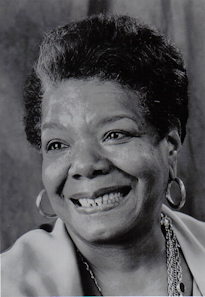 Maya Angelou has inspired generations of women as a role model who defied social norms and overcame prejudice, discrimination and abuse. After being raped by her mother’s boyfriend, she withdrew and was mute for five years. With her grandmother’s encouragement, she gradually emerged as a very talented artist; she worked as an actor before turning to writing. In 1970, her first autobiographical work, I Know Why the Caged Bird Sings, became a best seller and was nominated for a National Book Award.
Maya Angelou has inspired generations of women as a role model who defied social norms and overcame prejudice, discrimination and abuse. After being raped by her mother’s boyfriend, she withdrew and was mute for five years. With her grandmother’s encouragement, she gradually emerged as a very talented artist; she worked as an actor before turning to writing. In 1970, her first autobiographical work, I Know Why the Caged Bird Sings, became a best seller and was nominated for a National Book Award.
In 1972, Angelou became the first African-American woman to have a feature film developed from her work; it was the screenplay and musical score Georgia Georgia. Her writings have brought her numerous awards and she has been nominated for a Tony, an Emmy, and a Pulitzer Prize. Angelou received more than 50 honorary doctorates and has been inducted into the National Women’s Hall of Fame. She says: “How important it is for us to recognize our heroes and she-roes!”

The first U.S. female astronaut in space, Sally Ride made two trips aboard a space shuttle. She later encouraged children to pursue careers in Science, Technology, Engineering and Mathematics (STEM). Ride grew up in California where she was a star tennis player. She attended Stanford University, majored in physics as an undergraduate and also earned her masters and doctoral degrees there. She was one of the first six women selected to train as astronauts in 1978. Her first flight was aboard the space shuttle Challenger in 1983. During that flight, Ride operated the robotic arm. The crew successfully launched satellites and performed the first successful satellite retrieval and deployment. Her second flight was in 1984, also aboard the space shuttle Challenger. She again successfully operated the robotic arm to remove ice from the shuttle’s exterior and to adjust a radar antenna.
Later Ride served on committees investigating the Challenger and Columbia shuttle tragedies, taught college physics and started Sally Ride Science, to encourage children, especially girls, to pursue STEM careers. She also wrote science-related books for children. In addition to being featured on a 2018 U.S. postage stamp, Ride has been inducted into the National Women’s Hall of Fame and received the Presidential Medal of Freedom posthumously.
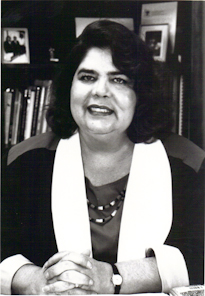
In 1985, Wilma Mankiller became the first woman to serve as the head of a major Native American tribe in North America when she was elected Principal Chief of the Cherokee Nation. Although she was born in Oklahoma, the family relocated to San Francisco when she was young. Mankiller’s activism was inspired in 1969 when a group of Native Americans took over Alcatraz Island, outside of San Francisco, to protest the suffering of their people. She said, “When Alcatraz occurred, I became aware of what needed to be done to let the rest of the world know that Indians had rights, too.”
Mankiller worked first to empower the Native Americans in California. After her divorce, she moved back to Oklahoma with her two daughters; she was determined to help her tribe. During her ten yeas as Principal Chief, the population grew from 68,000 members to 170,000. Infant mortality was reduced, and educational, healthcare, and housing opportunities were enhanced. Mankiller was inducted into the National Women’s Hall of Fame. She said, “A lot of young girls have looked to their career paths and have said they’d like to be chief. There’s been a change in the limits people see.”
Most of these accomplished women to be featured on U.S. quarters, as well as many other women, almost all of whom we have not heard about nor learned about in school, are profiled in our book, Her Story: A Timeline of the Women Who Changed America. Help us by continuing to tell the stories of the women who came before us, on whose shoulders we all stand. Tell young women especially so they understand that they can dream BIG, and then make their dreams a reality.
The post Women on Quarters appeared first on Kalon Women Collective.
Could You Have Dry Eye Syndrome? Here’s What You Need to Know 8 Sep 2021 11:29 AM (3 years ago)
Do you suffer from dry, itchy eyes? According to the American Journal of Ophthalmology, nearly half of all adults experience dry eye symptoms. While Dry Eye affects people more as they age, this chronic condition is now also a rapidly growing problem for younger people due to increased use of digital devices like smartphones.
Common symptoms of Dry Eye, according to the Mayo Clinic, include:
- Irritated, sore eyes
- Eye fatigue, blurred vision
- Redness
- Stringy mucus
- Sensation of having something in your eye
- Difficulty wearing contact lenses
- Watery eyes
- Light sensitivity
If you experience any of these symptoms, consult your eye care professional for a complete eye exam.
What causes Dry Eye?
Healthy eyes use tears to continuously moisturize the cornea, which helps protect it from contaminants. But most people are surprised to learn that Dry Eye is usually not caused by a lack of tears (known as aqueous deficiency). Instead, the problem is that their eyes are unable to retain enough of their natural tears. In other words, the moisture that protects their eyes is evaporating into the air.
The global authority on Dry Eye, the Tear Film and Ocular Surface Society (TFOS), assembled the top 150 doctors and researchers worldwide to redefine Dry Eye Disease in 2017. Their findings reversed decades of belief that Dry Eye was mainly an aqueous deficiency problem. They found that over 85% of all Dry Eye cases are related to a condition called Meibomian Gland Dysfunction (MGD), when oil glands in the eyelids get clogged and cannot supply the oils necessary to coat and protect the eye’s tear film from evaporation. TFOS recommended heat therapy and daily eyelid hygiene to combat Dry Eyes related to MGD.
It remains unclear why large companies in the optical industry have not quickly responded to this new standard of care for Dry Eye Syndrome with education and advertising campaigns touting new heat therapy products for use at home. Perhaps creating products of this kind was too difficult or expensive. Or perhaps the fact that several of these companies sell billions of dollars worth of “artificial tears” created concerns about potential financial risks from betting on disruptive new technology.
The problem with artificial tears
What is clear is that, over the past 20 years, if you were diagnosed with Dry Eye, your doctor probably recommended over-the-counter products like “artificial tears” based on the belief that the problem was an inability to produce enough tears. However, most “artificial tears” provide only temporary relief of dry eye symptoms, leading you to re-use (and repurchase) them over and over again. While certainly helpful, most artificial tears do not address the underlying root cause of Dry Eye: the clogging of the glands in your eyelids due to MGD.
How heat helps with Meibomian Gland Dysfunction
Today, top ophthalmologists and optometrists recommend heat therapy at a specific temperature to melt the solidified oils in the eyelid’s glands and unclog them to help restore the eyes’ ability to retain more of their natural tears. Previously, heat therapy was only available as an expensive in-office treatment, or with microwavable eye masks patients apply at home. However, some patients find it inconvenient to microwave these masks and spend 10 to 20 minutes each day blindfolded. Microwavable masks can also accumulate contaminants, making them less hygienic for use around the eyes.
Doctors created a new Dry Eye therapy for home use
A new product — EverTears — is the first FDA-cleared, over-the-counter treatment combining self-heating compress technology to help unclog eyelid glands with a pre-moistened cloth cleansing pad for eyelid hygiene. No microwave is needed, as each single-use pad can be activated to achieve the precise temperature needed for optimal effectiveness. Each sterile double-sided cloth pad comes individually wrapped and ready to use. It only takes about five minutes a day to experience the benefits of EverTears. This combination of effectiveness and convenience was cited by world renowned ophthalmic surgeon and innovator Dr. Marguerite McDonald, who hailed EverTears as a “game-changer” for the treatment of Dry Eye Syndrome.
“While there are several unique aspects about EverTears, the real game-changer in helping to improve the lives of patients with Dry Eyes and Meibomian Gland Disorder (MGD) is convenience,” said McDonald.
Ask your eye doctor about this innovative product, or visit www.tryevertears.com.
The post Could You Have Dry Eye Syndrome? Here’s What You Need to Know appeared first on Kalon Women Collective.
5 Surprising Causes of Backside Discomfort 8 Sep 2021 11:26 AM (3 years ago)
From exercise and travel to self-care and beyond, there are many activities we look to that will help better our health and wellness both physically and mentally. However, sometimes the most well-meaning activities can have unintentional effects to our bodies, including causing pain, discomfort and even uncomfortable backside itching or burning.
The good news? Back there issues are common and there are solutions to help manage and treat the irritation. To help you get to the bottom of why your backside may be feeling a bit off, consider the following triggers that might be causing butt discomfort.
1) Working the glutes
Moving your body is one of the best ways to maintain your overall health and wellness. However, strenuous weightlifting or exercises that increase pressure on your rear, such as bike riding, can lead to some unwanted backside issues. To help prevent back there discomfort from leaving the gym with you, make sure to practice good form and warm up properly to reduce the risk of over-exertion, straining or injury.
2) Planes, trains and automobiles
Change in routine that inevitably comes with traveling often impacts our bodies more than we may realize. Particularly, extended time spent sitting on planes, trains or in the car coupled with not-so-ideal bathroom scenarios can lead to uncomfortable back there pains. As you plan out your travels, map out your route to give yourself breaks from sitting down and find accessible bathroom options to ensure you can avoid “holding it in.” Additionally, find room in your suitcase for products to help you feel comfortable along the way, like the new Preparation H Soothing Relief Cooling Spray. The new Cooling Spray soothes and cools for fast, targeted relief of burning and itching in an easy-to-use, no-touch form to help keep you feeling fresh and comfortable, even when away from home.
3) Stressing out
Experiencing stress on a regular basis not only has a negative impact on mental well-being, but it can also have an impact on your body. In fact, prolonged stress can be linked to digestive issues, such as upset stomachs, loss of appetite and even constipation. Common coping mechanisms, like unhealthy snacking or alcohol, can create a negative impact on digestive health, as well. Try incorporating stress-relieving activities into your daily routine, such as yoga, meditation or even simply chatting with a friend or loved one. Your belly and backside will thank you.
4) Favorite fragrances
Practicing good hygiene is an important part of taking care of your body; however, utilizing too many fragrance-focused products to keep clean may cause irritation or dryness to the skin, especially in the down-there region. Additionally, over-scrubbing sensitive areas when washing may also cause broken skin. Try simplifying your wash routine and use just one gentle product instead. Less is more.
5) Wardrobe malfunction
A secret culprit of backside discomfort: wearing tight clothing. Restrictive fashion or lacy undergarments, especially when items are made of synthetic fabrics like polyester, can cause skin friction and even trap excess moisture, which could create a damp and irritating environment for your behind. Try incorporating looser fitting clothing options into your wardrobe, as well as pieces that are made of more breathable materials, like cotton.
Sometimes the sneaky culprits of backside discomfort can be common day-to-day activities. Taking a little extra effort to find solutions that work best for you will help prevent backside pains and help you stay comfortable all day long.
For more information, visit www.preparationh.com.
The post 5 Surprising Causes of Backside Discomfort appeared first on Kalon Women Collective.
Studies Show Bone Health Goes Beyond Just Calcium 8 Sep 2021 11:19 AM (3 years ago)
Experts have found better alternatives to increasing bone health and density than calcium alone.
Approximately half of all adults aged 50 and older are at risk of breaking a bone, according to the National Osteoporosis Foundation.[1]
Even seemingly safe activities like exercising and driving can become troublesome for individuals with osteoporosis. Debilitating fractures and long-term issues are frequent outcomes of weak and brittle bones.
In fact, 50 percent of people who break their hips never fully heal, 10 percent end up in nursing homes, and 33 percent die within a year of their initial fracture.[2]
Rheumatologist and internist Dr. Adam Kreitenberg explains, “Many people don’t realize they have bone density issues until they experience a fall or fracture. The goal is to build strong and healthy bones before it’s too late.”
Calcium’s benefits, such as gaining bone mass and increasing bone density[3], have been well-documented for many years. So, why are recent studies revealing an increase in osteoporosis in the United States, particularly among women?[4]
According to a recent clinical study published in The Journal of Orthopaedic Science, calcium needs to combine with vitamin D3 and other key nutrients in order to support bone density.[5]
However, not just any calcium will do; a highly absorbable form of calcium, such as calcium hydroxyapatite, is recommended since it is bioidentical to the calcium already found in your body.
When calcium hydroxyapatite is combined with vitamin D3, studies show that bone density is increased and the rate of bone loss is reduced. It may also aid in the prevention of osteoporosis.[6]
Hogne Vik, M.D., scientist and chief medical officer of NattoPharma, has also been working on cutting-edge research surrounding the role of vitamin K2 in helping support bone health.
Dr. Vik explains, “Countless clinical studies are showing that our bodies require the presence of vitamin K2 to absorb calcium properly. That’s because Vitamin K2 is the only compound that can direct calcium to the appropriate places: your bones and teeth.”
Nattopharma created a patented and effective version of MK-7, MenaQ7® — the only clinically studied form of vitamin K2 available on the market that delivers optimal bone health support.
In one study, healthy postmenopausal women took a daily 180mcg dose of MenaQ7 over a 3-year period. Participants experienced a significant improvement in bone mineral content and density. Their rate of bone degradation slowed by about 50%.[7]
“In my rheumatology practice, I combine complementary treatments, such as diet and weight bearing exercises with an advanced medicinal treatment, OsteoMD,” Dr. Kreitenberg explains. “This is a powerful bone support therapy based on emerging clinical data, and my patients are already noticing the difference it is making in their day-to-day lives.”
[5]The Synergistic Interplay between Vitamins D and K for Bone and Cardiovascular Health: A Narrative Review (nih.gov)
[6]Beneficial Effects of Vitamins K and D3 on Redox Balance of Human Osteoblasts Cultured with Hydroxyapatite-Based Biomaterials (nih.gov)
[7]Proper Calcium Use: Vitamin K2 as a Promoter of Bone and Cardiovascular Health (nih.gov)
The information contained in this article is not intended to recommend the self management of health problems or wellness. It is not intended to endorse or recommend any particular type of medical treatment or product. Should any reader have any health care related questions, promptly call or consult your physician or healthcare provider. No information contained in this article should be used by any reader to disregard medical and/or health related advice or provide a basis to delay consultation with a physician or a qualified healthcare provider.
The post Studies Show Bone Health Goes Beyond Just Calcium appeared first on Kalon Women Collective.
4 Ways Long-Term Care Can Weather the Next Emergency 8 Sep 2021 11:09 AM (3 years ago)
COVID-19 has shaken communities worldwide. Despite strenuous efforts by caregivers and medical professionals alike, people needing long-term care and living in communal care settings have suffered gravely. According to a New York Times database, almost one-third of U.S. coronavirus deaths have been tied to nursing homes and other long-term care facilities. As a post-pandemic world nears, a new question emerges: What can be done to safeguard long-term care before the next public health emergency?
1) Understand the options.
Communal living — especially for populations with higher risk — increases the odds of disease transmission. However, nursing homes and communal care facilities are often the default for long-term care in the United States. One safe alternative is home and community-based services (HCBS), which enable people to receive long-term services and supports as they age or live with disabilities.
With HCBS, people can remain in their own homes and hire caregivers they know and trust. This approach is often called self-directed services or self-direction. People using self-direction decide who provides their long-term support services as well as when, where and how. From personal care to meal prep, transportation to skilled medical services, self-direction puts the person receiving services, or their designated family member, in control.
The Centers for Medicare and Medicaid Services (CMS) encourages HCBS. During the pandemic, HCBS has helped reduce transmission of COVID-19. Some companies specializing in self-directed care also found less disruption with HCBS. At GT Independence, a company that supports self-direction, COO Holly Carmichael reported no service interruptions and found more people choosing self-direction for safe and stable long-term care.
CMS also notes that HCBS provides gainful employment to family members or friends who are already providing informal care. Fortunately, self-direction is recognized in all 50 states, although programs and names vary; local aging and disability service offices provide guidance on getting started.
2) Follow and enforce CDC safety protocols.
Regardless of where someone chooses to receive care, strictly following CDC safety protocols helps to instill habits that protect the well-being of those receiving long-term support. Personal protective equipment (PPE), such as masks, should be used by people needing support and any caregivers who reside separately, whenever and wherever services are provided. Also, distancing people receiving services from caregivers who are unwell or who have been exposed to viruses minimizes risks.
As guidelines rapidly evolve, especially for those who are vaccinated, those receiving care and their caregivers are encouraged to visit the CDC website for the latest recommendations.
3) Encourage paid sick leave.
Caregivers typically don’t receive paid sick leave, which often has unintended consequences. Without paid leave, caregivers may feel financial pressure to work while ill. Not only may this slow their own recovery, but it increases the risk of exposing the person they care for to illness.
The Families First Coronavirus Response Act (FFCRA) has made it possible for people receiving long-term services and support to provide paid sick leave to their employees or caregivers due to pandemic-related reasons. Regular caregivers can address their health, protect their employer and avoid financial stress. At the same time, people receiving care can work with their self-direction partners to find substitute care. Such partners may maintain networks of vetted caregivers to ensure continuity of service and support.
The FFCRA has been a lifeline for many caregivers, and it has already been extended twice. Lawmakers should be encouraged to make paid sick leave a viable option for caregivers beyond the pandemic.
4) Prioritize HCBS options.
HCBS programs have proven successful in terms of quality of life and cost effectiveness, but caregivers and programs need recognition and support to ensure people understand their options. A 2018 Bureau of Labor Statistics report indicated the average healthcare support worker made $28,720, and a Paraprofessional Healthcare Institute study shows homecare workers average $13,300 a year. Increased pay would help retain and attract qualified caregivers. Direct-support professionals are needed to reduce HCBS waitlists for safe and effective services.
More people are experiencing the positive impact of HCBS. Prioritizing this option can reduce strains on local healthcare systems while reducing stress and financial burdens on families. Funding can help inform people of their choices, get them enrolled and expand benefits for participants. It can also help cover transition costs from institutional settings to an individual’s home, helping remove the cost barrier.
The American Rescue Plan has allocated more funding for HCBS programs nationwide and participants and caregivers have the opportunity to influence their state and local representatives on how to best improve the program in their areas.
COVID-19 took long-term care providers by surprise. By learning from experience and working to expand access to HCBS, families and caregivers will have better choice and control to minimize impacts next time.
The post 4 Ways Long-Term Care Can Weather the Next Emergency appeared first on Kalon Women Collective.
3 Easy and Fast Recipes for Summer on the Go 4 Aug 2021 6:27 PM (3 years ago)
Road trips with your family, beach days with friends and solo hikes to ease your mind and enjoy the scenery — summer is one of the most exciting times to explore the outdoors. No matter where you live, there is something about summer that just makes you feel good, but how can you fuel good too? The most important item, next to water, is always a snack, and Registered Dietitian Marisa Moore weighs in on the perfect one that will elevate your next adventure.
When it comes to outdoor bites, Marisa believes the perfect kind is one that’s “portable and non-perishable but also one that provides energizing carbs plus protein and fiber for staying power.” If you’re looking for an energy boost and in need of options, almonds are the best go-to. “Almonds’ power-packed nutrition makes it easy to snack healthy – just one ounce (one handful) delivers 6g of natural, plant-based protein, 4g of filling fiber, 13g of good unsaturated fats and 1g of saturated fat,” says Marisa. “They are truly an action-packed snack that is healthy, versatile and give you the fuel needed to finish the day strong.”
Marisa recommends three recipes when prepping goodies to take on your next exploration. Forgetting to pack food without the right nutrients never ends well, so remember that almonds always get the job done. From protein bites to a zesty handful of almonds to a refreshing summer smoothie, these playful almond recipes will leave you feeling energized and ready for your next day in the sun.
Almond Butter Fuel-up Bites
Ingredients (Serves 10 balls)
- 1 cup almond butter
- 1/3 cup coconut flour
- 3 medjool dates, pitted
- 2 tablespoons maple syrup
- 1/2 teaspoon vanilla extract
- 1/2 teaspoon ground cinnamon
- Pinch of salt
- Optional: 2 tablespoons unsweetened coconut flakes
- Optional: 10 unroasted whole almonds
Preparation:
- Combine almond butter, coconut flour, medjool dates, maple syrup, vanilla extract, ground cinnamon and salt into a food processor or blender and combine until the mixture is super-smooth. (Tip: pause the food processor/blender several times to pull all the ingredients to the middle using a spatula while mixing.)
- Scoop mixture onto parchment paper and hand-roll into 10 evenly sized balls.
- If desired, roll the balls in unsweetened coconut flakes and top each ball with a whole almond for added texture and crunch!
- Chill balls in fridge for at least an hour.
Chile Lime Almonds
Ingredients:
- Almonds
- Your preferred oil
- Your favorite chile powder
- Lime zest
Preparation:
- Add almonds to a pan with oil, your favorite chile powder and lime zest.
- Heat until the almonds are well-coated and the spices are cooked through.
- Let cool.
- Enjoy a handful of these chile lime almonds whenever the mood strikes.
Peach Vanilla Smoothie
Ingredients:
- Almond milk
- Frozen peaches
- Dates or bananas
- Vanilla extract
- Cinnamon
- Chopped almonds
- Optional: Spinach
Preparation:
- Add almond milk as the base with frozen peaches, dates (or banana), a splash of vanilla extract and a dash of cinnamon into a blender. Blend until desired consistency.
- Pour into a cup and add chopped almonds on top for crunch.
The post 3 Easy and Fast Recipes for Summer on the Go appeared first on Kalon Women Collective.
Summer Olympic Athletes In History 4 Aug 2021 6:24 PM (3 years ago)
By the time this column is published, the delayed 2020 Summer Olympics should have been held in Tokyo, Japan. The athletes that participate have honed their skills for years, working tirelessly to improve their times and ready themselves physically and psychologically for the games. This month, we feature women in track and field and tennis who have competed in Summer Olympic Games in the past.

Known as the Fulton Flash, at age eighteen, Helen Stephens (from Fulton, Missouri) won two gold medals at the 1936 Olympics: the 100-meter dash and as a member of the U.S. relay team. Stephens excelled at track and field, never lost a race, and held world and American indoor records in a variety of events, including shot put and discus. She said, “From the time I was a small child I was in training, only I didn’t know it. . . I was walking, running, doing chores, building up my body, my lung capacity, my wind, my endurance, everything that people have to train for today.” Accompanying her cousin who was riding horseback to school, Helen would grab the stirrup and run with the horse. After the Olympics, Stephens played professional baseball and softball. From 1938 to 1952, she owned and managed her own semiprofessional basketball team; she was the first woman to do so. Later she was a coach, mentor, and senior competitor. By the time she died, she had set the record for the longest athletic career in the world. Stephens has been inducted into the National Women’s Hall of Fame.
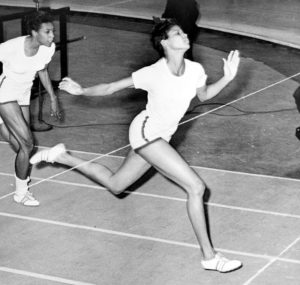
Named as the fastest woman in the world, Wilma Rudolph was not born a runner. She was afflicted with polio as a child; it was not clear that she would walk. With the encouragement of her supportive family, Rudolph did walk and she began to run while in a segregated high school, where she was discovered by the coach at Tennessee State University. At the age of 16, she won a bronze medal at the 1956 Olympics in Melbourne. In 1960, when she won three gold medals at the Rome Olympics (the first American woman to do so), people around the world learned her inspirational story. She later wrote an autobiography which became a TV film. Rudolph also established a foundation to promote amateur athletics. She has been inducted into the National Women’s Hall of Fame.

Growing up in Maine, Joan Benoit (later Samuelson), was a skier. After she broke her leg skiing, she took up running to get back in physical shape and found that she liked it. During high school, she received All-American honors in cross country and track. In 1979, although an unheralded competitor, she won the Boston Marathon, setting an American and course record. In 1983, she won the Boston Marathon again; this time she set a world record. In 1984, the first time that the women’s marathon was included as an Olympic event, she won the gold medal at the Summer Olympic Games in Los Angeles. Samuelson also won the 1995 Chicago Marathon with an American record time. An advocate for life-long physical fitness, Samuelson, when she was fifty years old, participated in the 2008 Olympic trials and completed the marathon in under 2 hours and 50 minutes. In 2009, she ran in the New York City Marathon; in this race her time was also under 2 hours and 50 minutes. She has established a race in Maine in which world class runners compete; the proceeds of this race are donated to charity.

Florence Griffith Joyner, also known affectionately as Flo-Jo, set records in 1988 for the 100 meters and 200 meters that still stand. Joyner began running in track events while in elementary school and won the Jesse Owens National Youth Games twice – at ages 14 and 15. She qualified for the 1980 Olympics but did not compete, due to the U.S. boycott. In 1984, she qualified for the Olympic Games in Los Angeles in the 200 meters and won the silver medal. During the trials for the 1988 Olympic Games, she set records for both the 100 meters and 200 meters. At the 1988 Olympics, Flo-Jo won three gold medals and one silver medal. She set an Olympic record in the 100 meters and the world record in the 200 meters, winning gold in both events. Flo-Jo was part of the 4 x 100 meters relay team that won a gold medal as well as part of the 4 x 400 meters relay team that won a silver medal. In 1995, she was inducted into the USA Track & Field Hall of Fame.

In 1995, Serena Williams became a professional tennis player at age 14, following in the footsteps of her sister Venus Williams. Serena began playing tennis at the age of three and won her first professional tournament in 1999. She has been ranked number 1 in the world and has won 23 Grand Slam tournaments in singles (Australian Open, French Open, Wimbledon and U.S. Open). Serena has won an additional 16 Grand Slam titles in doubles and mixed doubles. Williams has won four Olympic gold medals – one in singles (2012) and three in doubles (2000, 2008, 2012), where she partnered with her sister Venus. In 2016 and 2017, she was the highest paid female athlete in the world. Serena is still on the tennis circuit, coming back after her maternity leave. In 2015, she was the first Black female athlete to be featured by herself on the cover of Vogue magazine. Williams has many interests outside of tennis, including supporting schools in Kenya and appearing in movies and on television. She has multiple clothing lines and also designs jewelry and accessories. Serena and Venus Williams are minority owners of the Miami Dolphins football team – the first Black women to own any amount of an NFL franchise.
These women Olympic athletes, as well as many other women, almost all of whom we have not heard about nor learned about in school, are profiled in our book, Her Story: A Timeline of the Women Who Changed America. Help us by continuing to tell the stories of the women who came before us, on whose shoulders we all stand. Tell young women especially so they understand that they can dream BIG, and then make their dreams a reality.
The post Summer Olympic Athletes In History appeared first on Kalon Women Collective.
3 Exercise Tips to Better Your Mental and Physical Well-Being 4 Aug 2021 6:15 PM (3 years ago)
Mental and physical well-being are equally important and often intertwined, given many people take part in activities that simultaneously enhance both categories of health. However, the everyday demands of life paired with challenges during the pandemic have caused people to de-prioritize their mental and physical well-being.
“There is a symbiotic relationship between mental and physical wellness,” said Dr. Richard Carmona, 17th Surgeon General of the United States. “Supporting both critical aspects of health is equally important but can be difficult, specifically during stressful times like the current pandemic. It’s extremely important for people to look for alternative ways to focus on both body and mind and take active steps toward the pursuit of overall wellness.”
A recent national study by Planet Fitness demonstrates the pandemic’s negative impact toward mental and physical health. Three out of four Americans (77%) reported that at least one aspect of their overall health and well-being had been negatively impacted by the pandemic. A whopping 56% (nearly 138 million Americans) said they haven’t made their mental wellness a priority in the past year while the same percent of the population admit they feel stress and anxiety more than ever before. But fortunately, there is a light at the end of the tunnel, with 92% of Americans whose mental wellness has been impacted by the pandemic reporting they are doing at least one thing to improve it.
While these are concerning results, the great news is the vast majority of Americans are looking to improve their current condition as the pandemic has shed a spotlight on the importance of fitness. Staying active is going to help get everyone on the right path and feeling great about themselves both physically and mentally while also reducing stress. Also when you perform physical exercise, your brain releases a chemical called dopamine, commonly referred to as the “feel good” chemical because of its ability to contribute to your sense of happiness and positive mental disposition.
Planet Fitness’ Head of Health and Fitness Excellence, Teddy Savage, recommends three ways to enhance an existing physical exercise regimen or simply include as part of a new one, which all are designed to better your mental and physical well-being:
1) A stimulated mind is a happy one
Variety is the spice of life and that can be tricky when stuck at home. To keep your mind engaged and your body active, try infusing fun out-of-the-box elements into your normal fitness routine. That could mean downloading a fitness app chock full of exercises, walking in a new neighborhood park or, once you’re able, joining a gym and kick-starting a new fitness adventure with free guidance from a certified trainer.
2) Slow and steady wins the race at the gym
It’s best to start slow and finish strong when exercising, especially with weights or resistance machines. Going light will still allow you to add positive stress to the muscles, while providing the chance to really perfect the form and mechanics of each exercise. This will ultimately create a better environment for muscle growth without causing too much stress on the body.
3) Rest “actively”
Incorporate what is called “active rest” during your cardio or between weightlifting sets. For example, if you’re on the treadmill jogging on an incline, decrease the incline or slow to a fast walk to catch your breath before speeding back up again. Doing so rather than stopping altogether keeps your body working and blood flowing as well as ensuring faster recovery for muscles.
The post 3 Exercise Tips to Better Your Mental and Physical Well-Being appeared first on Kalon Women Collective.
Why a Personal Emergency Response System Is Crucial for Aging in Place 4 Aug 2021 6:09 PM (3 years ago)
With more people than ever choosing to age in place — that is, continuing to live in their own homes — medical alert devices and modifications to make seniors’ homes safer and more accessible don’t have to break the bank. Installing ramps, railings, and ensuring medication adherence are simple steps you can take to ensure your loved one’s comfort as their range of mobility changes with age.
As the needs of those we love evolve, technology has adapted to help allow seniors to continue living independent, confident lives while also providing peace of mind to their families. Gone are the days of medical alert devices that require a working knowledge of technology or are too pricey for the average retiree. Instead, the best senior medical alert systems on the market have accessible, intuitive technology that aid in opening up the worlds of seniors who are choosing to age in place amidst the pandemic and beyond.
Selecting the right personal emergency response device
Beyond living safely, seniors should feel empowered to live confidently. Personal emergency response systems, or medical alert devices, offer those who age in place the autonomy to continue life at home without the need for an around-the-clock caregiver, and the comfort of knowing help is just a push of a button away, should they need it.
Wearing a personal emergency response device can provide an added sense of security and can decrease the anxiety surrounding falling at home. However, the perceived stigma associated with their use may prevent some aging adults from taking advantage of their benefits.
Many medical alert necklaces and devices are easily recognizable as such and do not offer protection outside the home, limiting the self-sufficiency of the wearer. Aging adults may not be prepared to admit that they require additional help, but providing them with a device that is discreet and suits their lifestyle can aid their transition as they begin aging in place.
A device for every lifestyle
For a personal emergency response system that helps inspire confidence, BLACK+DECKER Health presents goVia — the discreet, on-the-go alternative to traditional personal emergency response devices. goVia products include monitoring at-home or on-the-go for those who aren’t ready to stop exploring. The wearable devices are lightweight and can be worn as a wristband, necklace or even clipped onto a belt for protection outside of the home. With location tracking via GPS, cell service and triangulation, aging in place has expanded beyond the four walls of a home.
Freedom to age with autonomy
One in four adults over 65 will fall each year, according to the National Council on Aging, making a personal emergency response system crucial for adults who are aging at home. With five devices to choose from, goVia offers an extra layer of protection for explorers, those homebound, and everyone in between.
Aging in place should not mean sacrificing freedom. Give your loved one the support needed to age independently and help defeat the stigma surrounding personal emergency response systems.
The post Why a Personal Emergency Response System Is Crucial for Aging in Place appeared first on Kalon Women Collective.
How You Can Help Reduce Your Risk of Age-Related Macular Degeneration 4 Aug 2021 6:06 PM (3 years ago)
Creating a tapestry of vivid colors and patterns, Geri Wires, an avid quilter, relies on her sight to create her art. So, in 2007 after her dilated eye exam and speaking with her eye doctor, she was alarmed at the diagnosis of age-related macular degeneration (AMD) at age 64. AMD is one of the leading causes of vision loss among people 50 and older and affects 16 million Americans – more than glaucoma and cataracts combined.
“After my diagnosis, the reality of AMD and its potential effects on my vision became very serious to me,” Wires said. To help manage her condition, Wires began taking Bausch + Lomb PreserVision® AREDS 2 Formula eye vitamins twice daily at her doctor’s suggestion as part of an action plan that includes a healthy diet and regular exercise. PreserVision® AREDS 2 formula eye vitamins contain the nutrient formula recommended by National Eye Institute (NEI) researchers to help reduce the risk of progression in people with moderate to advanced AMD.
AMD is a progressive eye condition caused by degeneration of the part of the retina that impacts central vision. Early-stage AMD often does not present any symptoms or vision changes, as symptoms usually appear gradually over time. In its later stages, AMD can lead to difficulty with daily activities like driving, reading, or recognizing the faces of loved ones, according to the NEI.
New NEI data shows specific vitamin mix can help reduce risk of AMD progression
In 2001, data from the AREDS2 study demonstrated that taking a specific combination of antioxidants and zinc could help reduce the risk of progression of AMD. Most recently in May 2021, results of the 10-year follow-up on the AREDS2 study show that a specific nutrient mix and dosage, known as the AREDS 2 formula, continues to reduce the risk of AMD progression and further clarify the importance of an AREDS 2 supplement as part of a patient’s action plan.
The exact combination of vitamins and minerals in the AREDS 2 formula – vitamin C (500mg), vitamin E (400 IU), lutein (10mg)/zeaxanthin (2mg), zinc (80mg zinc oxide) and copper (2mg cupric oxide) – is difficult to achieve from diet alone, and standard multivitamins or other eye vitamins generally do not contain the same level of nutrients.
Today, Wires continues to take her eye vitamins as part of her overall plan to help manage her condition and visits her eye doctor every six weeks for a check-up.
“I’m involved in a group that helps sew masks for the community and without taking steps to help reduce the risk of progression of my AMD, I may not have been able to help sew more than 1,000 masks at the height of the pandemic,” Wires said. “I’m glad that by working with my eye doctor and following my plan, I’m still able to quilt and enjoy time with my family.”
Reducing your risk of AMD
As people age, their risk of eye-related diseases like AMD increases dramatically, according to U.S. Census data. Smokers, women and those with a family history of AMD are at higher risk of developing AMD.
Over 50? The following lifestyle changes recommended by NEI can help protect your eye health.
1. Quit smoking. Smokers are at higher risk. If you smoke, preserving your vision is a good reason to quit.
2. Stay active. Regular exercise may lower your risk or slow progression of the disease.
3. Safeguard against UV light. Especially if you work outdoors, protect your eyes with sunglasses.
4. Boost your diet. Maintain a healthy diet and take vitamins that contribute to eye health and ask your eye doctor what eye vitamin is appropriate for you.
5. Get regular eye exams. See your eye care provider regularly to help detect minor changes that may otherwise go unnoticed. Eye doctors can check for AMD as part of a comprehensive dilated eye exam. During this painless exam, your doctor will give you some eye drops to dilate (widen) your pupil and then check your eyes for AMD and other eye problems.
To learn more about AMD, visit SightMatters.com.
PreserVision is a trademark of Bausch & Lomb Incorporated or its affiliates.
AREDS2 is a registered trademark of the United States Department of Health and Human Services (HHS).
©2021 Bausch & Lomb Incorporated or its affiliates.
PV2.0074.USA.21
The post How You Can Help Reduce Your Risk of Age-Related Macular Degeneration appeared first on Kalon Women Collective.
Understanding the Warning Signs of Sleep Apnea 4 Aug 2021 6:03 PM (3 years ago)
Sleep is essential for everyone. It’s what allows the body and the mind to recharge at the end of every day. Without sufficient, healthy sleep, the brain and the body cannot function properly, so it’s important to recognize signs that you might not be getting quality sleep.
Nearly 70% of Americans who sleep with a bed partner report that their partner snores while sleeping, according to a 2021 survey by the American Academy of Sleep Medicine (AASM). Many don’t realize that a snore can be more than just a noisy nuisance. Snoring can be an indicator of obstructive sleep apnea (OSA), a sleep disorder that can be dangerous to your health when left untreated.
What is Obstructive Sleep Apnea?
Nearly 30 million U.S. adults have obstructive sleep apnea, which repeatedly causes breathing disruptions during sleep. Currently, there are about 23.5 million obstructive sleep apnea cases that are undiagnosed.
With OSA, the airway repeatedly becomes entirely or partially blocked, limiting the amount of air that reaches the lungs. When this happens, patients may snore or make choking noises. The brain and body experience severe decreases in oxygen flow, causing multiple arousals from sleep during the night. In more severe cases, these arousals can occur several hundred times a night. Individuals may be completely unaware of experiencing these episodes while sleeping.
“While not everyone who snores has sleep apnea, snoring is a warning sign that should be taken seriously,” said AASM President Dr. Kannan Ramar. “If your bed partner snores, or if you’ve been told that you snore, then it is important to talk to a medical provider about screening or testing for sleep apnea. Treatment for obstructive sleep apnea can improve overall health and quality of life.”
Snoring is just one of the symptoms
In the same survey, a quarter of Americans admitted they were not familiar with OSA; nearly half acknowledged they do not know the symptoms of the disease.
The following are five warning signs to be aware of:
Snoring: Snoring between apneas is typically noticed by a bed partner.
Choking or gasping during sleep: When snoring is paired with choking, gasping or silent breathing pauses during sleep, it’s a reliable indicator of sleep apnea.
Fatigue or daytime sleepiness: Excessive daytime sleepiness often occurs because sleep apnea causes numerous arousals throughout the night, preventing your body from getting the high-quality sleep it needs.
Obesity: An adult with a body mass index (BMI) of 30 or higher is considered to be obese and the risk of sleep apnea increases with the amount of excess body weight.
High blood pressure: Between 30 and 40 percent of adults with high blood pressure also have sleep apnea.
Other common symptoms of OSA include:
- Unrefreshing sleep
- Insomnia
- Morning headaches
- Nocturia (waking during the night to go to the bathroom)
- Difficulty concentrating
- Memory loss
- Decreased sexual desire
- Irritability
- Difficulty staying awake, particularly when watching TV or driving
“Delaying treatment for sleep apnea can lead to more serious health problems,” added Ramar. “Fortunately, many of the damaging effects of sleep apnea can be stopped, and even reversed, through diagnosis and treatment by the sleep team at an accredited sleep center, where patients receive care in safe and comfortable accommodations.”
Treating sleep apnea improves quality of life
Sleep apnea is typically treated using continuous positive airway pressure (CPAP) therapy. This therapy keeps the airway open during the night by providing a gentle air stream through a mask worn while sleeping. Using CPAP can improve your overall quality of life by enhancing sleep quality and boosting daytime alertness, concentration and mood. It can also decrease medical expenses and improve both your brain and your heart health. Alternative treatments include positional therapy, oral appliance therapy and surgery.
For more information or to find an accredited sleep center, visit sleepeducation.org. To access the AASM 2021 Sleep Prioritization Survey, visit aasm.org/about/newsroom/.
The post Understanding the Warning Signs of Sleep Apnea appeared first on Kalon Women Collective.
How to Protect Your Hearing When Life Gets Loud 4 Aug 2021 5:58 PM (3 years ago)
Sound surrounds you every day. Traffic, TV, sporting events, and music are just a few of the sounds you know so well. Entertaining sounds bring pleasure, and warning sounds (like a car horn) can help you stay safe. But some sounds can damage your hearing—sometimes instantly, and often permanently.
Results from hearing tests suggest that nearly one in four U.S. adults ages 20 to 69 years may have noise-induced hearing loss in one or both ears. One way noise-induced hearing loss happens is when tiny hair-like structures (called “stereocilia”) that sit on top of sensory hair cells in your inner ear are damaged by noises that are too loud and/or last too long. When the stereocilia are damaged, they can’t accurately relay information about sound to your brain.
The louder the sound, the more damage it can cause to your ear, and the faster the damage can happen. Hearing loss may not be noticeable at first, but it can get worse over time. For example, you may notice words sounding muffled and harder to comprehend.
The good news is that noise-induced hearing loss can be prevented. Recognizing noise hazards can help you protect your hearing—and help you safeguard your family’s hearing health.
The best way to protect your hearing and prevent noise-induced hearing loss is to avoid loud sounds and noisy activities whenever possible. You can also turn down the volume on the TV and on music players and move away from the noise when you can. When loud noise is unavoidable, use earplugs or protective earmuffs to protect your hearing.
The National Institute on Deafness and Other Communication Disorders (NIDCD), part of the National Institutes of Health, offers helpful tips for protecting your hearing. The video Hearing Protection: How to Use Formable Earplugs, shows the right way to insert inexpensive foam earplugs. The video Hearing Protection: How to Use Pre-Molded Earplugs, can help you correctly use pre-molded earplugs, which are great for concerts and other times you want to protect your hearing without losing sound quality.
Protective earmuffs are another easy-to-use type of hearing protector, but they might not work as well for people who wear glasses or have hairstyles that create gaps where sound can enter the ear. Protective earmuffs may be a good choice for protecting children’s hearing because they can be easier to use than earplugs.
Wearing protective earmuffs and earplugs together can reduce sound even more—a smart choice for very noisy environments like woodshops and sport-shooting events.
It’s easy to buy ear protection because many stores, especially home and garden centers, now sell both earplugs and protective earmuffs. Both types of protection are also easy to find online.
To help identify harmful sounds, use a free decibel meter app to measure the sound levels in your environment. The Sound Level Meter app was developed for iOS devices by the National Institute for Occupational Safety and Health at the Centers for Disease Control and Prevention.
Learn more about how to protect your hearing from the NIDCD’s Hearing Protectors fact sheet. Keep your hearing healthy and enjoy all the sounds of life.
The post How to Protect Your Hearing When Life Gets Loud appeared first on Kalon Women Collective.
Three Health Strategies to Help You Swing Into Summer 3 Jul 2021 7:53 AM (3 years ago)
With summer’s arrival and the days getting warmer and longer, many Americans may be rededicating themselves to getting outside and focusing on their fitness.* This may be especially important after so much time spent inside due to the COVID-19 pandemic, which contributed to unwanted weight gain for 61% of Americans.
“Whether you are ready to return to public fitness centers or are pursuing an at-home workout routine, the same priorities may remain key: daily exercise, proper nutrition and sufficient sleep,” said Dr. Anne Docimo, chief medical officer, UnitedHealthcare.
To help with those efforts, here are three health strategies to consider to help make health a priority this summer and year-round.
Round out your home workout routine. While public gyms and group exercise classes may have appeal for many people, working out at home may have several advantages. At-home exercise is typically less expensive than a gym membership, which may also help improve your financial fitness. Exercising at home may provide greater flexibility and convenience when incorporating a workout into a daily routine, while offering a more private experience. To help make the most of your at-home exercise efforts, consider investing in resistance bands, which generally are an inexpensive, space-saving option that may help with pre-workout warmups and options for strength training. A pair of adjustable-weight dumbbells may offer versatility, enabling scalable resistance to help improve your strength. Finally, heart rate monitors or activity trackers may help you evaluate performance during individual workouts and over time.
Make movement a priority. Even if you don’t have a limited or full gym setup at home, it is crucial to still stay active and not fall into the trap of participating only in sedentary activities, such as binge-watching the latest TV series or movies. Consider taking short walks frequently throughout the day, aiming for six separate “mini-walks” of at least 300 to 500 steps. To help enhance cardiovascular fitness, consider at least one 30-minute “brisk walk” of at least 2,000 to 3,000 steps each day. To help build endurance, consider working toward 8,000 to 10,000 aggregate steps per day. Moving more and sitting less may help boost the immune system, ease joint pain and curb cravings for high-sugar foods that may contribute to inflammation and disease.[1]
Identify intrinsic and extrinsic motivators. In general, people may be motivated by a combination of intrinsic factors, such as wanting to maintain a healthy weight, and extrinsic factors, such as financial rewards. Daily exercise may offer several intrinsic motivators, given research has shown consistent movement may help ward off depression and prevent issues like heart disease. To potentially earn incentives for pursuing healthier habits, it’s important to note that a majority of U.S. employers offer well-being programs, many of which include financial rewards for healthy activities such as walking, going to the gym or meeting certain health benchmarks (e.g., cholesterol levels, body mass index or non-nicotine use). Importantly, some health plans offer access to wearable devices that may enable people to earn more than $1,000 per year in financial incentives for meeting certain daily activity goals.
If you need external motivation, this summer you can go to UHCStepUp.com and sign the pledge to make health a priority. This may enable you to become eligible for a chance to win one of more than 100 fitness-related prizes**, while joining golf star Rory McIlroy in breaking a GUINNESS WORLD RECORDS title for the most pledges for a health campaign in one month (June 15 – July 15, 2021) and raising $60,000 for the Boys & Girls Clubs.
title for the most pledges for a health campaign in one month (June 15 – July 15, 2021) and raising $60,000 for the Boys & Girls Clubs.
Following these tips may help you swing into summer and make health a priority, while encouraging healthy habits that may eventually translate to meaningful improvements.
* The information provided is for general informational purposes only and is not intended to be, nor should be construed as, medical advice. Check with your doctor to determine what activity level is right for you.
** Participation in any UnitedHealthcare product or program is not a requirement to participate in the sweepstakes.
Boys & Girls Clubs and Guinness World Records are not sponsors of this promotion.
All trademarks are property of their respective owners.
[1] Harvard University, 2016, health.harvard.edu/newsletter_article/Inflammation_A_unifying_theory_of_disease
The post Three Health Strategies to Help You Swing Into Summer appeared first on Kalon Women Collective.
The Perfect Sips, Trips and Tips for a Satisfying Summer Season 3 Jul 2021 7:45 AM (3 years ago)
After a year like no other, everyone is seeking ways to celebrate the summer and enjoy those little things that make such a big difference. You don’t have to be a wine expert to know that the right wine or cocktail for the occasion can make any get-together truly outstanding. Whether you’re hanging out with friends around the grill or embarking on an epic road trip, here are tips for relearning how to enjoy the moment.
1. Stemware for everywhere
Or better yet — stemless wineglasses! Find unbreakable, shatterproof, insulated wineglasses online that are just perfect for your next patio party, beach day or glamping trip. There are plenty of choices for insulated tumblers and coolers to keep wine and other beverages chilled and safe, no matter where you go.
2. Choose wines that are bright, light and just right
Whether relaxing with friends on the beach or around your backyard fire pit, enjoy a light, refreshing white wine that’s fragrant, vibrantly fruity and crisp, like the 2020 Wairau River Sauvignon Blanc from New Zealand. The vineyards are planted along the Wairau River’s edge, creating quality wines to help you enjoy the moment.
3. Keep cool
When you’re enjoying an outdoor get-together, you’ll want to prevent wine from getting too warm — even reds. One trick is to store wine bottles in a cooler or a bucket filled with ice, salt and water. The salt in the water helps bring the freezing point of water below 32 degrees Fahrenheit.
4. Inspire your inner mixologist
Did you know wines can be used to create refreshing summer drinks? Add seasonal fruit or herbs to transform a favorite wine into a cooling cocktail.
Create your own Moscato Moscow Mule with this easy recipe:
Ingredients
- 5 ounces Seven Daughters Moscato
- A few ounces club soda
- Lime
- Ginger ale
Instructions
Mix Seven Daughters Moscato and club soda.
Add squeeze of lime and top with ginger ale.
Garnish with lime wedge.
Makes 1 serving.
5. Rediscover wine country
When you’re itching to get away from it all, why not sip your way through a tasting flight at a winery? With over 11,000 wineries across the U.S., you have plenty to choose from. You can even find hidden gems in parts of well-known Napa, like the Maxville Winery in the Chiles Valley. This unique winery started as a summer camp, with its first grapevines planted back in 1974. Today, you can visit the winery and sample the Estate Maxville Cabernet Sauvignon, Cabernet Franc, Sauvignon Blanc, Red Blend and Petite Sirah.
6. Get paid to make history with Federalist Wines’ “Cabinet of Summer”
The Federalist has opened applications for its first ever “Cabinet of Summer,” giving three lucky fans the opportunity to receive $10,000 to make history as “secretaries” of summer activities. Each winner will use their reward to master a chosen craft by having the biggest, boldest summer since 1776:
The Secretary of The Outdoors has a passion for adventure and enjoys hiking and camping. They’ll have the opportunity to explore National Parks or raft down America’s mighty rivers — enjoying their favorite Federalist wine along the way.
The Secretary of Athletics is an ultimate sports fan equally passionate about backyard whiffle ball as cheering their favorite pro team — with bonus points for bold game-day rituals involving wine and snacks. They’ll have a once-in-a-lifetime chance to visit historic baseball stadiums this summer.
Secretary of The Grill is the ultimate host, spatula in one hand, glass in the other. They could be a neighborhood grillmaster or top wine-pong player — and $10,000 can throw a heck of a barbecue.
Through July 6, apply at FederalistWines.com/CabinetOfSummer by sharing how you plan to make history if chosen as a Secretary of Summer. Propose how you would use the prize, including an example of your “epic summer itinerary,” plus a link to a photo/video on your Instagram page illustrating your content creation skills. To be eligible, fans must reside in the U.S. and be 25 years of age or older. Winners will be announced through The Federalist Wines’ Instagram page July 9. See FederalistWines.com/CabinetOfSummer for official rules and regulations.
All wines can be found nationwide and can be purchased at select retailers, on Wine.com and through Uncorked.com.
The post The Perfect Sips, Trips and Tips for a Satisfying Summer Season appeared first on Kalon Women Collective.
Awesomely American: Must-Have Ingredients for Summer Celebrations 3 Jul 2021 7:42 AM (3 years ago)
Summer is the season of patriotism. There’s no better way to celebrate America during this time than with fresh, flavorful food and memorable gatherings. There are endless ways to relax and pay tribute to our nation with family and friends, from Flag Day beach parties to Memorial Day garden picnics to Fourth of July barbecues.
Nothing beats the flavors of summer, so whether you’re hosting a holiday or simply getting people together for some warm weather fun, don’t forget to stock up on the very best ingredients to create recipes that will leave everyone asking for seconds. Here are five must-haves for your next summer get-together:
Fresh fruit
Often referred to as “nature’s candy,” seasonal fresh fruit is versatile for any summer gathering. Visit a farmers’ market or produce stand to buy local and enjoy regional flavors picked at the peak of freshness. Whether it’s sweet strawberries, juicy peaches, plump melons or another summer fruit, stock up and enjoy. Once you’ve brought home your bounty, cut it up to make fruit salad, fruit kabobs or even chilled fruit soup. It’s also great to have on hand to elevate your summer baking for pies, tarts and cakes.
Better butter
There’s butter, and then there’s better butter. High-quality butter brings out the best in your summer cooking and is a must-have for baking, basting, barbecuing and more. For sensational summer creations, stock up on Minerva Dairy butter, perfected over six generations of family ownership. With 85% butterfat, it makes for a richer, creamier and more flavorful base ingredient for summer essential recipes. Made in the USA, Minerva Dairy is America’s oldest family-owned creamery, using farm-fresh milk from pasture-raised cows to create slow-churned, small batches that maintain that flavor and texture, making a higher quality product. Learn more at minervadairy.com.
Corn on the cob
The quintessential summer side dish, corn on the cob is delicious whether steamed, boiled or grilled. Keep it hot and serve it immediately after cooking it, or keep it warm in a slow cooker or insulated cooler. Don’t forget, classic American corn on the cob isn’t complete without high-quality salted butter to bring out the sweetness of each kernel. If you want to try something new, add garlic herb butter as an option to guests.
Refreshing drinks
Few things are more satisfying than sipping ice-cold lemonade on a hot summer day. Make a batch in a pitcher or serving dispenser and keep chilled with ice cubes. Add festive color by placing red and blue fruits, like raspberries and blueberries, directly into the container or use as a garnish on glasses. Another option is to freeze a berry into each section of an ice-cube tray so when you add them to a drink, you get a splash of color in each frozen cube.
Red, white and blue desserts
A colorful dessert that incorporates the hues of the American flag not only satisfies the sweet tooth, but provides an eye-catching focal point on a table or buffet. Try this recipe and make your summer celebration even sweeter:
Berry Upside Down Cake
Recipe and Images Courtesy of 2 Cookin’ Mamas
Prep Time: 70 Minutes
Servings: 10
Ingredients:
Topping:
- 2 tablespoons butter, melted
- 1/3 cup light brown sugar
- 1 cup blueberries
- 1 cup strawberries, diced
Cake:
- 1/3 cup Minerva Dairy unsalted butter
- 1/2 cup sugar
- 1/4 cup light brown sugar
- 1 large egg
- 1 teaspoon vanilla extract
- 1/3 cup vanilla yogurt or sour cream
- 1/3 cup vanilla coffee creamer
- 1 1/2 cups flour
- 1 1/2 teaspoons baking powder
- 1/2 teaspoon salt
Directions:
- Preheat oven to 350 degrees.
- Grease 10″ round cake pan with butter or nonstick spray.
- Cut parchment paper to fit bottom and place in pan.
Topping:
- Melt butter and pour into bottom of cake pan.
- Sprinkle light brown sugar over butter evenly.
- Place berries in your preferred design, such as spirals or rows. Set aside.
Cake batter:
- In mixing bowl, cream butter and both sugars about 2 minutes.
- Add egg and extract and mix well.
- Continue beating as you add yogurt/sour cream and creamer.
- Combine flour, baking powder and salt in small bowl. Add to batter and mix just until blended.
- Spoon batter gently over fruit so as not to dislodge the pattern. Smooth carefully.
- Bake 50 minutes. Check at the 35- or 40-minute mark to see if the cake is getting too brown. If it is, cover with aluminum foil for remainder of baking time. Note: Don’t worry if it sticks to the cake a little, as the top will become the bottom when it is done.
- Test to make sure the cake is done by inserting a toothpick in center. If it comes out mostly clean with just a few crumbs, the cake is done.
- Remove from oven and place on wire rack to cool for 10-15 minutes.
- Place serving plate on top of pan and, holding sides of cake pan and dish, flip over so fruit is on top. Gently lift off cake pan and allow to cool.
Optional: Prior to serving, decorate with whipped cream. You can also add some additional berries or a sprig of mint, if desired.
Note: This cake is best served 1-2 hours after baking and before refrigerating. The cake will keep three days in the refrigerator. Freezing is not recommended.
For more recipes ideas, visit minervadairy.com/recipes.
The post Awesomely American: Must-Have Ingredients for Summer Celebrations appeared first on Kalon Women Collective.
Women In History – Female Sculptors 3 Jul 2021 7:38 AM (3 years ago)
Did you know that a woman was the youngest artist to ever get a commission for a statue from the U.S. Government? Although women sculptors with professional careers were rare until recently in our country’s history, that doesn’t mean they were non-existent. Let’s learn about some of these artistic pioneers.
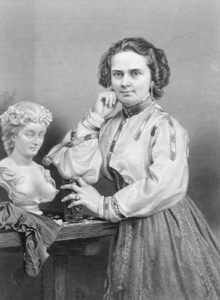
Harriet Goodhue Hosmer is considered the first American female career sculptor. She studied anatomy with her physician father – a very unusual occurrence at this time in our country’s history; this laid a foundation for her sculpting. After studying modeling in Boston, she went to Rome, Italy, where from 1853-1860 she was able to study sculpting using live models. She associated with other artists and writers, including Vinnie Ream and Edmonia Lewis. At a time when women were not educated in the same manner as men and when women had few rights, Hosmer said “I honor every woman who has strength enough to step outside the beaten path when she feels that her walk lies in another; strength enough to stand up and be laughed at, if necessary.” Hosmer pioneered a technique to convert limestone into marble and devised new sculpting processes. Her sculpture, Puck and Owl, is featured on the Boston Women’s Heritage Trail.
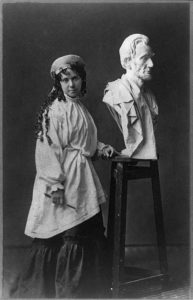
The first woman and the youngest artist to get a commission for a sculpture from the U.S. Government, Vinnie Ream Hoxie not only sculpted the full-size status of Abraham Lincoln that stands in the U.S. Capitol rotunda; she also built the first major monument to a U.S. Navy officer that was in Washington, DC. Further, she designed the first free-standing statue featuring a Native American (Sequoyah) that was placed at the Capitol in Statuary Hall. Hoxie received the commission for the Lincoln sculpture after the Civil War, in 1866. The statue was unveiled in 1871, when she was 23 years old.
Previously the talented Hoxie, who wrote, sang and sculpted, had worked for the Federal Government as a clerk in the Dead Letter Office, where she was one of the first women to be so employed. She helped wounded soldiers write letters; she also gave concerts in hospitals and churches during the Civil War. Hoxie discovered her love of sculpting when she was in her teens. Buried in Arlington National Cemetery, Hoxie’s talents were celebrated through the issuance of a U.S. postage stamp featuring her sculpture of Sequoyah. Vinita, Oklahoma is named in her honor.

Sculptor Edmonia Lewis’ heritage is both African American and Native American. It is thought that she was born in upstate New York. After her education at Oberlin College, she taught sculpture in Boston and received acclaim in 1864 with her bust of Colonel Robert Shaw. Colonel Shaw is remembered for his leadership when he died leading the all-black 54th Massachusetts Regiment during the Civil War. Lewis moved to Rome, Italy with the proceeds from the sale of this sculpture, where she set up a studio.
Lewis’ works in Rome primarily followed religious and classical themes. Her 1867 work, Forever Free, shows a black man and a black woman emerging from slavery. Other pieces reflect her Native American roots. Her classical pieces included busts of American leaders such as Ulysses S. Grant and Abraham Lincoln. Her sculpture, Death of Cleopatra, received critical acclaim at two showings in 1876 and 1888. For many years, both Lewis and her art were lost to history and forgotten. Happily, that is no longer the case. Forever Free is among the pieces of her work that are now permanently housed at the Howard University Gallery of Art. The Smithsonian American Art Museum permanently houses other pieces of her work, including Death of Cleopatra.

One of the most important figures in twentieth century sculpture, Louise Nevelson emigrated to the U.S. from Russia with her family, in the early 1900s. She decided to study sculpture around the age of nine after seeing a plaster cast of Joan of Arc. Nevelson began art lessons in New York City full time in 1929 and later studied in Germany as well. Her first solo exhibition occurred in 1941. Although she often struggled financially, Nevelson persisted and in 1958 was featured on the cover of Life magazine. Her sculptures by that time were massive in scale, often made of wood or found objects, and monochromatic. In 1967, the Whitney Museum in New York City, which had purchased some of her sculpture, hosted a retrospective of her work including her lithographs and sculpture. Her childhood home in Maine is now an art museum featuring her works. Her sculptures have been featured on U.S. postage stamps.

Born in Germany, Ruth Duckworth left the country in 1936 to escape Nazi restrictions; she then studied art in England. Wanting to study each of drawing, painting and sculpting (as Michelangelo had done all three), she became particularly interested in ceramics. In 1964, she was offered a teaching post at the University of Chicago, and eventually settled permanently in the U.S. Her primary art form became abstract ceramics, many pieces of which are untitled. A retrospective of her work opened in 2005 at the Museum of Arts and Design in New York City. A documentary has been made on her life.

Known both for her sculpture and her land art, architect Maya Lin won the competition for the design of the Vietnam Veterans Memorial in 1981, while she was still an undergraduate student at Yale University. Her design was selected from more than 1,400 entries. Although her memorial sculpture was highly controversial in the 1980s, in 2007 the Vietnam Veterans Memorial was named #10 on the list of America’s Favorite Architecture. Today it is considered one of the influential memorials built after World War II.
Lin’s body of work consists of memorials, public and private buildings, landscape and sculpture. She designed the Civil Rights Memorial in Montgomery, Alabama (1989). Her work reflects significant environmental awareness; she focuses on the relationships that people have with their environment. Much of her recent work makes a significant statement as she concentrates on global warming, endangered bodies of water and animals faced with extinction. Lin has been inducted into the National Women’s Hall of Fame.
These women sculptors, as well as many other women, almost all of whom we have not heard about nor learned about in school, are profiled in our book, Her Story: A Timeline of the Women Who Changed America. Help us by continuing to tell the stories of the women who came before us, on whose shoulders we all stand. Tell young women especially so they understand that they can dream BIG, and then make their dreams a reality.
The post Women In History – Female Sculptors appeared first on Kalon Women Collective.
Staying Fit In Retirement Can Also Reduce Health Care Costs 3 Jul 2021 7:15 AM (3 years ago)
It’s no secret that staying physically active supports overall well-being, especially for older adults. From reducing risks of certain conditions like heart disease and diabetes to minimizing injury and helping maintain independence, exercise and staying fit is essential to supporting health and wellness as you age. Another noteworthy but often unrecognized benefit of regular exercise is that it improves overall health, which can result in lower healthcare costs.
Improved health, lower health care costs and reduced hospital stays are some of the benefits enjoyed by active seniors, according to a recent nationwide study by Avalere Health and Tivity Health, a national provider of senior fitness, nutrition and healthy lifestyle solutions, including SilverSneakers, a community fitness program designed for older adults. The study compared new SilverSneakers participants and closely matched non-participating Medicare Advantage beneficiaries.
So how much are healthcare costs reduced by participating in this program? The study’s findings showed the total cost of medical care for participants to be 16% lower than for non-participants and total annual average health expenses among participants to be $4,463 compared to $5,303 for non-participants. That can make a big difference, especially for people with fixed incomes.
Part of this reduction in costs includes fewer visits to the hospital, which can be expensive. After starting the program, participants experienced a significant 42% fewer hospital stays and 18% fewer ER visits compared to Medicare Advantage non-participants. Length of stay for hospitalizations was also significantly shorter for participants: 4.4 days compared to 5.8 days for non-participants.
“This research shows that seniors who are regularly engaged in more healthy behaviors enjoy improved health outcomes and lower health care costs compared to those who do not incorporate exercise in their daily routine,” said Julie Logue, fitness expert and senior trainer at Tivity Health. “More than just exercise, the impact of senior fitness is also emotional and social, providing older adults an opportunity to make meaningful connections with others.”
Logue believes every senior can support their well-being and save on health care costs by being physically active.
She recommends the following tips to keep in mind when starting an exercise routine:
Talk with your doctor: Before you try a new fitness routine or take a class, speak with your doctor to make sure it’s a good fit for your health needs. You can typically reach out through your clinic’s nurse triage line or through a telehealth appointment so you can get insight without an in-person visit to the doctor’s office.
Listen to your body: Whatever activity you decide to do to stay physically active, start slow and increase length or intensity as you build endurance. Any movement is better than no movement, so be proud of your efforts. Listen to your body and when you need to rest or take a break, do what feels right.
Research senior programs: Fitness programs focused on the needs of older adults help position you for success while also connecting you in community or virtually with likeminded people. SilverSneakers is a national fitness membership program that offers fitness classes designed for seniors at over 15,000 locations nationwide including a FLEX network outside of a traditional fitness center such as parks, medical centers and community centers.
Check virtual options: Not everyone is comfortable with indoor fitness, so consider online alternatives. Members have access to more than 13,000 instructor-led live classes each month as well as over 200 classes in our On-Demand library.
Check eligibility: Some health plans offer options for low-cost or no-cost fitness programs. For example, SilverSneakers is available at no cost for adults 65 and older through select Medicare plans. Visit silversneakers.com to verify eligibility.
“Improving health and combating social isolation and loneliness are significant benefits of senior fitness, the measurable reduction in health care costs can’t be ignored,” said Logue. “There are a variety of programs to suit all interests, abilities and lifestyles to help seniors find safe, enjoyable and convenient ways to get moving today.”
The post Staying Fit In Retirement Can Also Reduce Health Care Costs appeared first on Kalon Women Collective.
Back-to-Work Blues: Anxious About Returning to Your Cubicle? 3 Jul 2021 7:09 AM (3 years ago)
While everyone’s lives were upended this past year, they’re about to be turned upside-down again. Vaccinations are underway, and companies nationwide are making plans to bring employees back to the office.
Some workers may welcome the change after spending over a year at home, but many now prefer working in their “COVID caves.” Some employees have found they are more productive at home, and better able to find a work-life balance. For many, the idea of having to leave home and return to their cubicles is evoking feelings of genuine dread, anxiety — or even panic.
A recent survey by the American Psychological Association found that nearly half (49%) of adults are uneasy about the return to in-person interactions, and even 48% of those who are already vaccinated still feel uncomfortable about interacting with others.
While one person may be excited and enthusiastic about returning to the workplace, another may feel nervous. Some miss the social scene, but others don’t enjoy water cooler chitchat or after-work happy hours. These differences can be attributed to numerous factors:
- Environment (your work conditions)
- Lifestyle (your personal challenges and needs)
- Past experiences
- Genetic makeup
If you’re suffering from anxiety or stress about returning to the office, this is a good time to be proactive about your own mental health. Fortunately, there are positive steps you can take to support your physical and mental well-being throughout these challenging times.
Here are tips for anyone struggling right now:
1. Prioritize basic needs
- Eat well — Don’t skip meals or rely on less healthy options when stressed.
- Get some exercise — Find ways to move every day, even just for a walk around the block.
- Get enough sleep — Turn off gadgets to unwind before bed.
2. Do a personal inventory to discover your predispositions
Genetics plays a big role in your feelings and attitudes toward work. Using a groundbreaking test called the Genomind® Mental Health Map , you can find out if you are predisposed toward certain mental health traits. These results can provide insights into understanding your thoughts and feelings about going into the office, as well as other aspects of your life.
, you can find out if you are predisposed toward certain mental health traits. These results can provide insights into understanding your thoughts and feelings about going into the office, as well as other aspects of your life.
The Genomind Mental Health Map provides an expert starting point, empowering you to take action toward better mental health and wellness. The test provides 7 extensive online reports containing numerous new insights and resources for sustaining and improving your mental wellness. Your results will include a robust action plan based on your genetics, plus tools and recommendations from advocacy groups including the National Alliance on Mental Illness, Mental Health America, the Depression and Bipolar Support Alliance, the American Lung Association and others.
This cheek swab DNA test, which you can get without a prescription, helps you learn how you are predisposed to feel and behave across 7 Core Genetic Mental Health Capabilities :
:
- Stress and Anxiety
- Mood
- Focus and Memory
- Sleep
- Eating Behavior
- Social Behavior
- Habits and Substance Use
One of the predispositions identified is a heightened stress response. Individuals with that predisposition may have a more pronounced elevation of stress hormones. If this is true for you, it may explain why you experience heightened anxiety about going back into the office.
“Learning about your own genetic predispositions can be a positive step toward understanding yourself and taking control over your own mental health,” says long-time Genomind clinician Debra Bjork, DO, Palmetto Counseling Associates. “Discovering how you are likely to respond to stressful or challenging circumstances can help you determine a course of action to support your own mental health.”
Interested in learning more about your genetic predispositions? Visit MentalHealthMap.com.
3. Seek professional help
If you’re feeling especially anxious or down, it may be a good idea to make an appointment to talk to a mental health professional.
4. If you take medications, but are still struggling with mental health issues, consider talking to your provider about pharmacogenetic testing
Psychiatric medication is often prescribed on a trial-and-error basis, with practitioners monitoring each patient’s response before adjusting medications or doses. This process often leads to patient frustration and makes the condition worse before finding the optimal treatment.
The Genomind® Professional PGx Express , however, combines the science of pharmacology and genomics (i.e., pharmacogenetics) to help your healthcare provider personalize your treatment plan.
, however, combines the science of pharmacology and genomics (i.e., pharmacogenetics) to help your healthcare provider personalize your treatment plan.
This advanced pharmacogenetic test looks at 24 genes related to mental health treatment across 130+ mental health medications and 10+ conditions. This can help your provider understand:
- Medication Efficacy or Risk — Identify medications and supplements that may be more or less risky
- Dosage — Personalize dosing based on the individual metabolism profile
- Gene-Drug Interaction Guidance — Identify potentially harmful interactions based on your patient’s genes or other medications they may be taking
“Because of pharmacogenomic testing I can make good decisions not only for better medication choices but can recommend lifestyle changes and supplements that will help,” says Dr. Debra Bjork, DO. “Pharmacogenomics gives me a unique perspective that I would not have otherwise. I have an intimate knowledge of the patient that helps form the therapeutic relationship necessary for recovery.”
This test requires a prescription from your healthcare provider. Get started today.
The post Back-to-Work Blues: Anxious About Returning to Your Cubicle? appeared first on Kalon Women Collective.
5 Eczema Body Care Tips From a Trusted Top Dermatologist 3 Jul 2021 7:01 AM (3 years ago)
As summer approaches, it’s time to get outside and bask in the warmth and sunshine. But it’s not easy to bare your body when you have eczema. Those with eczema-prone skin know the signs and symptoms — the itchiness, redness and dryness that indicates a flare-up. Nothing can be more irritating, especially during summer months when you want to get out and show a little more skin.
Eczema is more common than you may think. According to the National Eczema Association (NEA), around 31 million people in America live with eczema, and one in 10 will develop eczema during their lifetime. The NEA cites a recent study that surveyed adults with moderate to severe eczema and found that nearly 86% reported daily itching. These symptoms can affect your comfort during the day, interrupt your sleep at night and even have a negative impact on your mental well-being.
“While some find their eczema is less problematic in the summer, for others, high temps and outdoor activities can cause eczema flare-ups,” said board-certified dermatologist Dr. Sheila Farhang. “Revamp your body care routine to adapt to the changing seasons. I recommend products made with dermatologist-recommend ingredients for long-lasting hydration to improve the look and feel of dry skin.”
Here are Dr. Sheila’s tips to help get you ready to bare that bod in time for summer.
1. Go easy on the showers
It’s natural to want to shower more frequently in the summertime. But if you’re not careful, over-showering can lead to dry, irritated skin. Take shorter, cooler showers — and avoid soap. Instead, choose a body wash that’s both gentle on your skin AND provides long-lasting hydration. Olay Body’s new Dermatologist Designed Collection is designed for people with sensitive skin. It’s made with dermatologist-recommended ingredients to address specific dry skin concerns, like Olay’s Soothing Body Wash with Oat Extract for eczema-prone skin, which delivers soothing hydration, leaving dry skin with long-lasting relief, and has been awarded the Seal of Acceptance from the National Eczema Association.
from the National Eczema Association.
2. Protect your skin from the sun
Skin health experts agree that sunscreen is an essential tool in your summer body care arsenal. The American Academy of Dermatology recommends using sunscreen with SPF 30 or higher that provides broad-spectrum protection (against UVA and UVB rays) for any exposed skin — even on cloudy days. The National Eczema Association further recommends choosing a sunscreen that is alcohol free with mineral-based ingredients like titanium dioxide (TiO2) and zinc oxide (ZnO). Remember to reapply as directed or as recommended by your dermatologist.
3. Keep it cool
Cooling towels, breathable, loose-fitting or moisture-wicking clothing, and a wide-brimmed hat can help keep you cool physically, but did you know keeping it cool mentally is important too? Stress is a common eczema trigger, so consider mindful meditation, deep breathing, a good night’s sleep or some self-care to help lower stress and the potential for a flare-up.
4. Moisturize your skin while it’s damp
I love this tip! Moisturize immediately after showering, or better yet, before you even leave the shower. Moisture can evaporate from skin’s surface within a few minutes of bathing, and managing moisture is key for eczema-prone skin. Look for rinse-off body conditioners made with the #1 dermatologist-recommended moisturizing ingredient, petrolatum, for long-lasting hydration.
5. Hydrate from the inside to nourish the outside
Whether you’re lounging in the shade with your sun-protective gear or you’re staying active with outdoor activities, be sure to drink plenty of water to keep your skin hydrated. Limit sugary and alcoholic beverages since these can be dehydrating.
Looking to refresh your body care routine for summer? Check out more ways to prepare to be bare at Olay.com.
The post 5 Eczema Body Care Tips From a Trusted Top Dermatologist appeared first on Kalon Women Collective.
Long COVID Patients Need Connection and Social Support 3 Jul 2021 6:58 AM (3 years ago)
The COVID-19 pandemic has had more impact on the world than could have been imagined. One unexpected impact is the long-term symptoms some people experience for weeks or months after recovering from the disease, a syndrome called long COVID. Researchers estimate 10% to 30% of people who contract COVID-19 develop long COVID after recovering from the disease, with more women reporting lasting symptoms, according to JAMANetwork.com.
Those suffering from long COVID experience ongoing combinations of symptoms such as fatigue, shortness of breath, body aches, coughing, joint pain, chest pain, intermittent fever, difficulty concentrating, headaches and even continued loss of taste and smell. Others also report the mental impacts of prolonged symptoms, which include depression, anxiety, changes to their mood and sleep, and a mental “brain fog” that won’t lift. In all, people suffering with long COVID can have up to 200 symptoms.
Dr. Archelle Georgiou, an author and expert in consumer healthcare, said that minimizing symptoms and the people who are experiencing long COVID is another unfortunate stage in this pandemic. Understanding that long COVID is a real syndrome, should be treated by experts, and is not imagined may be a relief for some who are suffering with the ongoing effects of the virus.
While the number of infected people who will develop long-lasting symptoms is unclear, what is true is those with long COVID can be old, young, healthy or those with chronic conditions. Although many experiencing prolonged symptoms of COVID-19 do not require hospitalization, the ongoing symptoms still have a major impact on their daily lives, livelihood and, of course, health. A recent COVID Symptom Study of more than 3,700 people with long COVID in 56 countries found that more than half were not able to work full time because of their ongoing symptoms. With symptoms varying from day to day, individuals can feel isolated — alone on an unpredictable journey.
The pandemic has revealed how truly important connecting and seeking social support from your family and friends is as you go through challenging times. Suffering from ongoing symptoms of COVID-19, like any other health journey, can be difficult to endure alone. Access to information and support is a critical factor in the path to healing for those experiencing long COVID-19. There are many resources to read online, however having support from others and a sense of community are also very important. Among the places that provide resources, CaringBridge understands the importance of helping people connect with family and friends during personal health journeys and has developed a new Long COVID Support Center, to keep people up to date with the latest medical research studies, links to support groups, information on finding and accessing post COVID care centers, and advice and opportunities to connect with other users experiencing ongoing COVID-19 symptoms.
Connecting with other long COVID patients in a virtual community is an important way to stay abreast of new health information and a way to get emotional support as you navigate your health journey. Finding social support and connection is important considering those who are experiencing long COVID or long-lasting symptoms are reporting a rise in sense of isolation, according to a 2020 study.
“Research has shown listening to other people’s stories can improve both mental and physical health. Sharing your story is empowering and liberating and helps not only yourself but others through creating empathic connections and supportive audiences,” said Georgiou.
In the presence of the unknown of long COVID, love and support can be a lifeline. According to a study by the Robert Wood Johnson Foundation, social support is by far the most important factor for population health outcomes, with 40% of population health outcomes being determined by social support. The power of meaningful connections is real, and the support of a community is crucial as long COVID patients continue through their health journey.
The post Long COVID Patients Need Connection and Social Support appeared first on Kalon Women Collective.
4 Foods to Fuel Any Fitness Routine – Plus Spanish Tortilla Recipe 5 Jun 2021 6:41 AM (3 years ago)
As the country is opening back up and the summer months approach, maintaining health and wellness is top of mind for many. Getting up and moving your body regularly is an important aspect of healthy living, but it can be challenging to muster up the energy to kick off a new exercise plan. Fortunately, there are a variety of wholesome, nutritious foods that provide essential vitamins and nutrients to fuel any fitness routine, no matter the skill level.
Registered Dietitian, Nutritionist and Founder of MPM Nutrition Marissa Meshulam provides her expert recommendation on which foods to work into your meal plan to support a healthier, more active lifestyle:
“Many pantry and refrigerator staples provide ample nutrition while giving your body what it craves,” says Meshulam. “Before restocking your pantry with the latest wellness trend, consider turning to wholesome ingredients you likely already have in your kitchen.”
Beans
Dried or canned beans are found stowed away in cupboards across the country but may not be the first item you reach for when you’re hungry. Consider making them a regular part of your meal planning, because this underrated food is packed with a variety of nutrients to support health and wellness. In addition to being an excellent source of plant-based protein, they are loaded with fiber — helping you feel full longer so you can make it through your workout without any pesky hunger pangs. When buying canned beans, keep in mind purchasing a low-sodium option and rinsing to manage salt intake. From dips and spreads to soups and stews, beans are versatile and great for snacks and meals.
Eggs
Eggs are known as a good source of protein, but they offer so much more than that. However, it’s important to recognize that not all eggs are equal. Eggland’s Best eggs are the only egg with superior taste and nutrition such as 25 percent less saturated fat, more than double the Omega-3s and Vitamin B12 and more compared to ordinary eggs. Omega-3s along with protein can help reduce soreness and aid in recovery after a strenuous exercise and Vitamin B12 provides a natural energy boost, making Eggland’s Best eggs a perfect, versatile food to enjoy before or after a workout.
Potatoes
Potatoes are a bit of a misunderstood vegetable. While French fries and chips are not the healthiest choice due to how they’re processed, fresh potato options are nutrient-packed, tasty and easy to make. In fact, one medium 5.3-ounce potato with skin-on provides 26 grams of carbohydrates, which can help boost energy. They’re also an excellent source of vitamin C, which is an antioxidant that supports the immune system, and fiber, which prevents blood sugar highs and lows for consistent energy throughout the day.
Leafy greens
Fresh leafy greens are a must-have to keep in your fridge or even grow in your own garden. Some of the most nutrient-dense options include spinach, kale, collard and chard. Don’t worry if you’re not a salad person; there are so many ways you can still enjoy leafy greens and reap the nutritional benefits. Add greens to a wrap or sandwich or top your soup or pizza with a handful of greens for a crunchy twist. You can also blend into smoothies or juices or add to an egg frittata or omelet. Get creative and you’ll be surprised how many ways you can enjoy your greens.
Liven up pantry staples with new recipes
Try new recipes like this Spanish-inspired dish that combines some of these powerful ingredients:
Ingredients:
6 Eggland’s Best eggs, large
3 medium yellow potatoes
1/4 cup olive oil, divided
Salt to taste (approx. 1/4 teaspoon)
Optional:
2-3 chopped scallions for topping
Optional: plain Greek yogurt for topping
Directions:
Preheat the oven to 425 F.
While the oven preheats, use a mandolin to thinly slice potatoes. Lay potatoes on a baking sheet and toss with 2 tablespoons of olive oil until they are coated evenly. Spread the potatoes out and place in the oven to roast. After about 20 minutes, flip the potatoes and allow them to continue cooking until browned on both sides (an extra 5-10 minutes).
While the potatoes are cooking, beat the 6 Eggland’s Best eggs and salt in a large bowl. Once the potatoes are done, let cool for a few minutes. Then add the slightly cooled potatoes to the egg mixture and toss together.
Place the rest of the olive oil (2 tablespoons) in a cast iron skillet (or any pan that is oven safe) and turn the stove on medium. Add in the egg mixture and cover it with a lid. Let it cook for 5 minutes or until the edges of the frittata start to pull away from the sides of the skillet.
Next, remove the lid and place the skillet in the oven (already set to 425 F). Let it bake for another 5-10 minutes or until the top is brown.
Enjoy immediately or place in the fridge to serve cold later. Top with some scallions or Greek yogurt for extra flavor.
Need workout inspiration?
Nutrition and fitness go hand-in-hand, which is why Eggland’s Best has teamed up with digital fitness platform Daily Burn to continue its mission of empowering families to choose an active, healthier lifestyle. From now through June 25, fitness fanatics and families can visit www.dailyburn.com/sweepstakes and enter for a chance to win a variety of fitness-themed prizes such as workout swag, EB coupons and free Daily Burn memberships! Plus, Eggland’s Best and Daily Burn are offering free, easy-to-follow workouts led by Daily Burn fitness experts and delicious recipes using EB eggs!
The post 4 Foods to Fuel Any Fitness Routine – Plus Spanish Tortilla Recipe appeared first on Kalon Women Collective.
3 Things to Look For in a Collagen Supplement 5 Jun 2021 6:37 AM (3 years ago)
Collagen is the glue that holds your body together. Whether it’s your hair, your skin or your nails, collagen provides the structure your body needs to keep everything intact. That’s one of many reasons it’s been trending so much in recent years. Your body makes it by combining amino acids from foods you eat like chicken, fish, eggs, beans or other dairy products. However, eating collagen-rich foods isn’t always enough to reap all of the health benefits. That’s where supplements can be beneficial.
Why do you need collagen?
Your body produces less collagen as you age. Unfortunately, this decrease in production can reduce skin elasticity and hydration, meaning your skin could start wrinkling sooner. Low collagen production can also weaken joint support, as joints are made up of Type 2 collagen.
Collagen is also crucial for your heart health. Recent studies show that Type 3 collagen is essential for normal collagen Type 1 production in your cardiovascular system and other organs. When collagen production is low, it can increase your risk for various heart-related conditions, according to the National Institutes of Health.
Exercise, a balanced diet and the right blend of supplements can provide the right environment to help your body produce a healthy amount of collagen, which can allow you to look and feel your best.
“Collagen is not the fountain of youth,” says Dr. Lauren Horton, senior director of research and development at AdvoCare. “However, choosing the right collagen supplement combined with proper diet and exercise can help support you and your health goals. If you’re interested in taking collagen supplements, it’s important to do your research so you can separate fact from fiction.”
What should you look for in a collagen supplement?
Horton says the qualities you should look for in a collagen supplement are ones that:
Support natural collagen production
There are supplements available that can promote natural collagen production. These supplements typically source ingredients like bamboo extract, which complements collagen and supports your skin’s strength and elasticity.
You may also want to think about what collagen supplements will help you support your goals. Depending on what you’re trying to do, you may want to look for supplements that specifically support joint health or ones that specifically support hair, skin and nails.
Includes peptides
Bone density can decrease as you age, which, in some cases, can lead to osteoporosis. The good news is people who took collagen peptide supplements for at least one year saw an increase in their bone mineral density compared to those who didn’t, according to a recent study from the National Institutes of Health. The researchers concluded that the increase occurred because the collagen stimulated bone formation while slowing down bone loss.
AdvoCare, the company that makes Glow brand collagen supplements, uses marine collagen peptides, which tend to be more bioavailable. According to Horton, these supplements allow the collagen to absorb into your system better than traditional bovine collagen supplements, regardless of delivery method.
Comes in multiple forms
Not everyone takes supplements the same way; they can come in many forms. Some people prefer their supplements in pill or liquid form, while others may prefer a powder they can conveniently mix in with a beverage. One way isn’t better than the other, and it all boils down to your personal needs and healthy lifestyle goals. Taking supplements to fill in nutritional gaps is typically more important than the delivery form.
Horton says powders work better for those who want higher collagen intake, AdvoCare Glow contains 5,000 mg of marine collagen. Others may be willing to trade off quantity and take pills for ease or convenience.
A path to feeling and performing better
Collagen alone can’t improve your health and well-being. But with the right diet, exercise regimen and supplement intake, you can look and feel better with the support of collagen.
So how much collagen is safe to have per day? While it can depend on the person, manufacturers typically say a 2.5 to 15 gram daily dose is acceptable. However, you should still check with your health care provider first before choosing the right amount for you.
For more information on collagen supplements, visit www.connect.advocare.com.
The post 3 Things to Look For in a Collagen Supplement appeared first on Kalon Women Collective.
Women Instrumentalists in History 5 Jun 2021 6:32 AM (3 years ago)
Music and the arts have suffered tremendously during the current pandemic. Yet they are so important to our life and culture. In this month’s column, we feature women instrumentalists who paved the way for all of us.

Pianist and child prodigy Amy Marcy Cheney Beach could sing forty songs accurately by the time she was a one-year-old; she taught herself to read when she was three and was writing her own compositions by age four. She began performing publicly at age seven. Her first song was published when she was 13. Her public debut as a pianist was with the Boston Symphony Orchestra in 1883, when she was sixteen years old. In 1885, when she was 18, she married and, at the request of her husband, shifted her focus from playing the piano to composing, although she did say later “I thought myself a pianist first and foremost.”
Beach’s compositions were published and performed by soloists of the time. In 1896, the Boston Symphony Orchestra performed her Gaelic Symphony in E Minor, Op. 32; this is the first symphony composed by an American woman. One of the male composers who attended the premiere said to her, “I always feel a thrill of pride myself whenever I hear a fine work by any of us, and as such you will have to be counted in, whether you [like it] or not – one of the boys.” After her husband’s death in 1910, Beach returned to performing and she continued to compose. Beach wrote more than 150 numbered works including chamber music, orchestral pieces, church music and songs.
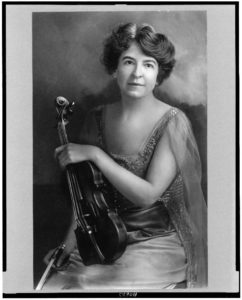
Recognized as a musical prodigy around age seven, Maud Powell began taking violin and piano lessons in the Chicago area. When she was 13, Powell traveled with her mother and her brother to Europe where she studied in Germany. She debuted with the Berlin Philharmonic in 1885 and later with the New York Philharmonic. She advocated for music composed by diverse individuals – Americans, women, and Blacks. Powell also commissioned pieces of music that she could perform. She premiered 15 violin concertos including those by Tchaikovsky, Dvorak, and Sibelius that today are considered standard in the violin repertoire.
Power is credited with revolutionizing the art of violin playing. In 1904, she was the first solo instrumentalist to record for the Victor Company. She made international best-selling recordings for the next 15 years, bringing classical music to the masses. She was America’s greatest violinist of the time and ranked with the supreme international violinists of the day. Her many achievements include being the first woman to form and head her own string quartet. She performed at every U.S. and many Canadian military camps during World War I. In 2014, Powell was posthumously awarded a Grammy Lifetime Achievement Award.
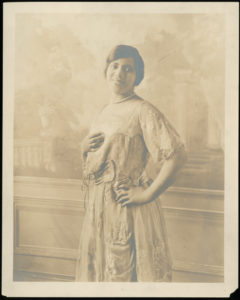
Hazel Harrison was also a child prodigy, and she was the daughter of a musician. She started playing the piano at age four and by age eight was being paid for playing at local parties and dances. In 1904, she played with the Berlin Philharmonic Orchestra; Harrison was the first American whose education had only taken place in the U.S., who was selected to play with a European orchestra. After her return to America, public funds were raised to enable her to return to Germany to study the piano.
Harrison returned to the U.S. with the outbreak of World War I, where she taught and gave recitals across the country. However, she was not welcomed into any major orchestra as she was African American. Harrison incorporated pieces from Black composers as well as European composers into her recitals. In 1931, she joined the faculty in the School of Music at Tuskegee Institute and, in 1937, became the head of the piano faculty at Howard University.

Born into a musical family and the daughter of a cousin of Susan B. Anthony, flutist Doriot Anthony Dwyer wanted to start playing the flute at age six; her mother insisted she wait until she was eight! By 15, she was in the Illinois State Orchestra and she was offered a scholarship to and attended the Eastman School of Music. Her first experiences of gender discrimination in orchestras occurred while she was at Eastman. After playing with a number of orchestras across the U.S., Dwyer auditioned to become the principal flutist for the Boston Symphony Orchestra. The process was accompanied by much drama but, in 1952, she was selected and became one of the first women appointed to a principal chair. Dwyer played with the orchestra for 38 years during which time she also served on the faculty of the Boston Conservatory and as adjunct faculty at Boston University. Upon her retirement, composer Ellen Zwilich wrote Concerto for Flute and Orchestra to honor her. Dwyer received three honorary doctorates including one from Harvard University.

Versatile violinist Regina Carter began playing the violin at age four using the Suzuki method. This well known, internationally acclaimed method and curriculum of teaching music is helpful, especially to young students. Carter had previously taken piano lessons starting when she was two. Defying being pigeonholed, she plays jazz, R&B, classical, country, African and almost every other genre of music. She taught music after training at the New England Conservatory of Music and Oakland University (Michigan). Carter played in an all-female jazz quintet (Straight Ahead) and the String Trio of New York prior to releasing her debut solo album in 1995. In 2001, she was the first nonclassical violinist and the first African American to play Niccolò Paganini’s violin which was made in 1743 by Giuseppe Guarneri.
Carter, who was featured in J. Jill’s Inspired Women campaign, received a MacArthur “genius” grant as well as the Doris Duke Artist Award. The MacArthur program said this about her, “Regina Carter is a master of improvisational jazz violin. Though her work draws upon a wide range of musical influences – including Motown, Afro-Cuban, Swing, Bebop, Folk, and World – she has crafted a signature voice and style. . . . Carter’s performances highlight the often overlooked potential of the jazz violin for its lyric, melodic, and percussive potential.” Carter was nominated for a Grammy in 2018 for Best Improvised Solo. She is on the faculty of the Manhattan School of Music.
These women musicians, as well as many other women, almost all of whom we have not heard about nor learned about in school, are profiled in our book, Her Story: A Timeline of the Women Who Changed America. Help us by continuing to tell the stories of the women who came before us, on whose shoulders we all stand. Tell young women especially so they understand that they can dream BIG, and then make their dreams a reality.
The post Women Instrumentalists in History appeared first on Kalon Women Collective.
Do You Have Arthritis? Consider Making These Changes 5 Jun 2021 6:21 AM (3 years ago)
Arthritis is a common health condition in the United States, affecting one in four adults according to the Centers for Disease Control and Prevention. Characterized by the inflammation of one or more joints, arthritis can cause joint pain, stiffness and swelling that can limit one’s functionality and impact daily activities.1
These Changes Can Make a Difference for Those Living with Arthritis
Two of the most common types of arthritis are osteoarthritis (OA) and rheumatoid arthritis (RA). For those living with OA or RA, these changes could help improve daily life with arthritis:
- Do simple exercises: Exercise a few times a week to keep your joints as functional as possible. Find an activity you enjoy doing, such as taking a walk or swimming in a pool.2 Be sure to check with your doctor about what exercises are right and safe for you.
- Improve your sleep: According to the patient organization, CreakyJoints, there are many lifestyle changes you can make that may help improve your sleep, even if you suffer from arthritis pain. You may want to try avoiding caffeine in the evening, reducing screen time before bed, eating lighter meals at night and keeping your bedroom cool, dark and quiet.3
- Choose foods that fight inflammation: The Arthritis Foundation says that, while there is no miracle diet for arthritis, there are foods that can help fight inflammation and improve joint symptoms. A diet rich in fruits, vegetables, fish, nuts and beans but low in processed foods and saturated fat is not only great for overall health, but can also help manage disease activity.4
- Lose any amount of extra weight: According to The Osteoarthritis Action Alliance, extra weight greatly increases joint pain and damages the cartilage of the joints, especially in the hips and knees. Losing excess weight, even in small amounts, can help reduce joint pain, avoid joint surgery and become more active.5
Speak to your Physician about Medicines for Pain Management
In addition to lifestyle adjustments, a range of medicines are available to help relieve arthritis symptoms. Nonsteroidal anti-inflammatory drugs (NSAIDs), such as ibuprofen and naproxen, are frequently used to ease inflammation and pain caused by arthritis.6
“While it is important to have balanced pain management with arthritis, it is crucial to speak to your physician often and openly about your daily lifestyle. That way, your physician can help personalize your treatment which may include NSAIDs or other types of pain management techniques,” said Hasan Abed, MD, Anesthesiologist and Pain Management Specialist, Advanced Pain Management located in Timonium, Maryland.
If you take NSAIDs, it is important to talk to your healthcare professional because as many as one in four regular NSAID users are at risk to develop stomach ulcers – sores on the lining of the stomach caused by stomach acid.7 In addition to taking high doses of NSAIDs, other risk factors include taking NSAIDs with aspirin, or while taking corticosteroids or blood thinners, having had a stomach ulcer in the past and being older than 65 years of age. If you have more than two of these risk factors, you are considered at high risk for stomach ulcers.
Gastroprotection with NSAIDs can help lower the risk of stomach ulcers
Over-the-counter and prescription NSAIDs come in many different forms. They are available topically, as a lotion or gel and can be taken by mouth.6 Some NSAIDs include a gastroprotective medicine to help reduce the risk of getting a stomach ulcer.8
“Because every case of arthritis is different, it is important to talk to your physician about pain management and the potential risk of stomach ulcers if you take NSAIDs,” said Dr. Abed. “If appropriate, your doctor may suggest you take a medicine that can lower the risk of getting a stomach ulcer when taking an NSAID.”
For resources to help manage your OA or RA visit www.horizonconnectedhealth.com/patients/.
References: 1. Centers for Disease Control and Prevention. Frequently Asked Questions – Arthritis. https://www.cdc.gov/arthritis/basics/faqs.htm. Updated January 10, 2019. Accessed May 12, 2021. 2. Creaky Joints. Exercises for Arthritis. https://creakyjoints.org/education/treatments/exercises-for-arthritis/. Accessed May 12, 2021. 3. Creaky Joints. Chronic Pain and Sleep. https://creakyjoints.org/support/pain-management/sleep/. Accessed May 12, 2021. 4. The Arthritis Foundation. The Ultimate Arthritis Diet. https://www.arthritis.org/health-wellness/healthy-living/nutrition/anti-inflammatory/the-ultimate-arthritis-diet. Accessed May 12, 2021. 5. The Osteoarthritis Action Alliance. Weight Gain and Joint Pain. https://oaaction.unc.edu/wp-content/uploads/sites/623/2018/08/OAAA_WeightGain_JointPain-AN-3.18.pdf. Accessed May 12, 2021. 6. The Arthritis Foundation. NSAIDs. https://www.arthritis.org/drug-guide/nsaids/nsaids. Accessed May 12, 2021. 7. Lanza FL, Chan FK, Quigley EM. Guidelines for prevention of NSAID-related ulcer complications. Am J Gastroenterol. 2009;104(3):728-738. 8. Crofford LJ. Use of NSAIDs in treating patients with arthritis. Arthritis Res Ther. 2013;15(S3).
©2021 Horizon Therapeutics plc DA-UNBR-02519 05/21
The post Do You Have Arthritis? Consider Making These Changes appeared first on Kalon Women Collective.
Walking at Night? Tips to Protect Yourself From Situations That Feel Unsafe 5 Jun 2021 6:17 AM (3 years ago)
According to a new survey, routine activities are making people feel unsafe, including walking at night through a parking lot or garage or even taking a run.
Conducted by SABRE personal safety brand via Ipsos.Digital, a new survey revealed that over the past three years more than 80% of Americans have, at some point, felt unsafe in everyday situations.
Polling a nationally representative random sample of 1,000 people nationwide on their personal safety habits and attitudes, the survey provided several insights including just how common it is for Americans to feel unsafe and how people try to protect themselves. A few of the most notable findings include:
1) Unsafe in daily routines
Four in every five Americans admitted to feeling unsafe in everyday situations over the past three years. Beyond this, many also shared they have been uncomfortable as they go about common day-to-day activities. Forty-two percent of people confessed that walking through an area that is not well lit made them feel unsafe.
And these anxieties are not limited to dimly lit areas, as 32% of people stated they felt unsafe walking through a parking lot or garage, nearly a quarter of those surveyed (22%) experienced similar feelings while in the stairwell of a building.
2) Uneasy during recreational activities
To many, spending time exploring a local forest preserve or running solo on a trail can be a way to relax and escape everyday stress, but for a large percentage of people, these types of activities and experiences have often left them feeling uncomfortable. Most notably, two-thirds of all women surveyed expressed that when spending time running, walking or hiking in isolated areas, they have felt uncomfortable at some point over the past three years.
3) Ineffective protection methods
When presented with situations they felt were unsafe, an overwhelming majority (90%) admitted to taking steps to protect themselves. However, with only a split second to react, many of the cautionary measures being taken have been proven to be ineffective.
Among the most popular means of protection include 36% of people who have put keys between their fingers, while 30% stated they have pretended to be on a phone call to protect themselves. These forms of protection may be instinctual to further defend yourself but are ineffective and can provide a false sense of security. According to Gabrielle Rubin, founder of self-defense course Female Awareness, the real problem with holding keys between your fingers is that your attacker is already too close. The ideal safety protection tools can protect you from a distance while requiring minimal engagement and force.
4) Increased confidence with effective tools
Ultimately, however, the majority of those surveyed (64%) stated they already own a personal safety device, and of those, the bulk (86%) admitted that carrying it with them provides an increased sense of confidence and security. Some of the most popular forms of protection are self-defense products such as pepper spray (30%) and personal alarms (17%).
Given the increased sense of confidence and security that effective personal safety tools can provide, it is a good idea to explore the options to find what device works best for your needs.
A tool such as Smart Pepper Spray is one solution for everyday use. Connected to your phone via Bluetooth, this product can share your GPS location whenever pepper spray is deployed, allowing loved ones to know your exact whereabouts the moment the product is used.
Meanwhile, a product like SABRE Runner Pepper Gel may be a better fit for those searching for on-the-go safety devices to bring along as they are out preparing for a 5K and hoping for some added confidence as they begin their running regiment this spring.
Ideally the right safety tools provide an added level of confidence for users, enabling them to continue to do everything from routine daily activities to adventurous travel excursions with assurance and ease.
The post Walking at Night? Tips to Protect Yourself From Situations That Feel Unsafe appeared first on Kalon Women Collective.
How to Help Senior Loved Ones Protect Themselves From Financial Abuse 5 Jun 2021 6:13 AM (3 years ago)
An often-overlooked aspect of elder abuse is cybercrime — and it’s a problem that’s getting worse.
In 2020, the FBI reported a record amount of cybercrime complaints — nearly 800,000 — adding up to over $4.1 billion in losses. More than half of those losses were suffered by people aged 50 and older.
“The financial consequences are staggering,” said DJ Johnson, senior vice president of financial crimes risk management at Charles Schwab. “It’s something we all need to prioritize, dedicate resources to address and work closely on to prevent.”
The FBI data shows that, on average, Americans aged 50 and over lost nearly $5 million every single day, or nearly $3,500 per minute, to cybercriminals.
To protect your loved ones from financial abuse (cybercrime), the first step is awareness. What are the scams?
While fraud can come in many forms, some criminal schemes are targeted at the senior population, including:
- Romance scam: Fraudsters present themselves as potential romantic partners online to exploit their targets’ desire for companionship — a desire that has grown for many who have felt isolated through the coronavirus pandemic — and eventually get access to their money.
- Person in need scam: Criminals pretend to be a loved one (e.g., a grandchild) in immediate trouble and need of money right away.
- Investment scam: Outreach with phony investment opportunities.
- Fraud investigation scam: Criminals pose as law enforcement officials, asking for personal information or even money to help with their investigation.
- Technology scam: Fraudsters appear to be a technology support team member or someone from a trusted financial institution asking for remote access to fix a fabricated technical or account issue.
Who are the perpetrators?
When we think of fraudsters, we tend to think of nameless, faceless people sitting in the dark, halfway around the world. In reality, a report by the Office of Financial Protection for Older Americans found that in 36% of cases, the victim knows the perpetrator personally.
This is why caregiving should be a group effort. Bring other loved ones into the conversation, instead of leaving it in the hands of just one person. Lean on the financial institutions you keep your money with to be an extra set of eyes and ears for you. For instance, at Charles Schwab, we have teams dedicated to identifying and dealing with fraud attempts.
How can caregivers protect senior loved ones?
For caregivers, if you’re worried about your loved ones, start with this checklist to protect them:
- Talk about it. Have a conversation about common scams. Discuss your loved ones’ investment goals and attitudes toward money so that you can recognize irregular behavior.
- Designate trusted contacts. Make sure financial institution reps know who to contact on your loved one’s behalf in the event of suspected exploitation, fraud or health issues.
- Get organized. Locate and safely store important financial documents, such as wills, trusts, powers of attorney, account statements, insurance policies and beneficiary designations.
Even after you put things in place for your loved ones, be vigilant:
- Check in. Regularly review and update important financial documents.
- Listen. Pay attention to what your loved ones are saying and listen for worrying key phrases, such as “people are asking me for money,” “my bills are confusing to me” and “I don’t understand financial decisions that someone else is making for me.”
- Watch. Look out for red-flag behaviors, including unusual or unexplained financial activity, abrupt changes to documents, unpaid bills or mail piling up, new friends or sweethearts or confused behavior.
For more information on ways to educate and protect yourself and senior family members from fraudsters, visit schwab.com/schwabsafe/security-knowledge-center.
The post How to Help Senior Loved Ones Protect Themselves From Financial Abuse appeared first on Kalon Women Collective.
5 Ways Small Businesses Can Thrive Into the Future 5 Jun 2021 6:10 AM (3 years ago)
For the past year, the pandemic has disrupted the world — and small businesses are no exception. While navigating challenges, many small to medium-sized businesses (SMBs) discovered keys not only to survival, but to adapting and thriving. New research reveals what SMBs need to weather today’s hardships — and future challenges.
Here are the top areas SMBs need to focus on.
1. Boost cybersecurity with smarter technology
Technology company Lenovo’s “Future of Work and Transformation Study“ shows that while companies experienced a learning curve moving employees to remote work, businesses are leveraging smarter technology to increase IT security and empower employee productivity.
All companies have had to respond to the need for increased IT security and support for employees relying on home Wi-Fi networks. Employees using remotely-connected cloud and collaboration tools from their laptops or other devices on home Wi-Fi networks may increase the risk to data security, putting increased strain on IT department resources.
Lenovo’s study found that although most SMBs subscribe to an IT security service, data security and compliance management remains a burden. Fortunately, most businesses recognized the need early, and 80% of them built strategies to keep things running, including plans for data security and redundancy. About 45% of businesses reported having cloud-based data backup, 39% had physical data backup and 39% provided data security training.
Businesses may want to consider always-connected PCs with integrated LTE or 5G to offer employees freedom from reliance on unstable and potentially unsecure home Wi-Fi networks to increase connectivity speed and security. Smarter devices, services and software that can self-diagnose and pre-empt security vulnerabilities are also emerging technology solutions that can help SMBs that lack a robust IT support team to better manage their remote workforce.
“In today’s climate, businesses need reliable technology partners to boost digital transformation initiatives,” said Eric Yu, SVP and GM of the SMB Segment, Intelligent Devices Group, Lenovo. “With the right partner, any size business can manage their hardware, software and services to maximize employee experience and enhance productivity and security.”
2. Ensure employees have the necessary tools
While many businesses played catch-up to ensure employees had the right tools to successfully work from home, others still don’t have the right infrastructure for remote staff — which will likely continue to be essential to businesses.
The study found that cloud collaboration and software tools for videocalls and simultaneous document collaboration are essential for 97% of employees. Almost two-thirds of survey respondents also said these tools improved their productivity and efficiency.
Now is a good time to assess what technological tools your employees need, so you’ll be ready for whatever the future holds.
3. Meet consumer demand for omnichannel ordering
Since lockdowns began, eCommerce and online ordering has increased dramatically — for everything from sporting goods and retail apparel to housewares and takeout meals. While some businesses — whether independent retailers or restaurants — have gone online for the first time, others worked to optimize their existing online ordering systems, taking into consideration order flow, packaging, delivery systems and end-user experience.
Through this disruptive period, retailers have had the opportunity to get more creative and innovative in terms of how they are reaching their customers. Adopting eCommerce and having an online presence is no longer a “nice to have,” but a “must have” — and going forward, both retailers and restaurateurs will need to continue to perfect the omnichannel experience (unifying their physical and digital operations) by creating an integrated and cohesive customer experience, no matter how or where a customer reaches out.
Consumer behavior has quickly changed in surprising ways. Data from a recent study by Lightspeed, a leading provider of cloud-based, omnichannel commerce platforms, shows how online ordering for restaurants in large suburbs grew by a whopping 3,868% between February and April 2020, as commuter patterns changed and restaurants identified opportunities outside urban centers.
Having an efficient, safe, user-friendly eCommerce system is not only crucial when customers can’t come inside your brick-and-mortar business, it’s essential to provide more convenience and options for whatever customers are looking for. In both the retail and hospitality industries, consumer appetite for online ordering is here to stay. In fact, a recent study from Google showed that 61% of shoppers prefer an omnichannel experience that unifies the physical and digital shopping experience, with the ability to order online at their convenience and shop in-person when they need an item immediately.
4. Diversify revenue streams and shore up supply chains
In an unpredictable economy, it’s important to make sure the entirety of your business is as resilient and flexible as possible. Many restaurants from the Lightspeed study added new merchandise, subscription boxes, to-go beverages gift cards, online classes and donation options to their online ordering menus, with great success. These are tactics that restaurants powered by Lightspeed in economies such as Australia and New Zealand maintained even after diners enthusiastically returned to indoor dining.
“Small and medium-sized businesses are the backbone of the global economy. Their ability to creatively navigate this past year demonstrates both their resilience and the crucial role they will play in reigniting communities through commerce as lockdowns are lifted,” said Dax Dasilva, CEO of Lightspeed. “Independent businesses who have moved to seamlessly unite their digital and physical operations are poised to thrive.”
5. Leverage social media to grow community
Lightspeed believes that commerce ignites community and the company’s recent study also found restaurants that were able to grow their revenue by more than 100% in 2020 maintained a robust social media presence and marketing strategy to connect with local neighborhood diners. These thriving restaurateurs found ways to give back, reward customer loyalty and partner with other local businesses to build a broader customer base. They identified ways to utilize local media for outreach and responded to every customer review to ensure their online reputation kept new guests coming in. These are key tactics for any entrepreneur.
For independent businesses, surviving — and thriving — despite daunting challenges requires agility, plus the know-how to leverage all available technology tools.
The post 5 Ways Small Businesses Can Thrive Into the Future appeared first on Kalon Women Collective.
Celebrating the Moms in Your Life on Mother’s Day 3 May 2021 10:43 AM (3 years ago)
What makes a family? Ask people across the country and one answer stands out: Love. This single word is what it means to be a mother. From care and compassion to encouragement and support, every family grows stronger through the endless love a mother provides.
A mom can be anyone who loves without bounds. This Mother’s Day, remember all the moms in your life — birth mom, adopted mom, step mom, grandma, aunt— who stepped in and stepped up. That includes the supermoms doing it all, especially this past year. Here are some ideas that are sure to touch her heart and make her smile:
Colorful flowers
Just like she brightens your day, you can do the same with colorful Mother’s Day flowers from 1-800-Flowers.com. If you know her favorite kind of flower, choose an arrangement featuring that variety to really show you are listening and care about her interests. To make the gift extra special, check out their One-of-a-Kind Bouquets, specially created by local florists to create luxurious, hand-curated designs that will surely impress.
Gratitude collection
Want a fun project that the whole family can do together? Cut colorful construction paper into 1-inch strips and write down different things you love about Mom or why you’re thankful for her. Then either loop and tape each piece together to make a decorative chain or fold into a jar so she can pull out each compliment one by one.
Sweet & savory treats
Whether she craves chocolate-dipped strawberries, fresh fruit or meat and cheese pairings, there are indulgent food gift baskets to fit any personality. Give her a reason to enjoy something she loves without the task of purchasing and preparing it!
Perfect plants
For the mom who loves all things green or blooming, consider sending a plant. Succulent gardens are on trend and low-maintenance, so it’s easy for Mom to enjoy them month after month. Lilies and lavender are other popular picks, but feel free to get what you think she’d enjoy most. Trends aside, you know her best.
Creative cards
It might sound simple, but a card is a small gesture with meaningful impact. This is especially true if you take time to write a heartfelt note. Share a favorite memory and tell her why she’s so special.
There’s no better time to celebrate moms everywhere. Because there are #NoLimitsonLove, make sure you show every mother figure in your life you care this Mother’s Day.
The post Celebrating the Moms in Your Life on Mother’s Day appeared first on Kalon Women Collective.
Tribal Women Leaders in History 3 May 2021 10:38 AM (3 years ago)

Secretary of the Interior
In 2021, Deb Haaland, of the Laguna Pueblo in New Mexico, became the first Native American Secretary of the Interior. A single mother who grew up in a military family, Haaland, put herself through college, earning her bachelor’s and her law degree from the University of New Mexico. She ran a small business, served as a tribal administrator and was the first woman chairperson of the Laguna Development Corporation Board of Directors. She made an unsuccessful run for Lieutenant Governor of New Mexico in 2014. In 2018, she ran for the U.S. House of Representatives and was elected as one of the first two Native American women in the U.S. Congress. She was re-elected in 2020.
Haaland follows in the footsteps of other Native American women who have left all of us the important legacy of being strong leaders. In this column, we profile Nancy Ward, Sarah Winnemucca, Annie Dodge Wauneka, and Wilma Mankiller. These leaders literally fought in battle, fought for the rights of their people, and worked to make lives better for all.

Cherokee leader Nanyehi (Nancy Ward) gained renown when she took her husband’s place in the battle of Taliwa (fought in 1775 in what is present-day Georgia) between the Cherokee and the Creek tribes. Her efforts helped the Cherokees win decisively. For her courage, she was named Agi-ga-u-e (Ghigau – Beloved Woman). Ward headed the influential Woman’s Council and was the only female voting member of the Council of Chiefs. Later, Ward saved a white woman from a raid and nursed her back to health. The woman, Lydia Bean, brought two of her cows to the Cherokee settlement and showed Ward a loom weaving technique. Ward learned from Bean how to care for the cattle and how to make butter and cheese. Ward then brought this knowledge of dairy products to the Cherokee nation. Ward spoke often and passionately about peace between her people and the increasing number of white settlers who were infringing upon Cherokee Land.

Northern Paiute Native American Sarah Winnemucca was born in Nevada, the daughter of a Paiute Chief; she was educated in California. In 1865, while she was away from the tribe, her mother and other family members were killed by the U.S. Cavalry. As a result, Winnemucca became an advocate for the rights of Native Americans, speaking across the country and lobbying the U.S. Congress. She was able to free her father and other tribesmen during the Bannock War of 1878 and subsequently she served as an Army scout against the Bannock tribe. Her book, Life Among the Paiutes: Their Wrongs and Claims, published in 1883, is both a memoir and a history of her people. She gave many lectures around the U.S. after the book’s publication. She was able to speak with President Hayes and the Secretary of the Interior about returning her people to their lands on the Malheur Reservation. Although legislation was passed enabling the return of Paiute land, it was never enacted. Winnemucca eventually returned to Nevada and started a school for Native American children. She has been inducted into the National Women’s Hall of Fame.

Born on the Navajo Reservation in Arizona, Annie Dodge Wauneka was first elected to the Navajo Tribal Council in 1951. She served on that council for 27 years. With her knowledge of nursing, she was asked to lead the health committee in 1953 to address the issue of tuberculosis on the reservation. As she knew both English and Navajo, she compiled an English-Navajo dictionary to allow white doctors and Navajo medicine men to communicate. She launched a radio program that was reported entirely in Navajo; the program focused on ideas that brought more cleanliness and modern western medical practices to the reservation. The first Native American to receive the Presidential Medal of Freedom (1963), Wauneka helped eradicate tuberculosis from the reservation. She also significantly reduced infant mortality by encouraging women to have hospital births for their babies. Wauneka received an honorary doctorate of public health from the University of Arizona (1976) and has been inducted into the National Women’s Hall of Fame.
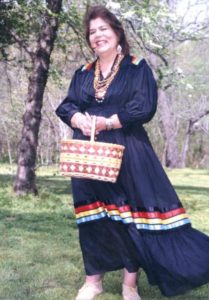
The first female chief of the Cherokee Nation, Wilma Mankiller worked to improve the education and health care systems, as well as the government of her people. Mankiller is recognized by many titles – activist, social worker, community developer. But she is best remembered when after many years of service to the Cherokee Nation, in 1985, she was elected as the Principal Chief. She served for ten years until her own ill health forced her to step down. The recipient of the Presidential Medal of Freedom, Mankiller said “Prior to my election, young Cherokee girls would never have thought that they might grow up and become chief.” She also said, “I advise young people to always be fully engaged. Speak out against injustice. Don’t lead a moderate life. Don’t let society define who they are. No one needs to waste their lives living someone else’s dream.” She authored the bestselling autobiography Mankiller: A Chief and Her People. Among her numerous honors, Mankiller has been inducted into the Oklahoma Hall of Fame and the National Women’s Hall of Fame.
Many noteworthy quotes can be found in Mankiller’s biography. One we find particularly significant is “In Iroquois society, leaders are encouraged to remember seven generations in the past and consider seven generations in the future when making decisions that affect the people.” Think deeply about her words as we remember that women participate and contribute to every area of our lives.
These women tribal leaders, as well as many other women, almost all of whom we have not heard about nor learned about in school, are profiled in our book, Her Story: A Timeline of the Women Who Changed America. Help us by continuing to tell the stories of the women who came before us, on whose shoulders we all stand. Tell young women especially so they understand that they can dream BIG, and then make their dreams a reality.
The post Tribal Women Leaders in History appeared first on Kalon Women Collective.
Elevate Your Brunch: Spring Vegetable and Envy™ Apple Orzo 3 May 2021 8:47 AM (3 years ago)
Brunch is the perfect pairing of morning delights and mid-day favorites. Whether celebrating holidays, anniversaries, friendships or simply a sunny Sunday, brunch is guaranteed to satisfy and bring smiles.
“From making pancakes with the kids on Saturday mornings to frittatas and mimosas with the best of friends, brunch foods are the ultimate in connection and warmth,” said Faith Durand, editor-in-chief of Kitchn, a cooking and lifestyle website whose brunch recipes in particular have continued to gain in popularity.
Take your spring brunch to the next level by incorporating a crowd-pleaser like apples. Big, beautiful Envy apples uniquely deliver a delightful crunch, uplifting aroma, and a sophisticated, balanced sweetness, making them a perfect addition to both savory and sweet dishes. What’s more, Envy
apples uniquely deliver a delightful crunch, uplifting aroma, and a sophisticated, balanced sweetness, making them a perfect addition to both savory and sweet dishes. What’s more, Envy apples remain white and crisp upon slicing, so brunch spreads will stay fresh and eye-catching.
apples remain white and crisp upon slicing, so brunch spreads will stay fresh and eye-catching.
Sweet or savory, brunch offers a range of possibilities for a creative sunny-day spread:
Brunch boards: The popularity of charcuterie boards has inspired countless spinoffs and one of the most delicious and customizable is the Brunch Board. While the concept is simple, the presentation is impressive. Find a large platter and arrange all your favorites in an eye-pleasing fashion. For example, place a row of mini pancakes or crepes on the platter between sweet and savory items, with sliced Envy apples and assorted fruit on one side and hard-boiled eggs, bacon and sausage on the other.
apples and assorted fruit on one side and hard-boiled eggs, bacon and sausage on the other.
Avocado toast: With the massive popularity of avocado toast, adding this dish to your brunch is a no-brainer. To make your brunch special, upgrade standard ingredients for added flavor. Thin, crisp Envy slices, lime juice, chopped chives and shaves of fresh Parmesan take this quintessential brunch treat to the next level. Prepare slices for the entire table or invite guests to express their creativity with an avocado toast bar.
slices, lime juice, chopped chives and shaves of fresh Parmesan take this quintessential brunch treat to the next level. Prepare slices for the entire table or invite guests to express their creativity with an avocado toast bar.
Fruit-enhanced bakery: Add a touch of sweetness and irresistible crunch to baked goods by adding diced Envy apple. Pancakes, muffins, crepes — the possibilities are endless.
apple. Pancakes, muffins, crepes — the possibilities are endless.
Sharable sizes: Brunch is all about bringing people together, and sharable items are the perfect way to please all palates. A platter of sliced fruit, including large Envy apples that are naturally the perfect size for slicing and sharing, brings vibrant color to the spread and is also a delicious and healthy addition to brunch. You can’t beat the refreshing crunch in balancing out other savory or salty foods.
apples that are naturally the perfect size for slicing and sharing, brings vibrant color to the spread and is also a delicious and healthy addition to brunch. You can’t beat the refreshing crunch in balancing out other savory or salty foods.
 is the official fruit partner of Kitchn’s 2021 Brunch Fest. “With our first ever Brunch Fest social takeover, we’re celebrating the dishes and drinks that wake us up, bring our families together, and give us a reason to say cheers with the people we love,” said Durand.
is the official fruit partner of Kitchn’s 2021 Brunch Fest. “With our first ever Brunch Fest social takeover, we’re celebrating the dishes and drinks that wake us up, bring our families together, and give us a reason to say cheers with the people we love,” said Durand.Find recipes and more information on EnvyForBrunch.com.
Spring Vegetable and Envy Apple Orzo
Apple Orzo
This brunch recipe celebrates spring by pairing the sophisticated sweet flavor and crunch of Envy apples with seasonal fresh asparagus and umami-rich shiitake mushrooms. Tossed with a bright and zesty lemon vinaigrette, this delightful dish can star as an entrée or serve as a side.
apples with seasonal fresh asparagus and umami-rich shiitake mushrooms. Tossed with a bright and zesty lemon vinaigrette, this delightful dish can star as an entrée or serve as a side.
Ingredients:
For the asparagus:
1 bunch asparagus, ends trimmed and cut into 1-inch pieces
1 tablespoon extra-virgin olive oil
1/2 teaspoon kosher salt
For the mushrooms:
4 cups shiitake mushrooms, stems removed, sliced
1/4 cup extra virgin olive oil
1/2 teaspoon kosher salt
For the vinaigrette:
2 tablespoons extra-virgin olive oil
3 tablespoons lemon juice
1 teaspoon kosher salt
40 turns fresh cracked pepper
2 cups orzo pasta
1 Envy apple, small diced
apple, small diced
4 tablespoons chopped parsley
Directions:
Preheat oven to 400 degrees.
Toss the asparagus in olive oil and salt and spread out on half of a sheet tray.
Toss the mushrooms in the olive oil and salt and spread out on the remaining half of the sheet tray. Roast in the oven until asparagus and mushrooms are tender, about 10 minutes.
Whisk together the vinaigrette ingredients until well combined.
Cook the orzo in salted boiling water according to package directions. Drain well and then toss with the vinaigrette. Fold in the asparagus, mushrooms, apples and parsley. Serve warm.
The post Elevate Your Brunch: Spring Vegetable and Envy™ Apple Orzo appeared first on Kalon Women Collective.
What Are the Benefits of Exercising Outside? 3 May 2021 8:44 AM (3 years ago)
When the pandemic started, you may have had the best intentions of using your time to get fit. However, with a variety of challenges filling your time, don’t feel bad if you have yet to start over a year later. The good news is it’s never too late and now is the ideal time to find a fitness routine that works for you.
Getting outdoors means ample space for social distancing and fresh air, which are important for health and safety reasons, but the benefits of exercising outside don’t stop there. According to research published in the Environmental Science and Technology journal, exercising outside has physical and mental benefits. In the report, when compared with exercising indoors, exercising outside in natural environments resulted in:
- Greater feelings of revitalization
- Increased energy
- Positive engagement
- Higher enjoyment and satisfaction
- Decrease in tension, confusion, anger and depression
- Higher likelihood to repeat the activity at a later date
These results aren’t surprising to CEO and Founder of Moms on the Run Karissa Johnson, a structured fitness program for women of all ages. She said there are basic evidence-based health benefits of nature contact, including reduced stress, lower blood pressure, improved mental health and higher life satisfaction, among others.
“Add in the benefits of exercise, and being physically active outdoors offers so many positives,” said Johnson. “Finding an exercise activity to do outside can really make a big difference in how you feel, whether that’s doing something you enjoy or trying something new.”
Whether you have experience or not, Johnson suggests exploring running with a local group to help you get outdoors and be fit. Moms on the Run is one option that helps you learn to run with a group of other like-minded women. These groups are led by instructors so you know exactly what to do no matter where you are on your fitness journey. Groups meet at parks in cities nationwide and you can join at any time, with new signature training sessions often starting up in spring and fall. Learn more at www.momsontherun.com.
Why choose group outdoor fitness? There are many reasons to buddy up rather than trying it alone.
Feel supported: If you have questions or concerns, an instructor-led group environment means you’ll always have answers. You’ll get the support you need to succeed and feel your best. For example, 90% of Moms on the Run participants in a recent survey said they feel supported and 83% feel they’ve connected with like-minded people, which all contribute to success.
Accountability: Knowing a group is meeting and you’re part of that group can be more motivation than if you exercise alone. You’ll feel more drive to do something if others are expecting you to be there. If the program you choose comes with a cost, you also feel accountable because you want to make the most of that investment.
Socializing: Being part of a fitness community allows you to develop relationships, and some people form lasting friendships. Even if it’s just connecting during class, in-person socializing is an important part of the human experience and something many people have missed since the start of the pandemic.
Safety: Working out in a group helps you stay safer. First, you’re never alone in an outdoor area so you can feel more confident in your safety. Second, if you sustain an injury or experience another urgent situation, people you know and trust are around to help you out.
Are you ready to get outside and reap the benefits of outdoor exercise? The fresh air and open spaces are ready to inspire your personal fitness journey.
The post What Are the Benefits of Exercising Outside? appeared first on Kalon Women Collective.
Reasons Why You Should Consider Seeing a Geriatrician 3 May 2021 8:40 AM (3 years ago)
It comes as second nature for most parents to take their children to a pediatrician at least once a year. The differences between children and adults are so stark that it makes sense to choose a doctor specially trained to treat younger patients.
Yet as we age, far too few of us apply this same logic when choosing a physician, even though our health needs often change dramatically in our later years. And we know from recent experience with the COVID-19 pandemic that the health complexities for older adults can make them particularly vulnerable to certain illnesses, demonstrating the need for a care approach as tailored as the individuals themselves.
“The kind of care you deliver to an older adult is definitely not the same as the care you give to a middle-aged person,” said Michael Stockman, M.D., a geriatrician and medical director with UnitedHealthcare Medicare & Retirement. “The physiology of older people is very different from people in other stages of life.”
Those differences are significant enough that the medical community developed a specialty called geriatrics, to address the needs of older adults. Geriatricians, like Dr. Stockman, are licensed physicians who have completed additional training in managing the care of older adults. That training makes geriatricians uniquely suited to help seniors manage the demands of their often-complex health issues.
One of those complex issues is the care of chronic conditions, such as high blood pressure, diabetes and heart disease, which are much more prevalent in older people than the rest of the population. More than half of older adults have at least two chronic conditions. This group is also at higher risk for developing chronic diseases, along with other complex conditions such as cancer and Alzheimer’s disease.
Additionally, nearly 90% of adults 65 and older take at least one prescription medication, and more than half report that they take four or more, compared to one-third for those in the 50 to 64 age bracket.
Juggling multiple chronic conditions can be a challenge for the doctor and the patient. One condition can sometimes make the effects of another condition worse, and the treatments or medications for different illnesses sometimes interfere with each other.
Decisions about how to customize a patient’s treatment aren’t necessarily black and white, requiring a doctor and patient to carefully balance risks and benefits. For example, some diabetes medicines can cause dizziness, meaning the doctor needs to focus not just on regulating the patient’s blood sugar but also on minimizing the risk of a fall, which is the most common cause of injury in seniors.
“I think geriatricians are the only medical specialty more interested in taking away medications you don’t need than giving you new medications. A lot of what we do is determining which medications are more likely to cause harm than help,” Stockman said. “One of the most important things for geriatricians is the concept of shared decision-making. We ask patients, ‘What trade-offs are you willing to make?’”
Sometimes, the trade-offs are fairly simple — weighing the pros and cons of taking a certain medication or undergoing a specific screening, for example. But more often than not, they also incorporate a person’s overall quality-of-life goals. How important is it to maximize longevity? Comfort? How about independence? Each person answers those questions differently, and geriatricians are trained to use the answers to guide their treatment recommendations and care plan.
In addition to the clinical aspects of an individual’s care are the complexities of variables commonly referred to as “social determinants of health” — things like access to healthy food, financial burdens, racial disparities, transportation limitations and more. Many older adults are dealing with these potential barriers to health, and as Stockman noted, a geriatrician can help support his or her patients in identifying and addressing these challenges alongside their regular care plan.
So, when should someone seek out a geriatrician for themselves or a loved one? A significant change in health status could be a trigger for a geriatrician visit. But anytime an older adult feels his or her care is becoming too complex or needs better coordination, a visit with a geriatrician could help.
“Geriatricians can be really good at balancing all of a person’s medical needs and different doctors in one overall care plan,” Stockman said.
Think you could benefit from seeing a geriatrician?
With 10,000 Americans turning 65 every day, the demand for geriatricians continues to grow. Unfortunately, these specialists are a comparatively rare breed. While there are more than 58,000 general pediatricians practicing in the United States, there are fewer than 5,600 geriatricians.
For this reason, finding a board-certified geriatrician to support your ongoing health care needs may be difficult, but many geriatricians will see a patient on a one-time or as-needed basis and then make recommendations to the patient’s primary care physician.
The American Geriatrics Society offers information about how to find a geriatrician on its website, healthinaging.org, and many larger hospitals and university medical centers have geriatricians on staff who will see new patients. If you’re enrolled in a Medicare Advantage plan, be sure to confirm if a geriatrician you want to see is in your plan’s network and whether your plan requires you to first get a referral from your primary care physician before a visit with a geriatrician will be covered.
The post Reasons Why You Should Consider Seeing a Geriatrician appeared first on Kalon Women Collective.
Navigating Challenges of Parkinson’s Disease: Understanding OFF Episodes 3 May 2021 8:34 AM (3 years ago)
Living with Parkinson’s disease (PD) can be hard for the nearly 1 million Americans with the disease[i] and may present unexpected daily challenges. As the disease progresses, a person’s response to medications to treat their PD symptoms can change, leading to the re-emergence or worsening of PD symptoms between doses. These periods are known as OFF episodes and are experienced by an estimated 350,000 people in the U.S. living with PD.
The symptoms of OFF episodes may include motor symptoms like tremor, stiffness, slow movement, and difficulty communicating, as well as non-motor symptoms like anxiety and depression.[ii],[iii] During OFF episodes, someone with PD may have difficulties doing everyday tasks like walking unassisted or getting up out of a chair.
OFF episodes are more common than people might think
OFF episodes may occur in as many as 50% of people with PD after five years of levodopa treatment, and the percentage increases over time.[iv] 70% of patients beyond nine years of oral levodopa treatment will experience OFF episodes.[v] These episodes can take place in the morning upon waking or throughout the day.
Drew Falconer, M.D., a leading movement disorder specialist at the Inova Parkinson’s and Movement Disorders Center in Fairfax, Va., and Associate Professor of Neurology at the UVA School of Medicine, Inova Campus, has worked with people with PD and their families for over six years and recognizes that OFF episodes can be a challenge.
“The first signs of OFF episodes may be as subtle as realizing that PD medications do not last as long as they once did, having difficulty getting out of bed in the morning, or getting dressed for the day,” said Dr. Falconer. “As PD progresses, symptoms may get worse, and these episodes may become more frequent.”
The impact of OFF episodes
Living with OFF episodes may be challenging for some patients and their care partners. They may affect a person’s ability to perform daily activities, such as buttoning a shirt or eating meals. In addition, the often unpredictable nature of OFF episodes can make them difficult to identify and even discuss effectively with healthcare providers.
Talking to the doctor about difficult parts of PD like OFF episodes is important. Some people may accept these episodes as part of PD, without realizing that they are manageable. Other people may find it hard to choose which symptoms to share and find the right words to explain their experiences to their physician.
“As people notice OFF episodes becoming more frequent and disruptive, they can keep a journal to track symptoms and identify patterns of when they occur most often, and discuss a treatment plan with their physician,” says Dr. Falconer. “It’s important for people living with PD and their families to know that OFF episodes can be managed. Fortunately, there are medicines available that can safely and effectively treat OFF episodes as they occur.”
New options for patients
Most medicines focus on keeping people ON (when levodopa/carbidopa is working and symptoms are improved) rather than treating OFF episodes as they happen. Patients now have treatment options to treat OFF episodes on-demand, as they occur, wherever they occur.
The newest FDA-approved treatment for OFF episodes associated with PD is KYNMOBI (apomorphine HCl) sublingual film, which is now available by prescription in the U.S. KYNMOBI is the first and only sublingual (under the tongue) treatment for PD OFF episodes. It dissolves under the tongue and may help people improve motor symptoms when they need it.
(apomorphine HCl) sublingual film, which is now available by prescription in the U.S. KYNMOBI is the first and only sublingual (under the tongue) treatment for PD OFF episodes. It dissolves under the tongue and may help people improve motor symptoms when they need it.
Before starting any treatment, people should talk to their doctor to determine which treatment options may be right for them and to understand the potential benefits and risks.
For more information about OFF episodes and treatment with KYNMOBI, visit KYNMOBI.com. Please see below for Important Safety Information.
IMPORTANT SAFETY INFORMATION FOR KYNMOBI (apomorphine HCI) SUBLINGUAL FILM
Do not take KYNMOBI if you are taking certain medicines to treat nausea called 5HT3 antagonists, including ondansetron, granisetron, dolasetron, palonosetron, and alosetron. People taking ondansetron together with apomorphine, the active ingredient in KYNMOBI, have had very low blood pressure and lost consciousness or “blacked out.”
Do not use KYNMOBI if you are allergic to apomorphine hydrochloride or to any of the ingredients in KYNMOBI. KYNMOBI also contains a sulfite called sodium metabisulfite. Sulfites can cause severe, life-threatening allergic reactions in some people. An allergy to sulfites is not the same as an allergy to sulfa. People with asthma are more likely to be allergic to sulfites. Call your healthcare provider if you have hives, itching, rash, swelling of the lips, tongue and mouth, redness of your face (flushing), throat tightness, trouble breathing or swallowing.
Before starting KYNMOBI, tell your healthcare provider:
About all of your medical conditions, including if you:
- have difficulty staying awake during the daytime
- have liver problems
- have dizziness
- have kidney problems
- have fainting spells
- have heart problems
- have low blood pressure
- have had a stroke or other brain problems
- have asthma
- have a mental problem called a major psychotic disorder
- are allergic to any medicines containing sulfites
- drink alcohol
- are pregnant or plan to become pregnant. It is not known if KYNMOBI will harm your unborn baby
- are breastfeeding or plan to breastfeed. It is not known if KYNMOBI passes into your breast milk. You and your healthcare provider should decide if you will take KYNMOBI or breastfeed.
Tell your healthcare provider about all the medicines you take, including:
- prescription medicines
- over-the-counter medicines
- vitamins
- herbal supplements
KYNMOBI may affect the way other medicines work, and other medicines can affect how KYNMOBI works. Taking KYNMOBI with other medicines may cause serious side effects.
If you take nitroglycerin under your tongue (sublingual) while using KYNMOBI, your blood pressure may decrease and cause dizziness. You should lie down before and after taking sublingual nitroglycerin.
KYNMOBI can cause serious side effects, including:
- nausea and vomiting. Nausea is a common side effect of KYNMOBI. Nausea and vomiting can happen with KYNMOBI. Your healthcare provider may prescribe a medicine called an antiemetic, such as trimethobenzamide to help prevent nausea and vomiting. If trimethobenzamide is prescribed, talk to your healthcare provider about how long you should remain on this medicine.
- sleepiness or falling asleep during the day. Sleepiness is a serious, and common side effect of KYNMOBI. Some people treated with KYNMOBI may get sleepy during the day or fall asleep without warning while doing everyday activities such as talking, eating, or driving a car.
- dizziness. Dizziness is a serious, and common side effect of KYNMOBI. KYNMOBI may lower blood pressure and cause dizziness. Dizziness can happen when KYNMOBI treatment is started or when the KYNMOBI dose is increased. Do not get up too fast from sitting or after lying down, especially if you have been sitting or lying down for a long period of time.
- mouth (oral) irritation. Mouth (oral) irritation is a common side effect of KYNMOBI. You should call your healthcare provider if you develop any of these signs or symptoms.
- redness
- mouth sores (ulceration)
- dryness of the mouth, lips or tongue
- swelling
- pain
- pain with swallowing
- falls. The changes that can happen with PD, and the effects of some PD medicines, can increase the risk of falling. KYNMOBI may also increase your risk of falling.
- hallucinations or psychotic-like behavior. KYNMOBI may cause or make psychotic-like behavior worse including hallucinations (seeing or hearing things that are not real), confusion, excessive suspicion, aggressive behavior, agitation, delusional beliefs (believing things that are not real), and disorganized thinking.
- strong (intense) urges. Some people with PD have reported new or strong uncontrollable urges to gamble, increased sexual urges, increased urges to spend money (compulsive shopping), and other intense urges, while taking PD medicines, including KYNMOBI. If you or your family members notice that you have strong urges, talk to your healthcare provider. The strong urges may go away if your KYNMOBI dose is lowered or stopped.
- high fever and confusion. KYNMOBI may cause a problem that can happen in people who suddenly lower their dose, stop using, or change their dose of KYNMOBI. Symptoms include:
- very high fever
- confusion
- stiff muscles
- changes in breathing and heartbeat
Do not stop taking KYNMOBI or change your dose unless you are told to do so by your healthcare provider.
- heart problems. If you have shortness of breath, fast heartbeat, chest pain, or feel like you are going to pass out (faint) while taking KYNMOBI, call your healthcare provider or get emergency help right away.
- tissue changes (fibrotic complications). Some people have had changes in the tissues of their pelvis, lungs, and heart valves when taking medicines called nonergot derived dopamine agonists like KYNMOBI.
- prolonged painful erections (priapism). KYNMOBI may cause prolonged, painful erections in some people. If you have a prolonged and painful erection, you should call your healthcare provider or go to the nearest hospital emergency room right away.
The most common side effects of KYNMOBI include:
- nausea
- dizziness
- sleepiness
- mouth swelling, pain, or sores
INDICATION
KYNMOBI (apomorphine HCl) sublingual film is a prescription medicine used to treat short-term (acute), intermittent “off” episodes in people with Parkinson’s disease (PD).
(apomorphine HCl) sublingual film is a prescription medicine used to treat short-term (acute), intermittent “off” episodes in people with Parkinson’s disease (PD).
You are encouraged to report negative side effects of prescription drugs to the FDA.
Visit www.fda.gov/medwatch or call 1-800-FDA-1088.
For more information, please see the KYNMOBI Patient Information, full Prescribing Information, and Instructions for Use at www.KYNMOBI.com.
References
[i] Parkinson’s Disease Foundation Website: https://www.parkinson.org/about-us/Press-Room/Press-Releases/New-Study-Shows-Over-1-Million-People-in-the-United-States-Estimated-to-be-Living-with-Parkinsons-Disease-by-2030. Accessed December 2020.
[ii] The Michael J. Fox Foundation. “Ask the MD: The Language of Parkinson’s, ‘Off’ Time.’” https://www.michaeljfox.org/news/ask-md-language-parkinsons-time. Accessed December 2020.
[iii] Racette BA, et al. “Clinical features and comorbidity of mood fluctuations in Parkinson’s disease.” Journal of Neuropsychiatry and Clinical Neurosciences. 2002 Fall;14(4):438-42. https://doi.org/10.1176/jnp.14.4.438.
[iv] Thanvi BR, Lo TCN. Long term motor complications of levodopa: clinical features, mechanisms, and management strategies. Postgrad Med J. 2004;80:452-458.
[v] Ahlskog JE, Muenter MD. Frequency of levodopa-related dyskinesias and motor fluctuations as estimated from the cumulative literature. Mov Disord. 2001;16(3):448-458.
The post Navigating Challenges of Parkinson’s Disease: Understanding OFF Episodes appeared first on Kalon Women Collective.
Getting Retirement Savings on Track After COVID-19 3 May 2021 8:26 AM (3 years ago)
Planning for retirement is an important step toward long-term financial wellness at any age. Even though everybody knows to expect the unexpected, no one could have predicted how the events of the past twelve months would change the world. As a result, many people had to shift their approach toward financial planning and retirement savings and are now looking for ways to get back on track.
According to the Fidelity Investments’ 2021 State of Retirement Planning Study, more than eight out of 10 Americans (82%) indicate what’s taken place this past year has impacted their retirement plans, with one-third estimating it will take 2-3 years to get back on track, due to factors such as job loss or retirement withdrawals. The good news is, with the world changing yet again, now is an ideal time to refocus on the future.
The power of planning
“Everyone wants to retire comfortably and this need doesn’t change even during turbulent periods,” said Rita Assaf, vice president of Retirement and College Leadership at Fidelity. “Having a plan is an effective way to put big-picture goals into perspective and make them reachable. Just as you train for a marathon or have building plans for a remodel, having a retirement plan in place gives you a better sense of where you are headed, which can provide greater peace of mind.”
In fact, the Fidelity study offers strong evidence of a transformative effect on one’s financial outlook for those who have started thinking in detail about how to afford the retirement they want. Across the board, those with the most detailed plan in place to achieve their goals reported experiencing the greatest confidence. However, even the simple act of starting a plan can have a positive impact.
Interestingly, millennials are slightly more likely than their older counterparts to report having a plan to afford their desired lifestyle in retirement (35%), compared to Gen Xers (34%) or boomers (32%), even though boomers are closest to retirement. Part of this may be attributed to the fact that millennials are nearly twice as likely to have reported using online tools and calculators than boomers. These tools can provide the instant gratification of seeing a plan taking shape with just a few clicks, something many have become accustomed to in a digital age.
Finding focus in a post-pandemic world
For those looking to strengthen their financial future, planning plays an important role. According to the study findings, simply taking steps to visualize a plan for your retirement can lead to a greater sense of confidence and control. If you had a vision and lost focus, now is the time to get back on track. If you never had a plan, there’s no better time than the present to start. Here are some questions to guide you:
What is your score?
Learning your Fidelity Retirement Score online at www.fidelity.com/score is a good first step. After that, Fidelity’s Planning and Guidance Center features a host of planning tools to create and refine a plan for their retirement over time, including steps for improving retirement preparedness based on your score.
How much do you need to save for your anticipated rate of withdrawal?
In general, financial professionals recommend having 10-12 times your last full year of working income by the time you reach retirement. How quickly you plan to withdraw your savings will impact how much you need to save. In general, financial professionals suggest withdrawal rates of 4% to 6% annually.
How are your investments performing?
Look at performance and make a long-term plan. The stock market (S&P 500) has had a positive annual return for 26 out of the past 35 years, so looking at the big picture long term makes a difference.
When can you start collecting Social Security?
Although you can start receiving Social Security retirement benefits as early as age 62, you have to wait a few more years before you reach Full Retirement Age (FRA). Claiming Social Security benefits any time before you reach FRA can lock in a permanent reduction in monthly income.
“It’s normal to have a lot of questions, especially during times of uncertainty,” Assaf said. “Seeking answers to those questions and making a plan will help you feel more calm and confident that you’re on the right path.”
The post Getting Retirement Savings on Track After COVID-19 appeared first on Kalon Women Collective.
Wanderlust for Travel Is at an All Time High 3 May 2021 8:22 AM (3 years ago)
After a devastating pandemic kept us in our homes for over a year, wanderlust is at an all-time high and more Americans are starting to get back out there. In fact, one-third of us plan to travel out of town this spring, while a little over another third plan to do so this summer.1 With that in mind, Priceline looked at how travel has changed and what trends are emerging as we enter the spring and summer peak travel season.
1. Escapism is top of mind
When it comes to air travel, hotel stays and car rentals, Americans are prioritizing warm, tropical and entertainment-focused destinations, such as Hawaii, Las Vegas, Mexico and Orlando. Florida, in particular, is a traveler favorite right now. The Sunshine State dominates the top 10 destinations across all three categories with at least four cities on each list.2
2. Local exploration matters more than ever
When the pandemic took hold, flights came to an almost screeching halt. According to round-trip flight bookings on Priceline, travelers flew four billion miles fewer in 2020 than they did in 2019. Not only did people fly less often, but they also did not travel as far: The average distance dropped by 20% in 2020 (1,307 miles), compared to the same period in 2019 (1,654 miles).3 Instead, Americans are opting to explore locally, with 70% of car rentals used for road trips within their own state, and driving an average of 184 miles.4 Likewise, today’s travelers are booking hotel stays within their own states 10% more than prior years.5
3. Wallet-friendly stays abound in the South and West
Travel deals are more important than ever. This year, the average hotel stay costs under $125 a night in Las Vegas, The Black Hills, South Dakota, Denver and Orlando, which means you can enjoy a great getaway without blowing your budget.6 Explore the outdoors at South Dakota’s majestic Black Hills, home to Mount Rushmore, and Pigeon Forge, only a 25-minute drive from Tennessee’s Great Smoky Mountains National Park.
4. Package deals enable workcations
The blurring of work-life boundaries gave rise to the “bleisure” trip or workcation, a hybrid of business and leisure travel, last year. As flexible work schedules become a long-term possibility for many, these extended leisure-first trips, which incorporate remote work as part of the experience, will continue to drive unique booking preferences. Because of this, Priceline is seeing increased interest in bundled or package trips, which are conveniently booked together and offer great savings.
As domestic tourism ramps up, we will see continued preference for beach getaways and entertainment, alongside an ongoing appreciation for our local surroundings and an increased willingness to blend our vacations with work. And as consumers resume regular travel in search of connection and new experiences, Priceline is here to help them do just that by making unforgettable trips — at great values — available at their fingertips.
Methodology
1 Harris Report survey: “Springing Back to Normal? Planned Spending Signals Cautious Optimism Amid Vaccine Rollout” (2021).
2 Based on all hotel, car rental and round-trip domestic flight bookings for travel anytime from Apr. 1 to June 30, 2021.
3 Based on all flight bookings made by U.S.-based consumers for travel anytime between Jan. 1 to Dec. 7, 2020, compared to Jan. 1 to Dec. 7, 2019.
4 Based on car rental bookings for all car types made by U.S.-based consumers between Jan. 1 to Feb. 24, 2021, for travel anytime between Apr. 1 and June 30, 2021. Intrastate travel and average mileage traveled is based on car rental bookings for travel anytime during 2020.
5 Based on hotel bookings for all stars made by U.S.-based consumers for travel anytime between Jan. 1 to Dec. 31, 2021, compared to 2020 (Jan. 1 to Dec. 31, 2020) and 2019 (Jan. 1, 2019, to Dec. 31, 2019).
6 Based on the average daily rates across all stars for hotel booking for travel anytime between Apr. 1 and June 30, 2021.
The post Wanderlust for Travel Is at an All Time High appeared first on Kalon Women Collective.
KWC Quotes for Women 19 Apr 2021 6:01 AM (4 years ago)
The post KWC Quotes for Women appeared first on Kalon Women Collective.
Have You Ever Tried All-Natural Deodorant? 11 Apr 2021 6:33 AM (4 years ago)
By now, you know here at Kalon Women, we genuinely care about you, your health and wellbeing. We constantly keep a sharp eye out for the latest studies, information and products that will best serve as you walk your path to Wholeness.
As the weather begins heating up out there and spring springs its way into summer, our thoughts turn to sweat- and odor control. This can be tricky business, as many studies are now proving that antiperspirants bring with them the potential for serious health concerns.
This has us worried – for all of us.
You may or may not know that antiperspirants contain chemical compounds that serve to block the pores of the armpit by forming a plug to ‘seal’ the pore, in order to stop the discharge of sweat. This becomes worrisome when you consider metallestrogens.
Say What???
A study was published in the Journal of Applied Toxicology some years back and in it some very alarming connections were made between the aluminum compounds used in antiperspirants and Breast Cancer/ Alzheimer’s development.
This study sites that the metals used in antiperspirants, ie: cadmium and aluminum salts, have been shown to exert estrogen-like effects on the body, may times greater than the effects originally attributed to parabens during that controversy of several years ago.
These metal ingredients have been shown to actually promote the growth of breast cancer cells in lab experiments. These offending ingredients are labeled ‘metallestrogens’ and it’s believed they disrupt the normal hormone communications within breast tissue.
Furthermore, just where do these sweat-blocking ‘plugs’ go after they’ve done the job of pore plugging and sweat blocking? Do they accrue in the body? Do they magically disappear? We’re glad you asked!
Antiperspirants routinely contain aluminum salts in either the form: aluminum chlorohydrate or aluminum zirconium. Both of these compounds are shown to be very soluble and easily absorbed into human tissues. It’s also known that once inside the body, the aluminum portion of the molecule then ionizes, thus forming free radical aluminum. This rebellious molecule passes easily across cell membranes. Not good. Now think upon this for a moment more please… when one applies these ingredients to SHAVED armpits, fresh out of a hot shower, the absorption rate is intensified.
When the aluminum plug is dissolved, it is selectively absorbed by the organs, namely: the brain, liver, kidneys and bone marrow.
When one stops to consider that most breast tumors are found to develop along the outer portion of the breast, underneath the armpit area, there is significant cause for pause when reflecting upon this study and its connections.
The FDA defines antiperspirants as ‘Drugs’ because they actually alter the structure or function of the body, to which they are applied.
Deodorants on the other hand, allow the release of sweat but work to prevent odor causing bacteria formation by combating it with antiseptic agents. Deodorants are also defined by the FDA as ‘Cosmetics’ because they do not alter the structure or function of the body. Quite a difference from the ‘drug’ classification of antiperspirants!
However, with that said, many mainstream commercially produced deodorants are composed of petroleum-based chemicals, alcohols, FD&C colors and synthetic fragrances, all of which can still cause allergic reaction and inflammation to the user. So, what’s a sweaty soul to do?!?
Man oh man, are we ever about to rock your world! Meet your new best all-natural deodorant friend: ‘Lumē’.
Two months ago, I stumbled upon this all-natural deodorant and it’s actually a true game changer. I haven’t looked back and I want you to know about it too! The stuff is incredible.
‘Lumē’ products represent a completely new approach to whole body odor control that’s been developed by Dr. Shannon Klingman, and not only does it work like magic- it feels great on skin, even right after shaving.
Dr. Klingman spent more than 10 years researching body odor, including vaginal and foot odor, (brave girl) and worked to understand the causes, contributing factors and solutions.
Her research revealed that the real culprit- in most cases- is bacteria on the skin that digest body fluids.
Sounds rather like a bad sci-fi movie but these gobbling critters exist and they cause us all no end of worry, fret, shame, embarrassment and insecurity.
Lumē products are naturally-derived and are aluminum free, baking soda free and cruelty free.
You have your choice of lotion deodorant in a tube (best for foot and genital use), lotion deodorant in a standard underarm roll-on packaging and wipes. They even make bar soap.
Lumē products are safe for use on your most sensitive skin and their efficacy is clinically proven.
If you want all-natural deodorant you can use on all your more smelly bits- and you’re wanting long lasting 72 hour odor control, look no further than Lumē!
They make a huge selection of fabulous scents (my personal favorite is Sweet Lily; goes on a bit strong but within seconds turns light and clean.)
Even if you have to miss a shower or 2, this stuff still works!
Their tagline is: ‘We didn’t invent deodorant, we just changed everything about it.’ I’m here to tell ya: they ain’t kiddin’.
Lumē offers FREE SHIPPING for orders over $20.00, and there’s a lot of great info on their site too. *Go here to check it all out and make your purchase.
Check it out. You’ll be glad you did—and just in time for summer too!
And if you’d like to understand more about why mainstream antiperspirants aren’t your best choice, read ‘Antiperspirants and Menopause- What You Need to Know’
Check it out. You’ll be glad you did—and just in time for summer too!
The post Have You Ever Tried All-Natural Deodorant? appeared first on Kalon Women Collective.
Age in Place – How to Help Your Loved Ones 3 Apr 2021 8:14 AM (4 years ago)
In what seemed like an instant, the COVID-19 pandemic turned the world upside down. In addition to completely changing the way we work, shop and interact with others — just to name a few — it’s also forcing seniors to rethink their living arrangements and plans for the future, and changing the way we care for our elderly parents.
Given the recommendations around social distancing and documented outbreaks in nursing homes and other care facilities, more and more seniors are opting to age in place or, in other words, remain in their homes. But that’s easier said than done. Whether we’re in a pandemic or not, adjustments need to be made to ensure they have the support to do so safely.
Medication management
According to the Centers for Disease Control and Prevention (CDC), nearly half of Americans take at least one prescription drug, and one in four take three or more. However, studies have consistently shown that 20% to 30% of prescriptions are never filled and about 50% of medications for chronic disease are not taken as prescribed.
“Medication compliance is one of the most frequent reasons for decompensation with chronic medical illnesses,” said Mitchell Hyatt McClure, M.D., Chief, Hospital Medicine at Hartford Hospital.
To help your loved one stay on track with their medication regimen, consider an automatic medicine dispenser like Pria by BLACK+DECKER. Pria is a smart pill dispenser and home healthcare assistant designed to empower seniors to maintain their independence at home. Not only does it dispense the right dose at the right time, but it also allows caregivers to stay connected through two-way video calls, reminders and check-ins.
by BLACK+DECKER. Pria is a smart pill dispenser and home healthcare assistant designed to empower seniors to maintain their independence at home. Not only does it dispense the right dose at the right time, but it also allows caregivers to stay connected through two-way video calls, reminders and check-ins.
When using Pria for more than 90 days, users’ average adherence rate was 82% — up from 39% when used for fewer than 45 days. Caregiver presence also positively influences medication adherence when using Pria. Users with one caregiver had an average adherence rate of 79.4%, users with two caregivers were at 80.9% and users with three caregivers were up to 88.2%.
“An electronic pill dispenser like Pria can be invaluable for patients in promoting better health by improving medication compliance and reinforcing good health habits. The ability to additionally use Pria as a tool to communicate is an added benefit to combat social isolation, a problem that already existed in our elderly patients, but has been made increasingly worse by the COVID pandemic,” said McClure.
Remote monitoring
According to the National Council on Aging (NCOA), an older adult dies from a fall every 19 minutes. In fact, falls are the leading cause of fatal injury and the most common cause of nonfatal trauma-related hospital admissions among older adults. Furthermore, falls — with or without injury — can greatly impact seniors’ quality of life. A fear of falling creates a sense of uneasiness that often leads to a decrease in activity, which can, in turn, lead to physical decline, depression, social isolation and feelings of helplessness.
But caregivers can provide active loved ones with confident mobility simply by investing in a remote monitoring device. Whether it’s a necklace equipped with GPS, a smartwatch that can detect a fall and automatically alert emergency services, an in-home device that connects directly to emergency response operators or a combination of the three, your loved one will be able to age in place with the peace of mind that they have access to help should they need it.
Home modifications
Most homes aren’t designed for long-term care. However, simple home modifications can make it easier — and safer — for seniors to age in place. And when it comes to home modifications, the possibilities are endless.
When deciding which modifications to make, walk around the house with your loved one and identify their specific pain points. If they fear slipping in the shower, add a shower chair; if the front steps lack support, install railings; if their hardwood floors are slippery, lay down no-slip mats for traction. There are a number of options, both temporary and permanent, that can help your loved one stay in their home safely and comfortably.
The coronavirus pandemic has put our aging population at great risk, so it should come as no surprise that many seniors have opted to age in place. While it may be uncomfortable for family caregivers to accept this decision, it can be incredibly fulfilling and liberating for seniors when planned for properly. By utilizing available technology and making modifications where necessary, most seniors can remain happy, healthy and independent in their own homes.
The post Age in Place – How to Help Your Loved Ones appeared first on Kalon Women Collective.
Spring Cleaning? Don’t Forget Your Medicine Cabinet 3 Apr 2021 8:08 AM (4 years ago)
With your mind on the changing season, you may be purging closets, vacuuming floors and washing windows — but there’s one crucial area of the house to keep in mind: your medicine cabinet. Every year, unused prescriptions and expired over-the-counter medicines clutter bathrooms, kitchen cupboards and drawers, posing a danger to everyone in your household. Now is a great time to clear out this safety hazard from your home, and do it in a way that’s also environmentally responsible.
The dangers of unused medications
Americans are prescribed billions of medications, but according to Research in Social and Administrative Pharmacy, approximately two-thirds of those pills go unused. Leaving unfinished prescriptions in your home poses a danger not only to children, but also to adults or teens who may be tempted to try the medications, or give or sell them to others. Nearly half of adolescents 12 and over who report misusing prescription pain relievers took or received the drugs from a friend or relative.
Over-the-counter medications also pose a hazard, especially to children. The CDC reports that approximately 60,000 young children are brought to the emergency room each year because they accessed medicines that were within reach or not disposed of properly. Make sure medications and supplements are safely stored up and away, in child-proof containers. Check all medications, including vitamins and supplements, for expiration dates, as expired medications may not only be ineffective, but potentially unsafe.
Safest disposal methods
There is a lot of misinformation about how to dispose of prescription and over-the-counter medications without causing harm to people or the environment. Some counties sponsor drug take-back days or offer drop boxes, that allow you to bring in medications that you want to discard.
Unfortunately, not everyone has access to a drop-off site; that’s where at-home disposal is a useful option. If you want to safely and easily discard old medications and render them harmless at the same time, Deterra Drug Deactivation System Pouches are the only at-home medication disposal system that permanently deactivates over-the-counter and prescription medications. It is the safest, most effective choice to destroy and dispose of unused and expired medications. The pouches use activated carbon and tap water to render any medications inactive.
Environmentally sound disposal methods
Concerned about the environment while you clear out your prescriptions? In the past, many thought disposing of medications by flushing them down the toilet or throwing them in the trash was acceptable. However, it is clear that many ingredients in medications can pollute water and soil.
Activated carbon is organic, chemical-free and, once used, makes medication safe for disposal in normal household trash. Plus, it prevents harmful medications from contaminating landfills and water systems. Deterra pouches themselves are USDA-certified biobased, made from 50% or more plant-based material and manufactured in a factory using 100% wind generated power.
When you’re discarding your medications, don’t forget the bottles. Check containers for a recycling symbol, and consult your local recycling service for guidelines. Remove or obscure personal information on prescription labels, then rinse and dry containers to remove any residue before recycling.
A campaign to get rid of unused medications — for good
Since 2020, Deterra has partnered with SAFE Project, a national nonprofit working to end addiction, on the Gone for Good campaign, a pouch giveaway to help prevent medication misuse and increase access to at-home disposal resources. Admiral James and Mary Winnefeld founded SAFE Project after the tragic loss of their 19-year-old son Jonathan to an accidental opioid overdose.
“It’s so important for families to be aware of this issue, and to do whatever they can to keep family members safe,” said Admiral Winnefeld. “Regularly removing substances that could potentially be misused is one way to help protect everyone in your household from this very real danger.”
The April 2021 Gone for Good campaign will distribute 20,000 free at-home drug disposal pouches to U.S. households. Anyone in the continental United States can request a free pouch be mailed to them at DeterraSystem.com/SAFE.
The post Spring Cleaning? Don’t Forget Your Medicine Cabinet appeared first on Kalon Women Collective.
Women on U.S. Postage Stamps 3 Apr 2021 8:00 AM (4 years ago)
Nuclear physicist Chien-Shiung Wu is featured on a 2021 postage stamp. Martha Washington was the first American woman to be featured on a U.S. postage stamp and the year was 1902. In this month’s column, we feature some of the women from our book who have been featured on recent U.S. postage stamps.

In 1932, at the age of three, Shirley Temple started her film career and became the number one Hollywood draw from 1935 to 1938. She was recognized as a star in 1934 when the film Bright Eyes was released. Her song from that movie, On the Good Ship Lollipop, sold more than 500,000 sheet-music copies. In February 1935, she won a special Juvenile Academy Award for her 1934 performance. Temple was affectionally nicknamed “America’s Little Darling”; she sang and danced in comedy-dramas in which she was often a fixer-upper, good fairy or re-uniter. Her friend, President Franklin D. Roosevelt, said of her performances, “It is a splendid thing that for just fifteen cents, an American can go to a movie and look at the smiling face of a baby and forget his troubles.” Temple retired from the movies when she was 22. As an adult, she became active in politics and served as U.S. Ambassador to Ghana and later Ambassador to Czechoslovakia. Her many honors, in addition to her Oscar, include the Kennedy Center Honors.

For more than seventy years, actress, singer and dancer Lena Horne entertained. In 1933, at age 16, she appeared in the chorus line of the Cotton Club in New York City. She made her first records in the late 1930s and also appeared in a few low-budget movies. Her movie debut was in Metro-Goldwyn-Mayer’s 1942 movie Panama Hattie. In 1943 she performed the title song for the movie Stormy Weather. Frustrated by the restrictions in Hollywood due to her race, and blacklisted because of her ties to communism, Horne concentrated on her nightclub and recording career. Her 1957 album titled Lena Horne at Home at the Waldorf-Astoria became the biggest selling record by a female artist up to that date. In 1958, she was the first African-American woman nominated for a Tony award. Horne made many television appearances, even appearing on Sesame Street. A committed civil rights activist, Horne entertained troops during World War II. She received Grammy awards, the Kennedy Center Honors and a Tony award.

In February 2021 Nuclear physicist Chien-Shiung Wu was honored with a commemorative postage stamp. Wu came to the United States from China to pursue graduate studies at the University of California at Berkeley. She received her Ph.D. in 1940. From 1942 on, she served on the faculty at several universities and was involved in the Manhattan Project – the successful effort by the U.S. to develop the atomic bomb. During her years at Columbia University, Wu performed an experiment that confirmed that the “Law of Conservation of Parity” did not hold up in nature. The two men who developed the theory received the 1957 Nobel Prize in Physics; Wu was not selected to share in that Prize, although she did receive the Wolf Prize and many other honors for her work. Wu was the first living scientist to have an asteroid named after her. She was the first Chinese American person to be elected to the National Academy of Sciences, the first female instructor in the Department of Physics at Princeton University, the first woman to receive an honorary doctorate from Princeton University, and the first female president of the American Physical Society. Wu has been inducted into the National Women’s Hall of Fame.

Sarah Vaughan is regarded as one of the most influential singers of jazz and pop history and it has been said of her that she had one of the most wondrous voices of the twentieth century. Nicknamed “The Divine One” and “Sassy”, Vaughan had a multi-octave range and was at the height of her popularity in the 1950s and 1960s. Vaughan began her musical career at the age of seven studying organ and piano and singing in her church choir. Her professional career was launched in 1942 after she won at contest at Harlem’s Apollo Theater. After performing with Dizzy Gillespie and Charlie Parker, two well-known jazz greats, she said that she “always wanted to imitate the horns.” She appeared on television and had movie roles as well. She won four Grammys including the Lifetime Achievement Award and her album Sarah Vaughan with Clifford Brown and her single If You Could See Me Now have been inducted into the Grammy Hall of Fame. In 1981, she won a Primetime Emmy for Individual Achievement. Vaughan has been inducted into the Jazz Hall of Fame and the New Jersey Hall of Fame.

Flannery O’Connor became interested in fiction writing during her childhood. Known as a master of short stories, only two of her novels and one of her short story collections were published before her death at a very young age from lupus. Her book, Complete Stories, compiled and published posthumously, won the 1972 National Book Award for Fiction. A short story collection, her letters and lectures, and another novel were published posthumously. O’Connor was an inaugural honoree into the Georgia Women of Achievement and was a charter member of the Georgia Writers Hall of Fame.
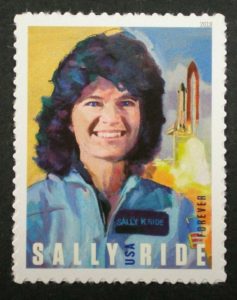
The first U.S. female astronaut in space, Sally Ride made two trips aboard a space shuttle. She later encouraged children to pursue careers in Science, Technology, Engineering and Mathematics (STEM). Ride grew up in California where she was a star tennis player. She attended Stanford University, majored in physics as an undergraduate and also received her masters and doctoral degrees. In 1978, she was one of the first six women selected to train as astronauts. Her first flight was aboard the space shuttle Challenger in 1983. She later served on committees investigating the Challenger and Columbia shuttle tragedies, taught college physics and started Sally Ride Science, to encourage children, especially girls, to pursue STEM careers. She also wrote science-related books for children. Ride has been inducted into the National Women’s Hall of Fame and received the Presidential Medal of Freedom posthumously.
Women participate and contribute to every area of our lives. These women who have been featured on U.S. postage stamps, as well as many other women, almost all of whom we have not heard about nor learned about in school, are profiled in our book, Her Story: A Timeline of the Women Who Changed America.
The post Women on U.S. Postage Stamps appeared first on Kalon Women Collective.
Don’t Sleep on Insomnia: Tips to Help You Get More Sleep 3 Apr 2021 7:51 AM (4 years ago)
Have you ever struggled with sleep? Many people know what it feels like to have jet lag when traveling, or to toss and turn at night when they’re anxious and overwhelmed by life. But how do you know if your sleep problems have turned into insomnia? Read on to find out.
What is insomnia?
Insomnia is a common, yet complex medical condition that can make it hard to fall asleep, stay asleep, or make people feel like they’re not getting the amount of sleep they want. If you have any of these symptoms at least three nights per week for at least three months, you may have chronic insomnia.
Up to 48% of older adults experience insomnia, and Dr. Michael Breus, PhD, a board-certified clinical psychologist and sleep specialist, knows how frustrating it can be to struggle with sleep night after night.
“Unfortunately, in today’s fast-paced, high-pressure world, many adults are unable to get the sleep they need,” explained Breus. “While life events and lifestyle habits may be a factor, it’s important to know that there can also be a physiological component that’s due to a miscue between the sleep and wake systems in the brain. As we age, our sleep cycles change, causing the wake signals in the brain to override the sleep signals. This leaves your brain in an overactive state and could result in insomnia.”
Although insomnia is more common in older adults, it doesn’t have to be accepted as a normal part of aging. Sleep hygiene can help, but sometimes changing habits isn’t enough to improve sleep. You should speak with a health care professional about other ways to tackle your sleep problems.
Tips for better sleep
If you regularly struggle with sleepless nights, follow these tips to help get back on track:
Adjust the lights: For two hours before bedtime, avoid using digital devices because the type of light from computer, television, smartphone, and tablet screens can change your ability to fall asleep and stay asleep. Instead, consider doing something relaxing such as reading a book. Also, at bedtime, the less light in the bedroom, the better. Keep your bedroom as dark as possible while you sleep.
Ignore the clock: Focusing on the sleepless minutes ticking away can cause more concern about being awake. For a simple fix, turn the clock around so you can’t see the time.
Get up and leave the bedroom: Lying in bed worrying about falling asleep may cause your brain to be more active. It may also start to link your bedroom with feelings of frustration instead of sleep. To avoid this, try a relaxing activity in another room, such as reading a book or listening to soothing, instrumental music. When you start feeling sleepy again, go back to the bedroom.
Consider lifestyle changes: Eating and exercise habits can also affect sleep. Try not to eat large meals before bedtime that can cause indigestion and avoid coffee and alcohol within three hours before bedtime. In addition, while exercise is beneficial, you shouldn’t exercise within three hours of going to bed.
Talk to a health care professional: Lifestyle changes might not be enough for some people, so don’t hesitate to talk to a health care professional about your insomnia. They can create a personal plan to help you get more sleep, that may include lifestyle changes, taking medication, or both.
Learn about behavioral therapy: A type of therapy called cognitive behavioral therapy can help you recognize your thoughts, beliefs, and attitudes toward sleep.
Don’t sleep on insomnia. Visit WhySoAwake.com to learn more about sleep and how to work with a health care professional to find an insomnia treatment plan that works for you.
The post Don’t Sleep on Insomnia: Tips to Help You Get More Sleep appeared first on Kalon Women Collective.
6 Tips for Controlling Your High Blood Pressure 3 Apr 2021 7:46 AM (4 years ago)
Did you know high blood pressure (hypertension) is a major risk factor for heart disease and stroke? According to the Centers for Disease Control and Prevention (CDC) and “The Surgeon General’s Call to Action to Control Hypertension,” nearly half of U.S. adults have high blood pressure, yet only 1 in 4 has their hypertension under control.
High blood pressure is called a silent killer, as it frequently shows no signs or symptoms. Uncontrolled high blood pressure puts people at higher risk for heart disease and stroke, which are leading causes of death in the U.S.
Who is at risk? The likelihood of suffering from high blood pressure increases with age, but all adults are at risk. African Americans are more likely than White Americans to have high blood pressure, develop it when younger, and have worse outcomes.
The good news? It is possible to control high blood pressure and reduce your risk of heart attack, stroke and other conditions.
“High blood pressure is dangerous, and unfortunately all too common,” said Janet Wright, M.D., acting director, Division for Heart Disease and Stroke Prevention at CDC. “Regularly checking your blood pressure and working with your healthcare team are vital first steps to help keep your high blood pressure under control.”
In honor of American Heart Month, here are tips for achieving lower blood pressure and supporting your heart health.
1. Get your checkups
If you’ve put off regular wellness exams, take time to catch up. Talk to your healthcare provider about hypertension, especially if you’ve had high blood pressure readings, high blood pressure associated with a pregnancy or family history of hypertension.
For checkups, use telemedicine if available, or communicate with your provider by phone or email.
If you must visit in-person, protect yourself and others.
- Before making an appointment, call your healthcare provider or check their website to see what measures they are taking to keep people safe during the COVID-19 pandemic.
- Cover your mouth and nose with a mask when you must go out in public.
- Do not touch your eyes, nose or mouth.
- Stay at least six feet away from others.
- Wash your hands with soap and water for at least 20 seconds when you get home.
2. Know your numbers
At your next checkup, ask your healthcare provider what your blood pressure numbers are, what they mean, and if you are at risk. If your blood pressure is high or borderline high, ask what actions can help lower your blood pressure.
You can also ask your provider about using a home blood pressure monitor. Learn how to obtain one and use it. Ask your provider about electronic health record portals or other ways to track your numbers and how you can receive clinical advice to manage your hypertension.
3. Take medications as prescribed
Medications are often an important part of blood pressure control plans. Follow your provider’s instructions carefully. If you experience problems getting or taking your medicines, talk with your healthcare team.
4. Make positive lifestyle changes
While medications may be prescribed to help control your high blood pressure, these lifestyle changes may also help:
- Boost your physical activity — Start small, like adding a daily walk
- Eat a heart-healthy diet — Include more vegetables, fruits and whole grains
- Watch your salt intake — Read food labels and choose foods with less sodium (salt)
5. Reduce your stress
Taking care of yourself is always important, especially during challenging times. Stress can contribute to health conditions like high blood pressure, heart disease, diabetes and other illnesses. How can you reduce your stress levels for better health?
- Be aware of stress. Do you have headaches, muscle tension or other symptoms? Observing what causes you stress and how your body responds is the first step.
- Move more. Physical activity can help reduce stress, whether intense exercise or a walk around the block.
- Try relaxation tools. Whether deep breathing, meditation or yoga — relaxation tools can help you let go of stress. Find what works for you!
- Talk to someone. Call a friend or mental health professional. Talking out a problem can help to reduce your tension.
6. Quit smoking
If you smoke, now is the perfect time to quit. According to the CDC, smoking increases your risk of:
- High blood pressure
- Heart disease
- Heart attack
- Stroke
Ask your healthcare provider for support for quitting smoking.
Visit CDC.gov/heartmonth for health tips, blood pressure logs and more.
The post 6 Tips for Controlling Your High Blood Pressure appeared first on Kalon Women Collective.
Have You Joined the Resale Revolution? 3 Apr 2021 7:43 AM (4 years ago)
If you’re a fan of finding deals or saving money, you’re far from alone. Shopping in resale shops and online marketplaces is one of the best ways to thrift shop, and if you’ve never given them a try, now may be an excellent time to start.
The desire to save money, recycle and find unique merchandise has driven the resale market forward in the past couple of decades, and 2020 was no exception. Forty-eight percent of Americans shopped resale during the pandemic, reports local resale marketplace OfferUp, with many motivated to “feather their nests” as they increasingly spent time at home. Resale marketplaces were the fastest-growing retail channel for home products like desks, exercise equipment and electronics, and other top-selling items included beds, mattresses, sofas, rugs, lamps and pillows.
Overall, 58% redecorated during the pandemic to make their surroundings more beautiful, comfortable and functional, contributing to an overall $27 billion increase in home décor spending last year.
Are you interested in finding attractive, useful and fun furniture and home goods at lower prices? Consider these suggestions for mastering the resale shopping trend and scoring great purchases to enjoy as you work, play, learn and exercise at home.
Browse from the comfort of your couch. Shopping online has never been easier now that established venues like OfferUp handle all the busywork. Happily, you can now peruse, compare, buy and arrange to receive most anything with a few clicks of a button. That explains why 56 million Americans bought or sold using OfferUp last year, and one in five spent time shopping the convenient and easy-to-navigate marketplace.
Shop local when possible. Not only do you keep money in your community when you buy from people in your area, but you save money on postage or transport when you opt to pick up items yourself. Further, online payments can make local pick-ups easier and more convenient than ever.
Read the fine print. Before committing to a purchase, take time to scrutinize item descriptions and enlarge provided photos so you have a clear idea of the item’s condition and appearance. Still have questions? Contact the seller and (politely) ask for more details or images. Taking that extra step could save time and frustration for both you and the seller.
Don’t hesitate to make offers. It’s OK (and even somewhat expected) to negotiate on prices when you’re buying from other individuals. But do that respectfully; instead of complaining about merchandise shortcomings or announcing that the asking price is way too high, politely ask the seller whether he or she may be willing to accept a lesser amount.
Follow buying etiquette. Simply put, you should treat sellers as you would like to be treated. Ask and answer questions politely, show up on time for meet-ups and have your payments ready as promised. Thank them for their time, effort and merchandise. Let them know (with plenty of notice) if you’ve changed your mind on a purchase and/or will be unable to meet.
Be mindful about safety. Conduct business through online marketplaces that keep profiles of both buyers and sellers to discourage fraud. When possible, meet up to exchange merchandise at local businesses or law enforcement centers that are busy, brightly lit and monitored by video cameras. You may also wish to make payments through online payment venues that allow for stopped payments in the event of disputes.
Since its 2020 acquisition of resale marketplace letgo, OfferUp is now the largest mobile marketplace for local buyers and sellers in the U.S., with 56 million buyers and sellers transacting last year. Learn more about the fun and convenience of online resale shopping at OfferUp.com.
The post Have You Joined the Resale Revolution? appeared first on Kalon Women Collective.
5 Designer Tips for Transforming Your Home Lighting 3 Apr 2021 7:39 AM (4 years ago)
When it comes to choosing beautiful, functional lighting, the selections can appear endless and may be leaving you with no idea where to start.
If so, you’re not alone. Many homeowners mistakenly believe any fixture will do the same job, when in fact effective lighting design is something of an art. The right lighting elements can make your home more relaxing or energizing, boost your sense of well-being and make daily tasks easier, all while reflecting your personal taste. According to Statista, the desire for such improvements motivated 63% of U.S. consumers to plan changes to their home lighting over 2020-2021.
To assist such forward-thinking homeowners, Erin Hoover, director-design, Luxury Space for Kohler Co., offers the following suggestions on choosing ideal home lighting.
Factor in function. Ask yourself what you’d like your lighting to accomplish in the room you’re addressing. How is the room used? Do you need a main source of illumination for the space, or do you need to supplement that with decorative accents? Where do you need direct and indirect light?
Consider existing architecture. Even if you like an eclectic look (Pinterest and Instagram can be inspiration), you’ll want to at least partially align each fixture with the rest of your space in terms of form, line and/or color. In general, high ceilings work well with pendants, chandeliers and linear-style lighting and lower ceilings work better with flush or semi-flush fixtures and sconces. Your furniture layout may guide placement of chandeliers, linear style designs or pendants.
Stay savvy in the kitchen. Since most kitchens feature multiple light sources, Hoover recommends designating one fixture as your statement or focal piece, then choosing other functional and decorative accent pieces that align. “The other lighting doesn’t have to match, but should be a little simpler,” she says. “Make sure it’s the correct scale for your space and ceiling height,” Hutton continues. “Pendant or linear lighting is a good choice for kitchen islands and bars, and mixed metals are on trend with or without black or white accent finishes.” For added design flexibility, she notes, choose lighting that can be raised or lowered to easily adjust the height above bar areas, counters and islands. KOHLER Lighting also exclusively offers finishes that perfectly color match Kohler and Kallista fixtures and faucets.
choosing other functional and decorative accent pieces that align. “The other lighting doesn’t have to match, but should be a little simpler,” she says. “Make sure it’s the correct scale for your space and ceiling height,” Hutton continues. “Pendant or linear lighting is a good choice for kitchen islands and bars, and mixed metals are on trend with or without black or white accent finishes.” For added design flexibility, she notes, choose lighting that can be raised or lowered to easily adjust the height above bar areas, counters and islands. KOHLER Lighting also exclusively offers finishes that perfectly color match Kohler and Kallista fixtures and faucets.
Introduce style to your bathroom. Depending on your daily routines, you may want your bath to offer both bright, functional lighting (for grooming) and mood lighting (for relaxation). Popular layouts feature 7- to 9-inch sconces mounted on each side of a vanity mirror, or a larger single sconce placed on the wall overhead. In powder rooms where steam isn’t an issue, Hoover likes decorative Kohler sconces that feature linen-look woven shades; she also recommends installing dimmer switches. “If you have the ceiling height, I love a chandelier in a bathroom,” she adds. “A 20- to 24-inch chandelier may be better than a 30- to 36-inch one unless you have a very spacious bath with a ceiling height of more than nine feet. A larger pendant of 15 to 18 inches makes a statement over a freestanding tub if ceiling heights allow.”
Fit out your foyer. Hoover recommends considering the height and depth of these important, first-impression rooms before deciding on the pendant, pendant cluster or chandelier that will make the right statement. “A single pendant can look stunning in a foyer that’s nine feet wide, whereas a 36-inch chandelier or two-tier chandelier is perfect in a grand foyer,” she advises.
Since your lighting design is so important to the beauty, functionality and overall mood of your home, it should never be an afterthought. Take time to choose from the wide variety of bright, beautiful styles available, then invest in the fixtures that will truly transform your living spaces. Find more information about KOHLER Lighting at us.Kohler.com.
The post 5 Designer Tips for Transforming Your Home Lighting appeared first on Kalon Women Collective.
4 Easy Ideas to Enhance Your 2021 Garden 1 Mar 2021 8:05 AM (4 years ago)
Gardening enthusiasm is surging thanks to our increased time at home — whether on a small-space patio or in a larger backyard. In fact, people spent 42% more time gardening in 2020 than the year before, according to Axiom Marketing’s 2021 Gardening Insight Survey, and it is estimated the pandemic contributed to creating nearly 20 million new “gardeners.” Many experts agree the trend toward nurturing flowers, plants and vegetables will continue into 2021 and beyond.
If you’re looking to test your new green thumb or bring this year’s garden to the next level, consider these top trends and simple ideas from the experts at Ball Horticultural Company:
The year-round fresh and healthy garden
Gardening can provide fresh access to produce that can help encourage healthy eating. You can feel confident knowing exactly where your food comes from and enjoy the satisfaction of growing it yourself. Plus, it doesn’t get fresher than picking something from your own garden just minutes before preparing a dish.
You don’t need an expansive garden to enjoy the many benefits of fresh, healthy vegetables and herbs. In fact, you don’t need a garden at all! Check out Kitchen Minis from PanAmerican Seed® and enjoy a variety of peppers and tomatoes that can be grown inside on a sunny windowsill, countertop or outside as patio tabletop plants. You can grow and harvest your own Kitchen Minis flavors most of the year.
The multi-purpose flower and herb garden
Don’t be afraid to mix your flowers and herbs. Trending in 2021 is bundling your plants together to save space and make a multi-functional showcase. Start with a tiered fruit stand, line it with coco liner cut to fit inside each bowl space, and then add soil and plants of your choice. The handle and lightness of the stand make it easy to hang as a basket or decorate a patio or table for a beautiful and functional addition wherever you garden.
Be sure to select plants that have a lot to offer in a compact space. For example, herbs from Burpee Plants are ideal for small gardens, so you can enjoy fresh flavors like mint, rosemary and parsley at a moment’s notice. If you’d prefer a centerpiece or accent decor for entertaining, petunias from Wave® Petunias are low-maintenance and stunning, easily adding a punch of color to your container.
The beautiful garden for a bold and colorful outdoor living space
As people spend more time enjoying the outdoors from the safety and comforts of home, they are taking a new look at their exterior spaces. Colorful blooms brighten the outdoors and elevate the mood, which is why flower gardening is flourishing. However, people want this outdoor beauty without extensive maintenance, so ease is essential when planning your flower garden.
When it comes to pairing beauty and simplicity, Beacon® Impatiens are a great choice, especially for those whose outdoor spaces don’t get a lot of sun. Available in bright, bold colors, you can fill baskets, window boxes, patio containers and shade landscapes with Beacon to add vivid, dramatic color to your spaces and have confidence in their performance. These impatiens are low-maintenance and have high resistance to Impatiens downy mildew, a disease that has caused plant loss in recent years.
The fun family-friendly garden
Having a family garden comes with many benefits. Whether it’s you and your partner at home or the entire family, gardening has proven to be a fun and safe hobby that people of all ages can do together. Enjoy spending quality time while breathing fresh air and learning important lessons from nature and the environment.
Gather everyone’s input on a plan for your family garden and work together as a team to make it a success. One plant that’s particularly fun for families to include is Lavender Primavera from Darwin Perennials. The rich purple color is visually stunning, plus lavender attracts pollinators like bees, butterflies and hummingbirds, so you’re enhancing the natural world around you. Additionally, you’re sure to enjoy the relaxing scent wafting in the breeze, and you can harvest your lavender to use in DIY craft projects around the house or as gifts to loved ones.
Start growing today
The ability to explore interests like gardening and plant care is a silver lining of spending more time at home. Gardening is a healthy activity for anyone, and there are many resources — from your local gardening store to online blogs and videos — to help you be successful. 2021 is your chance to dig in and grow!
The post 4 Easy Ideas to Enhance Your 2021 Garden appeared first on Kalon Women Collective.
Best Ways to Personalize Your Workspace and Stay Organized 1 Mar 2021 8:03 AM (4 years ago)
Whether you’re working remotely, heading into the office, or a hybrid of the two, your workspace is probably looking a little different these days. Now more than ever, it’s important to make your space feel like your own and stay organized with personal touches.
Fortunately, with a few simple steps you can have a workspace that is clean, functional and full of style no matter where you are.
Curated organization: Desk clutter can reduce productivity and create more stress throughout the day. It’s important when organizing your space to group like-minded items together so you always know where they are. What’s more, keep frequently used items by your dominant hand so you can quickly get what you need without missing a beat. Use Noted by Post-it® Acrylic Accessory Trays for pens and pads. Need a place to file papers and other documents? File away with colorful Noted by Post-it® Folios with elastic bungees, keeping everything in its place.
Colorful reminders: Color-coding is great for work organization as well as organizing family to-dos. Noted by Post-it® Planner Dots are a colorful way to keep tabs on your activities and projects. Use them for list making, task reminders or a colorful way to check off. For easy reference and reminders, use Noted by Post-it® Tab Notes on your lists and in your notebooks. And finally, grab a handful of colorful Noted by Post-it® Pens to jot down all your reminders and to-dos.
Think vertical: If your space is small or you’re trying to rethink workflows, explore the potential of vertical spaces. White boards, pin boards or chalk boards can be hung on walls for planning or visual inspiration. Add shelving to help open desk real estate, giving you room to work without clutter, especially useful in small or unique spaces.
Make new habits: Plan your day with intent and use Noted by Post-it® Notebooks for bullet journaling or notetaking. List to-dos and action items to meet your goals with Square Notes and use Weekly Planner pads, marking off each task and to-do. A great way to get ahead of the next day is to plan priority tasks the night before so you can hit the ground running in the morning.
Add art: Your workspace should reflect your personality; consider adding in artwork and photography that match your curated style — but don’t forget, less is more. One key piece of artwork complemented by a family portrait adds a personal touch without unnecessary clutter that starts to look untidy.
Organize your computer desktop: It’s not just your actual desktop that needs organizing, your computer’s digital desktop could use some attention, too. Start by choosing a fun background and screensaver to personalize your technology. Then, go through desktop files, icons and documents and organize what you need into appropriate folders and delete what you don’t.
A few simple steps and you’ll transform any office into a functional and fun space that reflects your personality with style. To learn more and discover other useful tips, visit www.Post-it.com/noted.
The post Best Ways to Personalize Your Workspace and Stay Organized appeared first on Kalon Women Collective.
3 Top Strategies to Keep Bones Strong 1 Mar 2021 8:00 AM (4 years ago)
Healthy bodies need healthy bones. Bones support our weight, protect our internal organs and provide a platform for our muscles to work. Unfortunately, we don’t always treat our bones right. There are many common behaviors or attributes that weaken the skeletal structure, including:
- Smoking
- Drinking alcohol in excess
- Lack of exercise / sedentary lifestyle
- Too much exercise
- Diets low in protein and high in salt
- Genetics
While bad habits aren’t good for anyone’s bones, they are particularly concerning for people with osteoporosis or those who are at higher risk for the condition. Osteoporosis is a general weakening of bone structure that leaves a person at a much higher risk of fracture. It’s typically associated with postmenopausal women; however, osteoporosis can affect men as well. While the Centers for Disease Control (CDC) reports 24.5% of women 65 and older have the disease, the same is true for 5.1% of men in that age bracket. Essentially, everyone reaches peak bone development around age 30, and bone mass slowly declines as you age.
“Healthy bones come from the right exercise and diet,” says Leslie Bonci, registered dietitian and consultant for the California Prune Board. “The good news is, the ‘right’ exercise can be fun, and a bone-friendly diet is loaded with delicious things to eat!”
Here are three simple strategies for keeping bones strong.
1. Moderate exercise
The National Institutes of Health (NIH) recommends a moderate regimen of weight-bearing exercise to support your bones. While the emphasis is on moderation, overdoing your exercise can lead to injuries that leave your bones in worse condition. Popular weight-bearing exercises include walking, hiking, jogging, stair climbing and dancing.
The NIH also recommends resistance exercises, or more often referred to as strength training. Every time you lift a weight, a small amount of stress is placed on your bones by your muscles. This stress essentially encourages bone-forming cells to hurry up and get to work.
2. Modify your diet
Even with the right exercise a bone-supporting diet is important. Calcium and Vitamin D are the most familiar essential nutrients, and they are certainly a powerful combination, but, other nutrients are also needed to effectively build bone density.
For starters, you need between 0.4 and 0.9 grams of protein per pound of body weight per day. You also need plenty of fruits and vegetables, which are rich in bone-forming minerals like boron, manganese, magnesium, potassium and zinc. It is important to focus on getting these minerals from veggies and fruits, as mineral supplements are generally less beneficial.
One fruit particularly rich in bone-building minerals is California Prunes. Not only do prunes provide boron and manganese, they’re also rich in Vitamin K — another nutrient fundamental for bone mineralization. In fact, California Prunes have been of interest to bone health researchers for several years.
“We’re seeing an exciting ‘prune effect’ on bones,” reports Dr. Bernard Halloran, bone health researcher and Professor Emeritus at the University of California San Francisco. “In a variety of unique research scenarios, California Prunes are consistently associated with a favorable bone response.”
Bonci agrees, explaining that prunes are a whole food approach to healthy eating, as well as being readily available, economical, safe and – by all indications – effective in supporting healthy bones. They’re also an easy-to-carry snack, and a versatile ingredient perfect for both sweet and savory recipes.
3. Maintain a healthy weight
Keeping your weight at a healthy level is particularly important for bone health. A low body mass index score (BMI) is considered a significant risk factor for bone loss, particularly in older people. This is because when a person is underweight, their body has fewer available resources for repairing bone.
Conversely, a high BMI due to excess body fat has also been shown to be detrimental to your bones. The risks with high BMI are potential strain and fracture due to an over-taxed skeletal structure. To best determine what a healthy weight is for you, talk to your doctor.
Anyone’s bones can weaken over time, but, through healthy habits you can limit your risks of potential bone damage. So, the next time you go for a pleasant walk through your neighborhood or enjoy some sweet California Prunes, be proud of yourself. You’re on the right track for keeping your bones strong.
The post 3 Top Strategies to Keep Bones Strong appeared first on Kalon Women Collective.
5 Tips for Financial and Retirement Planning in 2021 1 Mar 2021 7:53 AM (4 years ago)
The past year has presented countless challenges, and for many, a reassessment of goals — especially when it comes to finances. A new survey shows attitude shifts including a renewed effort to gain control of finances, especially through increased saving and getting professional advice.
Even Americans who did not lose work lost a sense of confidence in the economy. The survey by Harris Poll for Empower Retirement and Personal Capital reveals a change in attitudes about finances from April — as the pandemic’s effects were beginning — to December of 2020. Despite the stock market rallying after the initial lockdowns, only 22% of survey respondents from December said they felt optimistic about their finances, as compared with 29% from the April survey.
With the turmoil of the last year, 2/3 of respondents said they were bracing for financial pain in the event of future lockdowns, with 44% concerned about losing money on investments. Reacting to uncontrollable world events, one theme emerged: People want to feel more in control of their own finances, whatever comes next.
These retirement planning tips can help you feel more confident financially, no matter your circumstances.
1. Save what you can
There’s no better buffer against unexpected emergencies — anything from car breakdowns to job loss — than an emergency fund. Financial professionals recommend saving at least three to six months of expenses to be prepared for emergencies.
Sound daunting? Start small, and consider setting up automatic deposits into a savings account with each paycheck, to save without thinking about it. Even a few dollars per pay period can add up over time.
2. Invest in your family’s future
According to the survey, parents are concerned about the pandemic’s impact on their children’s education, but many believe the crisis will lead to a fundamental shift in higher education. Nearly 6 out of 10 (59%) expect student loan debt forgiveness to become more common, and half believe the pandemic will make higher education more accessible in the long term.
If your children are college bound, have a conversation with a financial professional or your child’s high school guidance counselor about how financial aid works and what strategies may benefit your family. If you have young children, look into a 529 college savings plan in your state, which can provide both tax and financial benefits.
3. Don’t forget retirement
Whether you’re approaching retirement age soon or it’s years away, consider taking full advantage of your employer’s matching funds for your 401(k) contributions. Ask your HR department about how to fully utilize all your available employer retirement benefits, and increase your retirement savings percentage now if you can. Your future self will thank you.
4. Consider your HSA account as part of your retirement strategy
If your company offers a health savings account (HSA), remember that any unused funds can be saved up to be used during your retirement — adding to your future financial stability. When you do need your HSA for medical expenses, check with your employer to see how it can best be used. An HSA can help pay for qualified medical expenses including prescriptions, medical tests and treatments, including many vision and dental expenses.
5. Consult a professional
Given the turmoil of 2020, Americans are focusing on fundamentals: cutting spending, increasing savings and safeguarding investments. Over half the survey respondents sought financial guidance related to the election. As uncertainly continues, an increasing number are seeking professional help to make financial decisions and plans.
“A good financial professional can provide not just advice on saving and investing, but financial wellness recommendations on everything from building a budget and starting an emergency fund to managing debt,” said Edmund Murphy, president and CEO of Empower Retirement.
A financial professional can help you set priorities and find the best vehicles for protecting and growing your money. Ask your employer if your retirement plan provider offers financial advice through virtual sessions or phone calls with a professional. You may also be able to access digital tools that help you calculate how close you are to your retirement goals, along with ways to monitor your investments.
For more tips about financial planning, visit Empower-retirement.com/empower-insights.
The post 5 Tips for Financial and Retirement Planning in 2021 appeared first on Kalon Women Collective.
Shingles Kept Me in the Dark, Literally: What Everyone 50-Plus Needs to Know About Shingles 1 Mar 2021 7:50 AM (4 years ago)
At age 57, journalist, songwriter and Maryland resident Alice was getting ready for her wedding and writing her first musical when she contracted shingles.
“I love to write songs, play piano and sing. A few days before the Fourth of July, I woke up with a tingling sensation in my eye and the worst headache I’d ever experienced.”
Alice saw her ophthalmologist but was sent home without a diagnosis. Her headache continued to intensify to the point where she went to the emergency room and was diagnosed with a migraine. “I was so frustrated because I’d never felt excruciating pain like this before and I was scared because no one could tell me what was wrong.”
When the pain still didn’t subside, she returned to the emergency room, only to be sent home again with a migraine and pain medication. Two days later, she developed a rash on her forehead and her primary care physician diagnosed her with shingles.
Anyone who has gotten chickenpox is at risk of contracting shingles, also known as herpes zoster.[1] When chickenpox becomes dormant within the nerves, it can reactivate later in life, causing shingles.[2] Shingles typically presents as a painful, itchy rash that develops on one side of the body and can last for two to four weeks.[3]
“In addition to the pain, my eye was extremely sensitive to light,” said Alice. “I spent most of the next few months hiding in my darkened room, which was not like me.”
Other complications of shingles include scarring, vision complications, secondary infection and nerve palsies.[4] She continued to see specialists to treat ongoing symptoms. “One doctor said, ‘The pain could go away, or it might not.’ I was devastated,” added Alice.
In order to cope with her condition, Alice wrote a musical with 16 songs about her experience with shingles called My Beautiful Darkened World.
“The pain of shingles was overwhelming, but the feelings of isolation were intolerable,” said Alice, “I dealt with shingles the only way I knew how — by writing songs about my experience.”
Before her diagnosis, she didn’t think shingles was a concern for a healthy person her age. She didn’t know that the disease was more common than she thought, with approximately one in three people in the United States at risk for shingles in their lifetime.[5]
Alice learned firsthand that shingles doesn’t play favorites. After living with shingles-related eye complications for six months, Alice returned to good health and made it a priority to get vaccinated to help prevent shingles.
As a GSK spokesperson, Alice has now dedicated herself to educating others about shingles. “I’m doing everything I can to help others understand that if you’re age 50 or over, chances are that you may be at risk for developing shingles.”
If you’re 50 years of age and older, talk to your doctor about vaccination against shingles. Vaccination will help reduce the risk of developing shingles and the potential long-term pain from post-herpetic neuralgia, a common complication caused by the disease.
For more information, visit www.ShinglesDoesntPlayFavorites.com.
This is one person’s experience; other people’s experience with shingles may be different.
Content sponsored by GSK.
[1] CDC. Shingles (Herpes Zoster). About Shingles (Herpes Zoster). Available at: https://www.cdc.gov/shingles/about/index.html
[2] CDC. CDC Recommends Shingles Vaccine Press Release. Available at: https://www.cdc.gov/media/pressrel/2008/r080515.htm
[3] CDC. Shingles (Herpes Zoster). Signs & Symptoms Available at: https://www.cdc.gov/shingles/about/symptoms.html
[4] Nair PA, Patel BC. Herpes Zoster (Shingles) [Updated 2019 Nov 22]. In: StatPearls [Internet]. Treasure Island (FL): StatPearls Publishing; 2020 Jan-. Available from: https://www.ncbi.nlm.nih.gov/books/NBK441824/
[5] CDC. Vaccine Information Statements (VISs). Live Shingles VIS. Available at: https://www.cdc.gov/vaccines/hcp/vis/vis-statements/shingles.html
The post Shingles Kept Me in the Dark, Literally: What Everyone 50-Plus Needs to Know About Shingles appeared first on Kalon Women Collective.
Is It Allergies or COVID-19? 7 Symptoms to Watch 1 Mar 2021 7:46 AM (4 years ago)
COVID-19 is complicating the 2021 spring allergy season. From watery eyes to dry coughs, people are left wondering exactly what their symptoms mean.
“Many people are asking about the differences between COVID-19 and seasonal allergies,” says Dr. Luz Fonacier, president of the American College of Allergy, Asthma and Immunology (ACAAI). “While it isn’t always cut and dried, there are some clear differences. Certain symptoms are only seen in one or the other.”
If you are unsure what is ailing you, Fonacier suggests checking with a professional. “Allergists are the best trained medical professionals to diagnose and treat allergies and asthma,” she said. “When in doubt, talk to an allergist.”
To help shed some light on the differences between COVID-19 and spring allergies, here are seven common symptoms and their possible causes.
1) Coughing, chest tightness and shortness of breath are the calling cards of COVID-19. Unfortunately, these symptoms may also indicate an asthma-like allergic response. Many people who suffer from asthma also have allergies. If you are coughing this spring, consider the context. Is shortness of breath something you have experienced during previous springs? Do you have additional symptoms, like fever or itchy eyes? The answers to these questions will help you distinguish the root cause.
2) Fever does NOT occur with spring allergies. Fever may indicate COVID-19, the flu or — more rarely — the common cold. The combination of fever, coughing, shortness of breath and loss of smell or taste is a strong indicator of COVID-19 and must be taken seriously.
3) Chills happen when the blood vessels in your skin constrict, causing you to feel cold without an obvious cause. Allergies do not cause chills, but COVID-19 does. If you are experiencing mild chills it is a good idea to self-isolate as a precaution. If you are experiencing chills in combination with shortness of breath, call your doctor to see if you should be tested for COVID-19.
4) Sneezing and runny nose are rarely seen in COVID-19 cases. They are, however, very common for allergy sufferers. If the spring has left you sneezing and sniffling in the past, then seasonal allergies are still the most likely culprit in 2021. You can talk to a board-certified allergist about treatment options, which may include over-the-counter or prescription medication, or immunotherapy.
5) Itchy, watery eyes are the signature symptom of seasonal allergies. COVID-19 does not cause itchy eyes, but the practice of staying home may help by reducing your exposure to pollen. Avoidance, or the strategy of staying away from potential allergens, may help decrease symptoms. If avoidance is not cutting it, it may be time to speak with an allergist. The ACAAI makes connecting with an allergist simple on their Find an Allergist page.
6) Loss of smell or taste is another very common symptom of COVID-19. While allergies may lead to mild loss of smell, it is best to be on the safe side while the coronavirus is still spreading. If you experience this symptom, call your doctor for advice.
7) Nausea or vomiting are not allergy symptoms. They may indicate the common cold, the flu or COVID-19. If this symptom is mild then self-isolating is a good course of action. If it becomes severe, and particularly if it is accompanied by fever and shortness of breath, you should call your doctor. They will be able to advise you on whether to get tested or seek medical help.
Understanding the differences between COVID-19 and seasonal allergies is key to keeping healthy this spring. Stay on top of the season by knowing your symptoms and knowing what is typical for you. If you have any questions or want to get started finding allergy relief, check out the resources ACAAI has to offer.
The post Is It Allergies or COVID-19? 7 Symptoms to Watch appeared first on Kalon Women Collective.
5 Tips for Successful Online Dating Over 50 1 Mar 2021 7:40 AM (4 years ago)
Whatever your dating life was like before the pandemic, it’s most likely changed due to the circumstances at hand. Thankfully, many online-dating platforms are rising to the occasion, providing secure and safe ways for people to connect. In turn, singles everywhere are getting creative, figuring out how to learn more about each other before meeting in person.
For example, Bumble, the women-first dating and networking app, offers its community the opportunity to video chat or voice call potential dates. Even as pandemic lockdowns first began nationwide, video calls on the platform increased nearly 70% from mid-March to early May.
Here are some tips for mastering the art of virtual dating and navigating in-person dating over 50 first steps.
1. Switch up your means of communication
Doing one video call after another is exhausting. Break up how you regularly interact with potential dates. Suggest a voice call one day, video chat another day, or stick to texting during the week. You can also spare your thumbs the trouble and leave an audio message, which is available on various messaging services and platforms.
2. Don’t treat virtual dates like job interviews
While it’s common to ask questions about your date’s life, there are ways you can interact without making it seem like a job interview. If there’s ever been a time to get creative with date ideas, it’s now.
Hop on a video chat, throw on your chef’s hat, cook the same meal from home, and compare the results for some friendly competition. Feeling lazy? Order takeout from the same restaurant.
You can also offer a virtual tour of your place and ask to see theirs — or for less pressure, have them show you their view out the window, or ask them to introduce you to their dog or cat.
3. Set time limits
If you have several hours on your hands, trying to fill the void with conversation can be daunting — and awkward. Instead, set expectations and boundaries by saying, “I only have a half-hour to chat today” (with no excuse required). Once the time is up, you can politely excuse yourself.
Not only does this give you an escape hatch if things aren’t going well, but it also gives you a break — and a chance to mull things over before you divulge every secret you’ve had since sixth grade if things are going great!
4. Have “the COVID talk”
At some point, especially if you want to meet in person, it’s necessary to discuss your level of comfort with social distancing. To avoid making the other person feel defensive, put it in terms of your lifestyle. Explain what health precautions you take, such as mask-wearing and avoiding crowds.
Everyone is going to have a different comfort zone. You don’t need to apologize – you just need to be a good communicator. Make sure you’re on the same page as your date before deciding to meet in real life.
5. Plan a socially distant first date (or two, or more)
If you’ve ever seen a Jane Austen adaptation, you know that dating in the 19th century was all about taking walks. It seems like a good time to revive that fad!
Too cold for a walk? Maybe you can go ice skating or skiing. If you’d prefer to connect over a conversation during a more low-key date, bundle up or meet at a semi-sheltered location like an outdoor market. Just keep your distance from crowds — and keep that mask on.
At the end of the day, don’t take dating too seriously. Dating is a form of exploration — it’s supposed to be something that adds to your life. Take a break if you need it. And when you get back to swiping, you’ll bring a more confident self to the table.
The post 5 Tips for Successful Online Dating Over 50 appeared first on Kalon Women Collective.
Presidential Cabinet Firsts 1 Mar 2021 7:32 AM (4 years ago)

Janet Yellen became the first female Secretary of the Treasury upon her confirmation in January 2021, as part of the Biden administration. In 2014, Yellen also made “Her Story” when she was confirmed as the first female chair of the Federal Reserve. Yellen follows in the footsteps of other firsts in the cabinet. Let’s learn about a few of them.
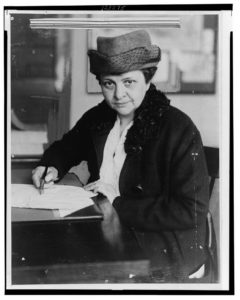
The first female to serve in the Presidential Cabinet, was President Franklin D. Roosevelt’s (FDR’s) Secretary of Labor from 1933-1945. After graduating with a degree in chemistry and physics, and unable to find a job in social work, Perkins moved to Chicago and became very active at Hull House, a settlement house for recent immigrants. Her interactions with the poor and unemployed there led her to find her life’s calling. After receiving her master’s degree in social work at Columbia University (in New York City), Perkins stayed in New York and saw the devastation and death caused by poor labor conditions at the 1911 Triangle Shirtwaist Fire. A political appointee in New York State while FDR was governor, she was appointed to his Cabinet where she oversaw the establishment of the Social Security Administration. Perkins, who has been inducted into the National Women’s Hall of Fame, said “I came to Washington to work for God, FDR, and the millions of forgotten, plain common workingmen.”

The first female Secretary of Commerce, Juanita Kreps grew up in a poor coal-mining community in Kentucky. A pioneer for women, Kreps broke many gender barriers and focused her research as a professor at Duke University on the labor demographics of women and older people. The first female director of the New York Stock Exchange, Kreps led trade missions and, as Secretary of Commerce, led the negotiations that opened trade with China. When she was named Secretary of Commerce in 1976, she openly disagreed with President Jimmy Carter when he indicated that it had been hard to find a qualified woman to fill the position. Kreps received her undergraduate degree from Brea College and both graduate degrees from Duke University.

Patricia Roberts Harris was also a woman who broke many barriers. She was not only the first African-American woman to serve in the Cabinet, she was the first to serve as a U.S. Ambassador and the first to lead a law school. After Harris graduated from George Washington University Law School first in her class, she was a law professor and lecturer, and in 1965, was appointed U.S. Ambassador to Luxembourg. She then led the Law School at Howard University before practicing law privately. In 1977, President Jimmy Carter selected her as the Secretary of the Department of Housing and Urban Development. She later became Secretary of what later was called the Department of Health and Human Services. During a confirmation hearing when asked if she could relate to the clientele of the Department she would be heading, she said “Senator, I am one of them. You do not seem to understand who I am. I am a black woman, the daughter of a dining-car worker . . . If my life has any meaning at all, it is that those who start out as outcasts can wind up as being part of the system.” Harris has been inducted into the National Women’s Hall of Fame.

Born in Salisbury, North Carolina in 1936, Elizabeth Hanford Dole has been a U.S. Senator (North Carolina’s first female senator), Secretary of Transportation, Secretary of Labor, and head of the American Red Cross. Dole received her undergraduate degree at Duke University and her law degree from Harvard University. She worked for in the White House for many years before being named Secretary of Transportation (the first woman in this role). She was selected as Transportation Secretary by President Reagan in 1983. She later served as Secretary of Labor for President George H.W. Bush. In 2002 she was elected to the U.S. Senate representing North Carolina and served one term. During her tenure she became the first woman to chair the National Republican Senatorial Committee. Dole has been inducted into the National Women’s Hall of Fame.
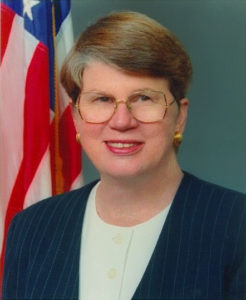
The first woman to serve as U.S. Attorney General, Janet Reno was named by President Bill Clinton in 1993. Her reputation was established during the years she spent as an attorney and country prosecutor in Florida. A graduate of Cornell University and Harvard Law School, Reno launched programs as Attorney General to keep non-violent drug offenders out of jail and to ensure that the rights of criminal defendants were honored. Reno launched an anti-trust suit against Microsoft during her 8-year tenure. She has also been inducted into the National Women’s Hall of Fame.
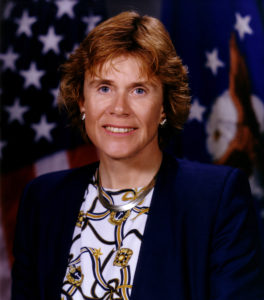
The first female Secretary of the Air Force and the first woman to lead an entire military branch in the Department of Defense, aeronautical engineer Sheila Widnall was appointed by President Bill Clinton in 1993. Widnall received all three of her degrees from MIT; she was named an Institute Professor in 1998. Her research has focused on fluid dynamics, especially in the areas of aircraft turbulence and spiraling airflows. In addition to her election to the National Academy of Engineering and numerous other awards, Widnall has been inducted into the National Women’s Hall of Fame.

The first female Secretary of State, Madeleine Albright graduated from Wellesley College in 1959 in political science. She was able to attend as she had been given a full scholarship. After receiving her master’s and Ph.D. degrees, Albright rose through political circles in Washington, D.C. becoming congressional liaison to the National Security Council in 1978. In 1982, she began her affiliation with Georgetown University. Her return to government service occurred in 1993 when Bill Clinton named her Ambassador to the United Nations. In 1997, he named her the first female Secretary of State. Today, she consults worldwide on matters involving nations and has written a number of books. Among her many honors, Albright has been inducted into the National Women’s Hall of Fame.
Women participate and contribute to every area of our lives. These women who achieved political firsts, as well as many other women, almost all of whom we have not heard about nor learned about in school, are profiled in our book, Her Story: A Timeline of the Women Who Changed America. Help us by continuing to tell women’s stories. Write women back into history! Tell young women especially, that their dreams in any field of endeavor or interest, can become a reality.
The post Presidential Cabinet Firsts appeared first on Kalon Women Collective.
Wolfgang Puck’s Roasted Rack of Lamb with Pistachio Sate Sauce 1 Feb 2021 7:10 PM (4 years ago)
Celebrated chefs Wolfgang Puck, Nancy Silverton, Gerald Hirigoyen and Martin Yan are known and active the world over, but they all call California home. For their award-winning restaurants, product lines, cookbooks and TV shows, they draw inspiration from the bountiful fresh ingredients the Golden State has to offer.
“California is my favorite place in the world to cook,” said Puck. “The climate is such that we can get the best ingredients — the freshest produce, fish, nuts — with so much flavor.”
It’s this same culinary opportunity that drew French-born Hirigoyen, the chef and owner of Piperade in San Francisco, to California. “The food revolution — knowing where food comes from, how nutritious it is, and supporting the people who grow it — was happening in California, so I came to progress, and with all we have available, continue to progress.”
One California crop that has captured these chefs’ collective imagination of late? Pistachios.
“I find their flavor and crunch irresistible and I love the color,” said L.A.-based chef Silverton. “It’s really easy to add pistachios to almost anything you make. Their flavor enhances other ingredients so well, but they can also be the star of a dish.”
“The great thing about pistachios is they are just the right size, and they add flavor, color and texture to your dish, on top of all the nutritional benefits,” said Yan.
Long a popular snack, the trend of using pistachios for cooking appears to be spreading beyond California. American Pistachio Growers, the trade organization of pistachio farmers in the western United States, reports the sale of pistachio kernels, or unshelled nuts, domestically has risen 14%, and represents 22% of all pistachio sales. Representatives cite the reason as a combination of the increase in people preparing meals at home since the outbreak of COVID-19, and the desire for healthy ingredients.
Pistachios are nutrient-dense and high in protein. Earlier this year, pistachios earned the status of being a “complete protein,” making them popular among people following a plant-based diet. In July, a university study underscored the importance of pistachios as part of weight-loss programs.
With the world’s top chefs adding more pistachio-inspired dishes to their menus, the little green nut is suddenly red hot. But don’t worry about there being a shortage. This year’s American pistachio harvest yielded a record-setting one billion pounds.
Wolfgang Puck’s Roasted Rack of Lamb with Pistachio Sate Sauce
Yield: 6 to 8 servings
Pistachio Sate Sauce:
1 cup / 230 g coconut milk
1/4 cup / 60 g lime juice, freshly squeezed
1/4 cup / 60 g pistachio butter*
1 tbsp. / 16 g soy sauce
1/4 cup / 5 g cilantro
1/4 cup / 13 g green onions, minced
2 tsp. / 30 g Aleppo chiles, or another mild citrussy chile
Method:
In a small saucepan combine coconut milk and lime juice. Heat over medium heat, whisking constantly until coconut milk is hot and aromatic. Transfer to a blender and add remaining ingredients. Adjust seasonings to taste and set aside.
Rack of Lamb:
2 each lamb racks, frenched
Olive oil, as needed
Kosher salt, as needed
Black pepper, freshly ground, as needed
1/2 cup / 170 g pomegranate syrup
Method:
Rub all sides of lamb racks with olive oil, salt and pepper. Place on a baking sheet and drizzle pomegranate syrup across the top of each rack and even out across surface with a pastry brush.
Roast in a preheated 450°F (232°C) oven for 15 to 20 minutes for rare/medium rare, or longer depending on preferred doneness. Remove from oven and let rest for 10 to 15 minutes.
Assembly:
Cut lamb racks between the bones into individual chops. You can plate the lamb on individual plates or a platter. Using your own presentation style, fan sweet potatoes or other vegetable on both sides of plates or platter, arrange 2 chops per person, drizzle Pistachio Sate onto plate, drizzle pomegranate syrup on top of the vegetable and sprinkle with a generous amount of pistachios, finish with a few sprigs of fresh cilantro.
*Pistachio Butter:
2 cups / 250 g pistachios, roasted
1/4 to 1/2 cup / 55 g – 110 g grapeseed oil
1/4 tsp. / 1 g sea salt, optional
Method:
Scoop pistachios into a food processor and run for 60 to 90 seconds. Open the processor and scrape the sides. Run for another 60 to 90 seconds. Scrape down the sides and continue processing. Slowly drizzle oil as needed into the butter as it’s processing until you achieve the texture and consistency you prefer. Add optional sea salt and pulse to combine.
Transfer butter to a container with a snap-on lid. Refrigerate if holding the butter for more than a few days.
Equipment Needed: Blender, baking sheets, small saucepan, whisk and pastry brush.
The post Wolfgang Puck’s Roasted Rack of Lamb with Pistachio Sate Sauce appeared first on Kalon Women Collective.
This Valentine’s Day, Discover Your Language of Love 1 Feb 2021 7:08 PM (4 years ago)
No topic gets the heart pumping like love. And despite plenty of advice from experts, not everyone shows affection in the same way. This Valentine’s Day, why not try to communicate with your paramour like you never have before? Instead of saying “I love you,” say “je t’aime” or “ich liebe dich” instead — show your special someone that you love them in another language!
If you’re not too savvy with languages, but you still want to do something amazing this Feb. 14, there are still plenty of ways to express your feelings. Here are fun, creative tips on showing your passion this Valentine’s Day holiday.
1. Celebrate your loved one’s travel dream
Maybe your sweetheart has been saving up to visit Machu Picchu in Peru. Perhaps they can’t wait to float down the Danube River in Europe or climb Mount Fuji in Japan. While you may not be able to make these dream trips a reality right now, you can take time to learn more about the places your loved one wants to visit — and how you’d get there if you had the chance.
Plan out an imaginary trip with the object of your affection, all the way down to what sites you’d visit after arriving at your destination. Take things a step further by gifting your loved one with an immersive language program. This will help them prepare for future international adventures!
Rosetta Stone is a convenient language-learning software that allows you to see, hear, speak, read and write while learning new words and phrases, right on your desktop, laptop, tablet or phone. Rosetta Stone uses a Dynamic Immersion approach that ensures you’ll be immersed in your new language from the start, with reading, writing, listening and speaking exercises that work with your brain’s natural language processing ability to help you learn any of their 25 languages fast.
With Rosetta Stone, you and your loved one will intuitively learn through a series of photos, spoken words and written words. Just download the Rosetta Stone app and begin learning a new language!
2. Explore a new activity or skill together
To express your love beyond words, why not give your special someone the gift of a shared experience? Way more engaging and longer lasting than a pricey dinner or a bouquet of roses, choosing something you and your loved one can do together will not just deepen your bond, but open the door to more fun and meaningful interactions in years to come.
Take up a new instrument, enroll in an art class or tackle a foreign language as part of your Valentine’s Day celebration. The great news is there are plenty of online classes, programs and tutorials for just about any hobby, game or life skill you’d like to explore with your partner.
3. Explore your loved one’s background
It doesn’t really matter if you share a cultural background with your loved one — you can always make Valentine’s Day meaningful by exploring your partner’s heritage. Here are just a few ways to show your special someone that you’re extremely interested in what makes them unique:
- Get them an ancestry kit so they can learn more about their own ethnic background.
- Help them discover their family background by enlisting their older relatives into creating a family tree.
- Find out how to make a dish (or where to order one) from your sweetheart’s culture and surprise them with a special meal.
- Use a language learning app like Rosetta Stone to memorize ways to express your love to your partner in the language of their parents, grandparents or even great-great-grandparents.
This Valentine’s Day, choose a unique, easily downloadable gift with Rosetta Stone and reveal your new language skill as a surprise, or make your gift the experience of exploring a new vernacular. Whatever you choose, there’s nothing more romantic than saying “I love you” in a language that speaks to the heart.
The post This Valentine’s Day, Discover Your Language of Love appeared first on Kalon Women Collective.
4 Ways to Support Your Immune Health 1 Feb 2021 6:59 PM (4 years ago)
Amid the new normal where health and the health of loved ones is top of mind for many Americans, prioritizing wellness activities on a daily basis can be key to feeling in control and maintaining immune health. Our immune system is a critical part of our overall health and well-being — it’s our body’s natural defense system — which is why now is the ideal time to start implementing an immunity routine. In fact, a nationally representative survey commissioned by Emergen-C revealed that 69% of Americans care more about their immune health now than they did pre-pandemic and 71% have an established daily wellness routine.
1) Hydrate!
While you may have heard the old adage to drink eight cups of water daily, you might not know that there is a strong correlation between hydration and immune health. From helping to flush waste and regulate the digestive system, to supporting skin health and cushioning the body’s vital organs, drinking water has a plethora of health benefits and adequately hydrating is crucial. Fortunately, there are plenty of ways to make sure you are getting your fill (and refill!). Try a water bottle with time markers to help you track your intake throughout the day. Or if you prefer a more tech-savvy approach, there are smartphone apps available that allow you to set hourly alarms as an easy-to-follow reminder to drink up.
2) Fill up on the right nutrients
In tandem with a balanced diet, supplements that contain vitamins and minerals can help fill nutritional gaps and ensure you’re getting the essential nutrients your body needs to support immune function. Opt for products specifically designed to support the immune system, like Emergen-C Everyday Immune Support. Packed with 1,000 mg of vitamin C, plus zinc, manganese and 7 B vitamins to naturally enhance energy, Emergen-C products are easy to incorporate into your daily routine. From fizzy drink mixes to gummy vitamins, the wide range of products are convenient and bursting with delicious, natural fruit flavor.
3) Unplug
While technology has many benefits, too much screen time can affect immune health. Though it’s nearly impossible to escape technology as we work from home and stay connected with loved ones, unplugging from devices can have a positive impact on mood, sleep and even eye health. Additionally, when we unplug, more attention can go toward things that help fuel our wellness, like reading books, cooking a well-balanced meal, exploring new hobbies or just simply being more present. A few hours before bedtime, try turning off your notifications so you are less tempted to reach for your mobile device.
4) Catch those z’s
Getting enough sleep regularly is incredibly important for body and brain health. After all, sleep reduces cortisol production, which can have a negative effect on the immune system. Make the most of those seven to nine hours each night so you can recharge, repair, refresh and energize your body. To support nightly rest, keep a consistent sleep-wake schedule by waking up and going to bed at relatively the same time each day to help set your internal clock.
Focusing on small changes you can make one day at a time helps to establish and sustain a daily wellness routine. It doesn’t need to be all at once, but making an effort to keep your body healthy can go a long way. With the above tips in mind, you will find that implementing healthier habits is not as unattainable as you might have thought and will help foster lasting change.
For more information about Emergen-C, visit www.emergenc.com.
The post 4 Ways to Support Your Immune Health appeared first on Kalon Women Collective.
Celebrating Black History Month – Outstanding Black Women 1 Feb 2021 6:54 PM (4 years ago)
The roots of a Black History Month celebration were planted in the 1920s and in 1976, President Gerald Ford designated February as Black or African American History Month. To celebrate, we profile several outstanding Black women.
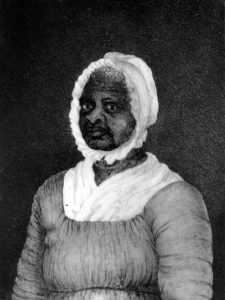
Elizabeth Freeman, also known as Mum Bett, was a slave in Sheffield, Massachusetts at the home of John and Hannah Ashley. After hearing the reading of the Massachusetts Constitution in 1780 which included the words “All men are born free and equal,” Freeman sought the advice of an attorney to sue for her freedom. The resulting court case, Brom and Bett v. Ashley, was heard in 1781 and resulted in freedom for Freeman, the first African American woman to be set free under the Massachusetts State Constitution. The case served as a precedent for freeing all slaves in Massachusetts. She said, “Any time, any time while I was a slave, if one minute’s freedom had been offered to me, and I had been told I must die at the end of that minute, I would have taken it—just to stand one minute on God’s airth [sic] a free woman— I would.”
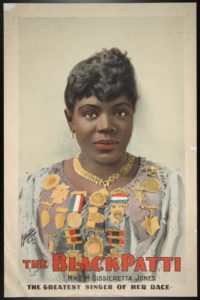
Sissieretta Jones made her singing debut in 1888. Trained in opera, she was considered the greatest African-American singer in the late 19th and early 20th centuries. Because she sang opera, she was dubbed “Black Patti” (a nickname she disliked) after Adelina Patti, the foremost operatic singer at the time. Jones sang as a soloist or with groups until 1896. She sang in the U.S., Canada, England, and on the European continent. In 1892, she sang for President Benjamin Harrison at the White House; she also appeared at the World’s Columbian Exposition in Chicago in 1893. Her troupe, the Black Patti Troubadours toured from 1896 to 1916. Although members of the company performed songs from many genres and they also included acrobats and comedians, Jones solely sang opera. Her appearances eventually included costumes and scenery.
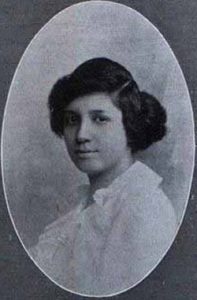
The first African-American woman to receive a Ph.D. in the U.S. in mathematics (1943, Catholic University of America), Euphemia Lofton Haynes grew up in Washington, DC and earned her undergraduate degree in mathematics from Smith College. Her master’s degree was in education from the University of Chicago. She returned to Washington, DC in 1930 where she founded the mathematics department at Miner’s Teacher’s College (today, part of the University of the District of Columbia) which focused on training African-American teachers. Through her multiple educational positions Haynes advocated for poor students and better schools and disparaged the segregation system then in place. Haynes, a lifelong Catholic, left a bequest from her estate to endow the Euphemia Lofton Haynes professorship at The Catholic University of America.

The first Black woman to write a play performed on Broadway, Lorraine Hansberry was raised in Chicago and studied at the University of Wisconsin, before moving to New York in 1950 to begin her writing career. Her best-known play is titled A Raisin in the Sun (1956). The play is the story of working-class African Americans in Chicago, living in a time of segregation. Hansberry drew upon her experiences growing up; many of the characters were inspired by members of her family. When the Broadway show was mounted, Sidney Poitier was cast as the main character. The director was also Black. The audience was enthralled, and the play was nominated for four Tony awards. It also won Hansberry the New York Drama Critics Circle Award. In 1960 it was made into a movie with the original Broadway cast. Hansberry’s second play ran for 101 performances on Broadway before closing; tragically the closing performance was the same night that she died of cancer at age 34. After her death, her former husband edited and published her three unfinished plays and compiled her writings, speeches and some unpublished works into an autobiographical anthology titled To Be Young, Gifted and Black. Hansberry has been inducted into the National Women’s Hall of Fame.
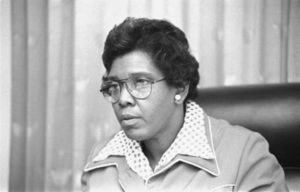
An extremely eloquent speaker with an imposing presence, attorney and Texas Representative Barbara Jordan made a name for herself during the Watergate hearings. The first African-American Congresswoman from the deep South, Jordan worked on John F. Kennedy’s 1960 presidential campaign. After she lost elections for the Texas house in both 1962 and 1964, she ran for the Texas senate in 1966 and was successful. She became the first African-American state senator since 1883 and the first African-American woman elected to the Texas Senate. In 1972 she was elected president pro tempore of the Texas senate; this well-deserved honor meant that she was the first Black woman in the U.S. to preside over any state legislative body. Jordan, always incredibly articulate, was then elected to the U.S. House in 1972. After many additional firsts, Jordan retired and taught at the University of Texas, Austin. Jordan died of pneumonia, a complication of her lengthy battle with leukemia and multiple sclerosis. A statue of her appears in the Austin, Texas Airport. She has been inducted into the National Women’s Hall of Fame.
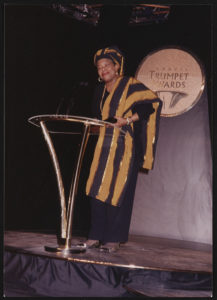
A renowned poet, screenplay writer, memoirist and civil rights activist, Maya Angelou is known for her series of seven autobiographies, the first volume of which, I Know Why the Caged Bird Sings, brought her fame and renown. In 1972, she was the first African-American woman to have a screenplay released as a movie. In 1993, she read her poem at the inauguration of President Bill Clinton. The recipient of many honors and awards, Angelou has been inducted into the National Women’s Hall of Fame. She was featured on a U.S. postage stamp in 2015.
Women participate and contribute to every area of our lives. These Black women as well as many other women, almost all of whom we have not heard about nor learned about in school, are profiled in our book, Her Story: A Timeline of the Women Who Changed America. Help us by continuing to tell women’s stories. Write women back into history! Tell young women especially, that their dreams in any field of endeavor or interest, can become a reality.
The post Celebrating Black History Month – Outstanding Black Women appeared first on Kalon Women Collective.
What Everyone 50-Plus Needs to Know About Shingles 1 Feb 2021 6:45 PM (4 years ago)
Public relations professional, activist and Nevada native Jackie loves spending time in her community hosting special events, volunteering and gardening.
Jackie woke up suddenly with a sharp pain on the inside of her leg. She immediately recognized that the pain was linked to the itchy spot she felt earlier in the day. Feelings of anxiety and panic overcame her, but thinking of her two children, Jackie decided it was best to wait until the following day to act.
“At first, I didn’t think much of the itchy rash,” said Jackie. “I thought it was a bug bite from gardening and moved on. When I woke up to a searing pain on my thigh, I knew it was something more.”
As soon as Jackie woke up the next morning, she sent a photo of her rash to a friend who suggested it looked more like shingles than a spider bite.
“I couldn’t believe it at first, but I knew she was right. I rushed to urgent care asking myself, ‘How could I have shingles?’”
Her experience with shingles was excruciatingly painful and something that she wouldn’t wish on anyone. Jackie learned that she wasn’t alone. In fact, approximately one in three people in the United States will develop shingles in their lifetime.[i]
“My biggest regret is that I didn’t know I was at risk. I didn’t bother to take the time to learn more about the disease before experiencing shingles myself. I learned the hard way that shingles isn’t just your everyday rash, it can be agonizing.”
Anyone who has gotten chickenpox is at risk of contracting shingles, also known as herpes zoster.[ii] When chickenpox becomes dormant within the nerves, it can reactivate later in life, causing shingles.[iii] Shingles typically presents as a painful, itchy rash that develops on one side of the body and can last for two to four weeks.[iv]
Jackie learned firsthand that shingles doesn’t play favorites. Prior to her diagnosis, she knew nothing about shingles. Now, as a GSK spokesperson, Jackie works to help educate adults about the disease, the severe pain it can cause and the importance of shingles vaccination.
“There are misperceptions about shingles, and I hope my story will inspire others to be proactive and talk to their doctor about the risk of the disease.”
If you’re 50 years of age and older, talk to your doctor about vaccination against shingles. Vaccination will help reduce the risk of developing shingles and the potential long-term pain from post-herpetic neuralgia, a common complication caused by the disease.
For more information, visit www.ShinglesDoesntPlayFavorites.com.
This is one person’s experience; other people’s experience with shingles may be different.
Content sponsored by GSK.
[i] CDC. Vaccine Information Statements (VISs). Live Shingles VIS. Available at: https://www.cdc.gov/vaccines/hcp/vis/vis-statements/shingles.html
[ii] CDC. Shingles (Herpes Zoster). About Shingles (Herpes Zoster). Available at: https://www.cdc.gov/shingles/about/index.html
[iii] CDC. CDC Recommends Shingles Vaccine Press Release. Available at: https://www.cdc.gov/media/pressrel/2008/r080515.htm
[iv] CDC. Shingles (Herpes Zoster). Signs & Symptoms Available at: https://www.cdc.gov/shingles/about/symptoms.html
The post What Everyone 50-Plus Needs to Know About Shingles appeared first on Kalon Women Collective.
5 Ways to Experience Wine Country From Home 1 Feb 2021 6:39 PM (4 years ago)
From canceled plans and trips to work from home and beyond, you’ve likely had to sacrifice a lot in 2020. But while you’re staying at home and doing your best to be safe during a pandemic, there’s one thing you shouldn’t have to compromise on — high-quality wine. And if you’re a seasoned wine drinker, you know that Napa Valley is the place to be.
“Napa Valley’s reputation is globally recognized, but its output is remarkably small,” says Elizabeth Vianna, winemaker at Chimney Rock Winery. “We produce only 4% of California’s total wine production, but that 4% represents the very best California has to offer.”
So, if you can’t have a travel adventure for the holidays this year, Napa Valley can come to you. Here’s how to bring a little luxury to your life and experience wine country without ever leaving your home.
1. Set the mood with music
Turn up the music and get ready to relax. Choose your go-to wine tasting playlist or search for one that’s already been created wherever you listen to music. It’s all about what gets you in the wine-tasting mood.
2. Try a virtual tasting
Escape to wine country with a virtual visit to prestigious Napa Valley wineries. For example, Wine.com is hosting “A Toast to Napa Valley” — a free virtual wine tasting event featuring some of Napa’s most acclaimed wine producers. You can even purchase wine to taste during the session that will be shipped directly to your home or can be sent to a loved one as a holiday gift. To sign up and get your wine for the tasting, go to wine.com. The session will be on the Wine.com website for several months. This is a great way to share a common experience with friends and family tuning in at the same time, all from the safety of your own home.
3. Treat yourself to a cinematic getaway
Wine and film share a profound link: the ability of a single sip or scene to whisk your senses away to a wholly different time and place. After all: Wine, popcorn and a good movie makes for a great time, any night of the week. For inspiration, check out Wine Enthusiast Magazine’s Top 10 Greatest Wine Movies of All Time by visiting www.winemag.com.
4. Get cooking
If you were really exploring Napa Valley, you’d be feasting on fresh, local fare for every meal. For your Napa day at home, consider this sublime recipe for grilled New York Steak with Porcini Mushroom Butter from prominent wine country chef Colin Crowley. Whatever you choose to cook or order in from your favorite restaurant, don’t forget to select wines that pair well with your food choices.
5. Treat yourself to a spa night
Before your dream day at home comes to a close, rest and recover with a little spa time. Light a candle, put on a different kind of face mask, pour yourself a glass of Chimney Rock Cabernet and hop into a steaming tub of bubbly water to soothe sore muscles and promote a restful night of sleep — and dream of a day where you can enjoy wine country in person. It’s the perfect cap to your Napa-themed day.
Grilled New York Steak with Porcini Butter (Serves 6)
1 C. Cabernet Sauvignon
2 sprigs fresh thyme
1 shallot, minced
1/2 C. dried porcini mushrooms
3/4 C. warm water
3/4 C. plus 2 T. unsalted butter, softened
1/2 small onion, finely minced
1 T. fresh thyme, minced
Salt and freshly ground pepper
6 NY Strip steaks, 7 ounces each
Put the wine, thyme sprigs and shallots in a small saucepan and reduce until approximately 1 tablespoon of wine is left. Strain and let cool. Rinse and soak the mushrooms 1 hour in the warm water. Drain the mushrooms; strain the liquid through a fine strainer or cheesecloth, reserving 1/4 cup. Heat 2 T. butter in a small sauté pan or skillet over low heat. Add the onion and cook until tender and translucent, about 10 minutes. Pulse the mushrooms in a food processor until chopped. Add the onion, reserved mushroom soaking liquid, wine reduction, minced thyme, and remaining 3/4 cup butter; process until blended. Season to taste with salt and pepper.
Heat the grill or broiler. Lightly sprinkle the steaks with salt and pepper and grill or broil 3 minutes each side for medium-rare. Place a dollop of butter on each steak and serve.
The post 5 Ways to Experience Wine Country From Home appeared first on Kalon Women Collective.
What Are Postbiotics and Why Should They Be Part of Your Daily Routine? 1 Feb 2021 6:36 PM (4 years ago)
Many of us are looking for ways to be more proactive about our health. One way to accomplish that is by adopting more healthy habits to support our immune systems.
“In addition to adequate sleep, exercise, eating a balanced diet and managing stress, it’s also important to support gut health,” says Keri Gans, a registered dietitian, certified yoga teacher and author of “The Small Change Diet.”
“Most people don’t realize how gut health influences the immune system,” Gans says. “It may seem like these two things are two unrelated functions in the body. But it just so happens that a majority of our immune cells originate from the gut.”
She goes on to explain that a daily routine that maintains healthy gut microbiomes is an important way to support your natural defenses. And one way to do that is through focusing on postbiotics.
Postbiotics: A simpler route to support immune function
Many health-minded people are already familiar with probiotics and prebiotics, which have been touted for their contributions to a healthy gut microbiome that supports the immune system. But when you understand how these interact with your gut, a third and simpler option emerges: postbiotics. It’s the “biotic” you may not yet have heard about.
Probiotics are live beneficial bacteria that can be added to your diet from taking supplements or functional foods with added probiotics like yogurt, sauerkraut and kimchi. Prebiotics provide the bacteria the “food” that is needed to kick off a fermentation process. That fermentation process creates beneficial metabolites which are part of the foundation for a healthy gut microbiome.
Beneficial metabolites can also be created outside of your gut through fermentation using yeast or bacteria. These metabolites are called postbiotics. Fermented outside the body, postbiotics are beneficial because they deliver those good metabolites without the bloating or gas that fermentation can sometimes cause within the gut. While you can get postbiotics by eating fermented foods, to be sure that you are getting the right composition of metabolites shown to have immune and gut health benefits, it’s best to look for postbiotics that are backed by clinical research.
Now that you know the relationship between probiotics, prebiotics and postbiotics, we’ll talk about the core benefits of integrating postbiotics into your diet to support immune function.
A simpler solution: If you’ve been taking the traditional probiotic-prebiotic approach to getting your gut into balance, it can be something of a guessing game to ensure you’re consuming the necessary amounts of soluble fiber (prebiotics) and fermented foods (probiotics) through diet. Postbiotic supplements can provide a simpler way to support your gut and immune system. Not only that but unlike probiotic supplements, postbiotic supplements contain no live cultures, so they’re more stable and have a longer shelf life.
Proactive immune support: A postbiotic EpiCor® is clinically shown to support the immune system and gut health. To access this support, however, it’s not something you specifically take on those times when you feel like your natural defenses need a helping hand. Rather, think of postbiotics as providing proactive maintenance for your immune system 365 days of the year.
Easy to access: Consuming fermented foods can help add postbiotics to your diet. Examples include kombucha, yogurt, certain cheeses, and bread. The good news is some of your favorites can bring reinforcements to your gut! However, the challenge is knowing whether diet alone can provide the adequate support that you’re looking for. Taking these foods into consideration, supplements that contain postbiotics can be a simpler route for daily immune support.
“I’ve always said that making small changes to your daily habits can make a huge impact on your health and well-being,” Gans says. “Adding more fermented foods to your diet, taking a daily supplement that contains postbiotics, is a simple but effective way to get year-round support.”
When looking for supplements that contain postbiotics, look for EpiCor on the label. EpiCor fermentate is a postbiotic, whole food ingredient, meaning nothing is extracted or purified; it acts like a multivitamin for your immune system. Additionally, clinical studies indicate EpiCor fermentate helps positively modulate the gut microbiome and may also help support nasal comfort year around.
EpiCor is found in several well-known supplement brands including Country Life and Healthy Origins. For more information and a full list of products, visit epicorhealth.com.
The post What Are Postbiotics and Why Should They Be Part of Your Daily Routine? appeared first on Kalon Women Collective.
Debunking 6 Common Tax Myths 1 Feb 2021 6:27 PM (4 years ago)
As you look ahead to doing your taxes this year, there are a number of myths you may think are true for the 2020 tax year. If so, you are not alone — tax myths and misinformation are more common than you may think. And unfortunately, these myths can be costly if they lead to mistakes on your taxes.
Here are the top six tax myths this year:
Myth 1: Anyone working at home can deduct their home office expenses
Just because you’re working from home — as many taxpayers are now — doesn’t mean you can deduct the cost and expenses of the space used for your home office. In fact, this deduction only applies to people who are self-employed. But, some taxpayers may also be eligible if they are employed by someone else but use the space to engage in self-employment activities.
Myth 2: You can claim dependent exemptions for your children
In the past, dependent exemptions allowed taxpayers to claim deductions for dependents (such as children) on their federal tax return. Unfortunately, dependent exemptions are no longer a thing. However, dependents are still very important for tax benefit purposes, including increased credits, child tax credits, filings status determination and many more benefits. Just not a simple tax deduction as in the past.
Myth 3: You must itemize to deduct charitable donations
This was the rule in prior years, but it changed for the 2020 tax year — you don’t have to itemize deductions to take a charitable donation deduction this year. Under the CARES Act, you can deduct up to $300 in charitable donations made to IRS-approved organizations when you take the standard deduction. But if you do itemize, you still get to claim the deduction anyway.
Myth 4: You can file taxes on a postcard
This is not true. When the tax regulations were revised, you may have read in the press about a new “postcard” tax return, but it was never true. The “form” that was circulated to be like a “postcard” is in fact two pages long, plus three schedules!
Myth 5: You’ve already paid taxes on your retirement distribution
Just because you had taxes withheld on your retirement or IRA distributions doesn’t mean you’ve fully paid taxes on it. This is a very common misconception. The income and withholding are still reported on your tax return, along with any other sources of income you may have, including Social Security benefits if you receive them. It’s important to gather all that information together to discuss with your tax professional whether you may still have a tax obligation for 2020.
Myth 6: There’s no longer a tax penalty for not having healthcare coverage
While the tax law went into effect in 2020 to remove the federal penalty for not having health insurance as required under the Affordable Care Act, you still have a responsibility to reconcile your advanced premium tax credit when you have insurance through your state’s Health Insurance Marketplace. Plus, some states do charge penalties if you don’t have health insurance. If you get healthcare through a marketplace, you still may get credits and must report it on your taxes. Ask your tax professional if you need help understanding your healthcare coverage as it relates to your taxes.
“If you have questions or concerns about your taxes this year, don’t wait until the last minute to get professional help,” advises Mark Steber, Chief Tax Information Officer at Jackson Hewitt Tax Services. “Making errors on your taxes can cost you both time and money — not to mention stress and anxiety! Work with a tax pro who is up-to-date on all the latest changes and can advise you on your situation.”
Learn more about getting your taxes completed this year at JacksonHewitt.com.
The post Debunking 6 Common Tax Myths appeared first on Kalon Women Collective.
Are You Susceptible to Pandemic-Related Anxiety? 9 Jan 2021 8:00 AM (4 years ago)
Since the pandemic began, many have felt the effects on their mental health. The CDC reported in June that over 40% of Americans suffered an adverse mental or behavioral health condition, with anxiety and depressive disorders topping the list. By mid-July, 53% of U.S. adults said their mental health was negatively impacted by stress and worry due to the pandemic, according to a Kaiser Family Foundation poll. As the pandemic continues, these stressors are likely to impact more people every day.
Are you or your family members likely to suffer from pandemic-related anxiety, depression or other mental health issues? If so, what can you do to support your — or your loved one’s — mental health?
First, it helps to uncover your predisposition toward certain traits or mental conditions. Just as you might seek information about your genetic predisposition for illnesses to guide your lifestyle choices, discovering your genetic traits related to mental health can help support your emotional well-being.
Thanks to a breakthrough in the translation of genetic mechanisms and traits that can influence a person’s behavioral predispositions, the Genomind Mental Health Map provides a springboard anyone can use to take action toward better mental wellness. Mental health is a function of genetics, environment, lifestyle and experiences. This is called “Mental Health 360.”
Dr. Scott Wiener, a board-certified psychiatrist focused on a biological based holistic approach, uses genetic information as a vital tool. “For far too long the practice of psychiatry has only utilized symptoms in the assessment of someone’s mental health. Evolving science has now given us the opportunity to assess the biological causes underlying those symptoms,” says Wiener. “Genomind is an essential tool in this advanced process of creating a more complete picture of mental health.”
Unlike some ancestry tests that have a spit tube for collection, you only supply a cheek swab sample for Genomind’s test. They then analyze 38 genetic variants and influences on 29 mental health traits, resulting in a report detailing 59 possible behavioral predispositions specific to your genetic profile. Genomind provides resources and recommended actions from trusted advocacy groups to help improve your wellness and quality of life.
The Genomind Mental Health Map identifies 7 Core Genetic Mental Health Capabilities:
1. Stress and anxiety
2. Mood
3. Focus and memory
4. Sleep
5. Eating behavior
6. Social behavior
7. Habits and substance use
Exploring your genetic predispositions in these seven crucial areas increases your self-awareness and empowers you to take steps toward better self-care.
Stress and anxiety
If you are one of many who have the variant of the gene involved in stress hormone regulation (FKBP5), you may experience a heightened stress response.
Knowing that this variant may contribute to your stress response allows you to target this biological mechanism to help regulate it. For example, supplements such as magnesium and/or rhodiola rosea have been shown to help. You can also try mindfulness techniques like grounding exercises and meditation.
Sleep and focus
Or you may find you have a variant of the gene associated with excessive brain cell signaling (CACNA1C), which can result in traits such as:
- Trouble falling asleep
- Moodiness
- Inattentiveness
You can target this mechanism with supplements shown to stabilize it, like omega-3 fatty acids and magnesium. You could also make changes in your behavior or environment, such as reevaluating your sleep habits and schedule.
Memory
A variant of a gene that encodes for a protein critical to brain cell growth and repair (BDNF) is associated with predispositions involving memory and stress response, which may affect your working memory and stress levels.
Fortunately, BDNF levels can be boosted through exercise. People with this variant are even more likely to benefit from the brain-enhancing effects of exercise than people without it. Knowing you have this predisposition may help jump-start your exercise routine.
Knowledge is power
Discovering your genetic predispositions and their potential impact on your mental wellness can help you prevent problems before they develop, or reduce them if they already exist.
“At Potomac Psychiatry, we have used genetic testing to evaluate over 2000 patients, and have found it to be a highly effective tool to provide a patient with critically important information,” says award-winning psychiatrist and author Dr. Bruce Kehr. “Understanding genetic predispositions and implementing associated epigenetic recommendations will likely result in better mental health outcomes.”
Knowledge of your genetic predispositions is a vital tool for boosting your overall mental health and well-being — especially during challenging times.
Interested? Check out the 20% off special for the Genomind Mental Health Map on Amazon.
The post Are You Susceptible to Pandemic-Related Anxiety? appeared first on Kalon Women Collective.
Cozy Calorie-Conscious Dishes and Cooking Tips for 2021 9 Jan 2021 7:55 AM (4 years ago)
Many celebrations are now held virtually, but sharing your favorite recipes and making them together can be a great way to feel close together while miles apart. With a few simple steps and recipe updates, you’ll be able to share new delicious and low-cal dishes with loved ones without having to abandon your personal wellness goals. Here are a few cooking tips for 2021!
Smart ingredient updates
When looking at creating recipes, consider healthful ingredient swaps. For example, in some recipes for baked goods, unsweetened applesauce or ripe mashed bananas can be used as a substitute for butter. Another example is adding additional spice such as cinnamon or nutmeg for flavor in order to cut some of the sugar content. For dishes that require bread, opt for Sara Lee® Delightful® White made with Whole Grain Bread. This new option is healthy and delicious, high in fiber and 45 calories per slice, without sacrificing flavor.
Go for lean proteins
Make lean proteins a staple for your celebratory meals this season. Some examples might include turkey, chicken, beans, lentils and fish. If cooking meat, trim the fat and consider alternate preparation methods such as baking, sauteing and steaming. Finally, consider skipping sauces and gravies that are often high in saturated fat and sodium. If you want to add flavor, try fresh herbs that add a bit of zest without many additional calories.
Try new recipes
In addition to your favorites, consider new recipes for your winter festivities. And remember, celebrations can happen any time of day. For example, this recipe for Avocado, Egg and Spinach Sandwich is excellent for a joyful brunch or as a staple in your “new year, new you” eating regimen. Another option is an afternoon gathering featuring appetizers. Consider these stuffed mushrooms for the perfect savory appetizer or starter for any meal!
 Stuffed Mushrooms
Stuffed MushroomsThe post Cozy Calorie-Conscious Dishes and Cooking Tips for 2021 appeared first on Kalon Women Collective.
